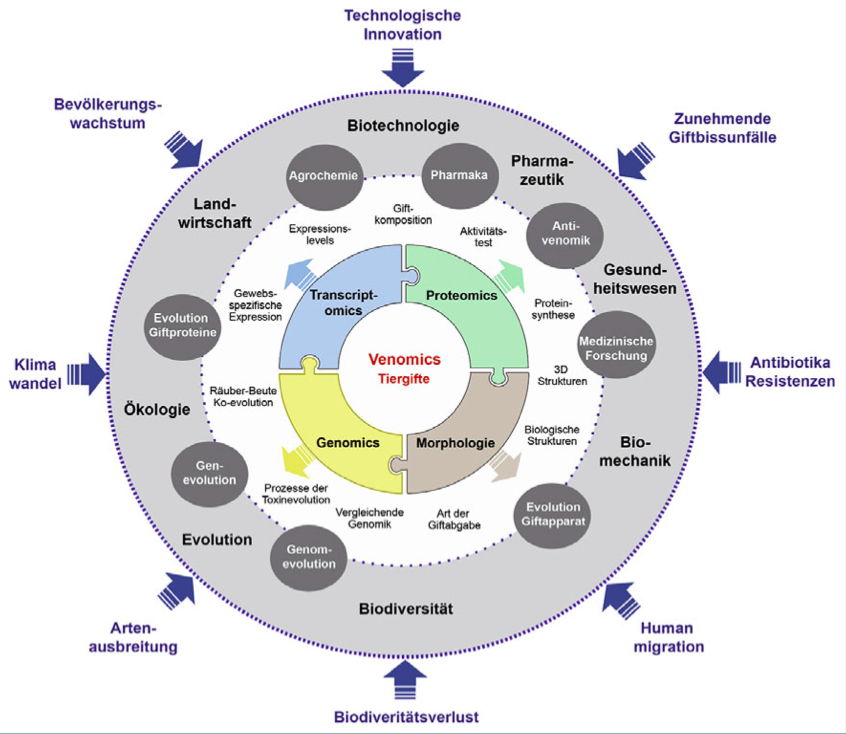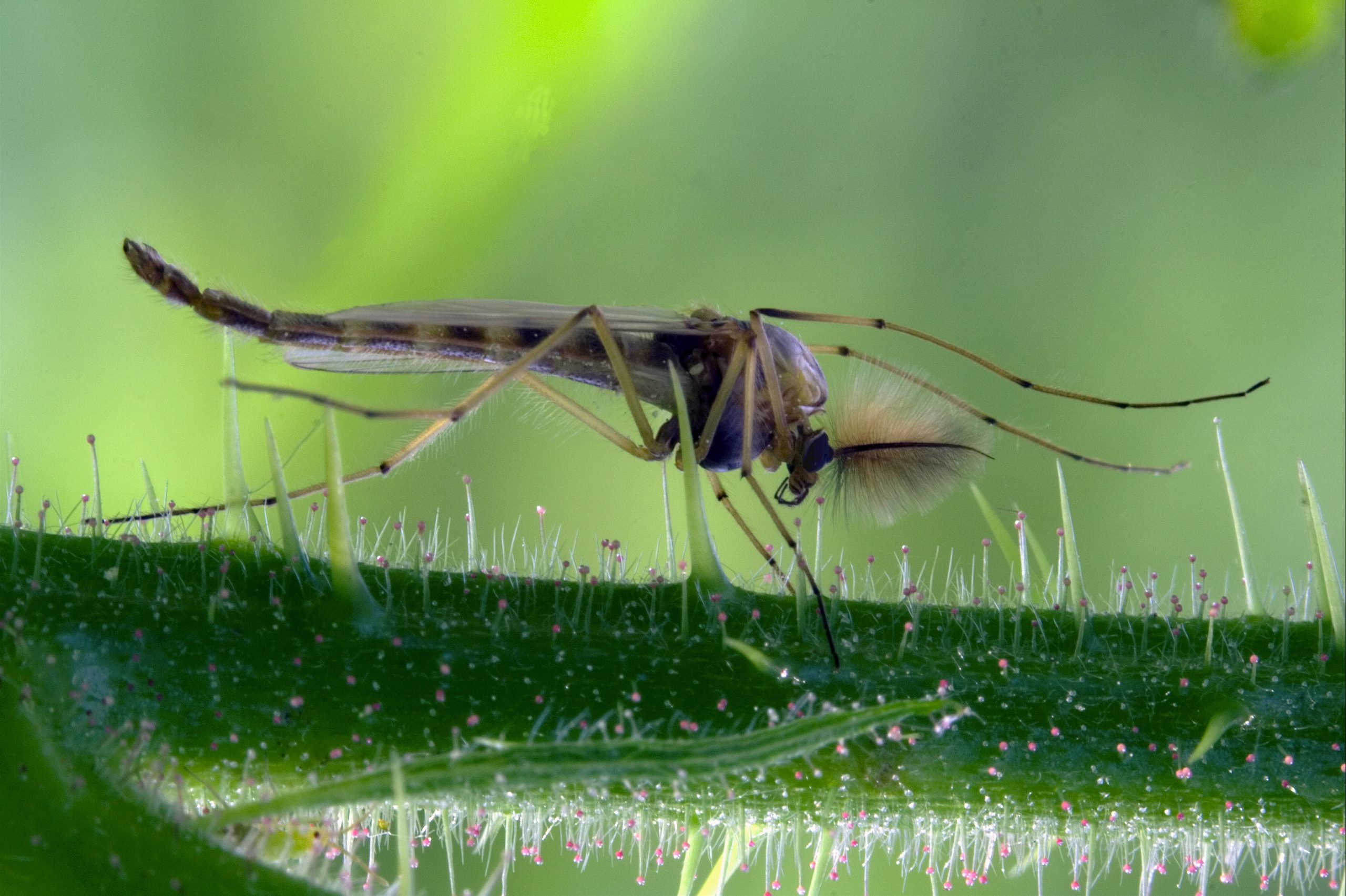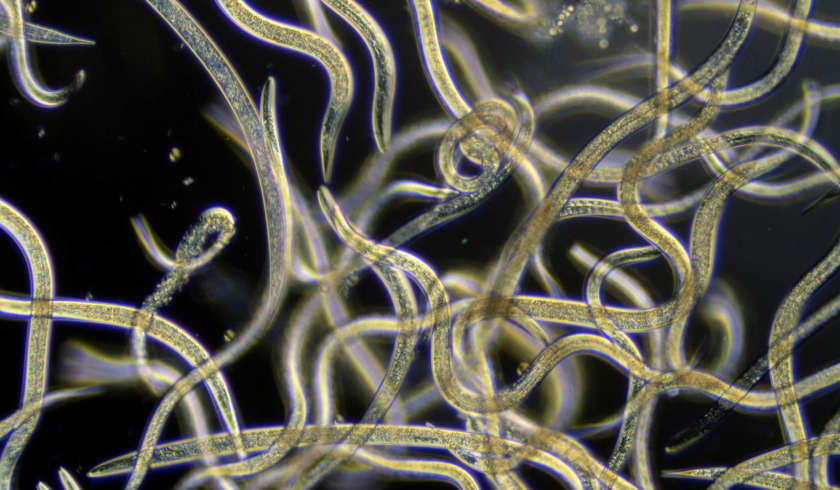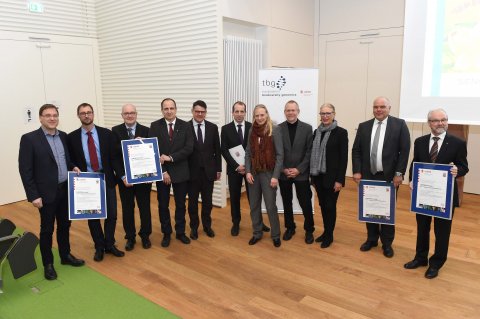News

Schnelle Genomanalyse eines Windhundes setzt neuen Maßstab für Artenschutz-Forschung
23.10.2024
Der fortschreitende weltweite Verlust an Artenvielfalt macht es zunehmend erforderlich, genetische Informationen bedrohter Arten schnell zu erfassen und auszuwerten. Die Abteilung für Humangenetik des Bioscientia Instituts für Medizinische Diagnostik GmbH in Ingelheim am Rhein und das hessische LOEWE-Zentrum TBG haben in einem Kooperationsprojekt in weniger als einer Woche das komplette Genom eines Windhundes erfasst und ausgewertet – ein Fortschritt, der die Genomforschung im Arten- und Biodiversitätsschutz nachhaltig beeinflussen könnte. Die Studie wurde im Fachjournal „GigaByte“ veröffentlicht.
Bei der Analyse des Windhund-Erbguts, die das Bioscientia Institut und das LOEWE-Zentrum TBG gemeinsam vornahmen, kam eine neue Technologie zum Einsatz: Ganze Genome werden sehr präzise und in langen Abschnitten, sogenannten „long reads“, sequenziert. Am Beispiel des Windhundes, eines der schnellsten Landtiere, gelang dies in Rekordzeit. Dies ist nicht nur ein technischer Erfolg, sondern wurde auch als symbolisches Projekt initiiert, um der Herausforderung des Artensterbens zu begegnen.
Die neuartige Kooperation der Bioscientia-Humangenetiker*innen mit den Forscher*innen des LOEWE-Zentrums TBG setzt damit einen neuen Maßstab und stellt ein effektives Instrument für die Biodiversitätsforschung bereit.
Weitere Informationen finden Sie in der Pressemitteilung bei Senckenberg. (Foto: ashva – stock.adobe.com, 164543555)
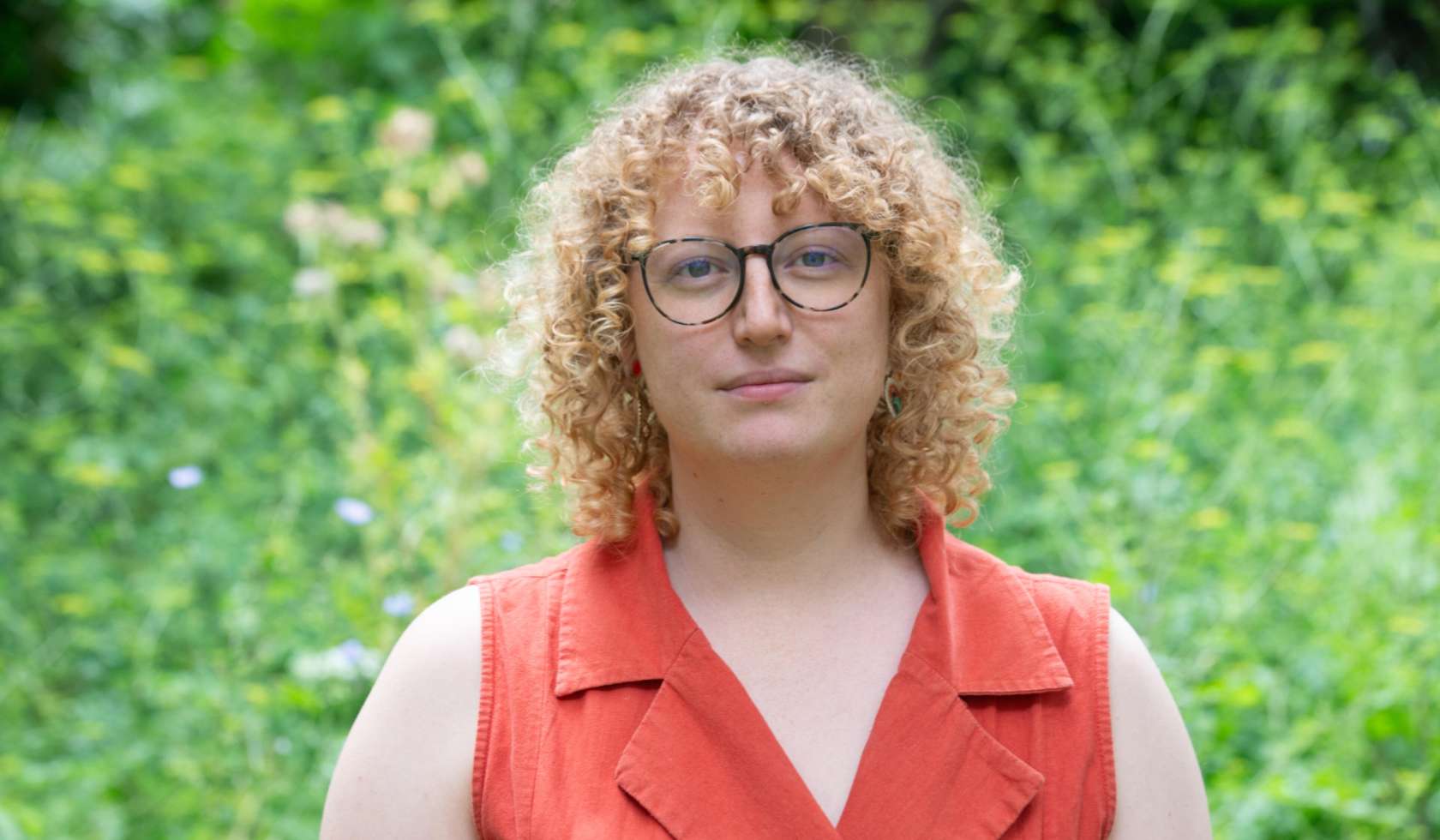
Erforschung der genetischen Vielfalt
08.10.2024
Dr. Deborah Leigh ist neue Professorin für Genomisches Biomonitoring
Die genetische Vielfalt von Lebewesen zu erforschen und damit zu ihrer Erhaltung beizutragen – das ist das Ziel von Deborah Leigh. Als neu berufene Kooperations-Professorin für Genomisches Biomonitoring schlägt sie dadurch eine Brücke von der Grundlagenforschung zur angewandten Forschung. Entsprechend gut passt ihr Forschungsprofil zur Ausrichtung des hessischen LOEWE-Zentrums für Translationale Biodiversitätsgenomik (TBG), an dem sie nun einen von vier Programmbereichen leitet. Leighs Ernennung erfolgte im Rahmen einer Gemeinsamen Berufung der Senckenberg Gesellschaft für Naturforschung, an der das LOEWE-Zentrum TBG angesiedelt ist, und der Goethe-Universität Frankfurt; dort ist sie Mitglied des Fachbereichs Biowissenschaften.
Die neue Frankfurter Professorin Deborah Leigh legt ihren Forschungsschwerpunkt auf die genetische Vielfalt innerhalb von Arten. Diese zeigt die Unterschiede im Erbgut von Individuen und Populationen einer Art auf und beeinflusst unter anderem, wie gut sich Arten an veränderte Umweltbedingungen anpassen können. „Diese genetische Vielfalt ist eine entscheidende Komponente der gesamten biologischen Vielfalt, denn die Eigenschaften der einzelnen Arten wirken sich wesentlich auf die Gemeinschaft von Lebewesen in Naturräumen aus und bestimmen maßgeblich die Leistung und Widerstandsfähigkeit ganzer Ökosysteme“, erläutert Leigh
Weitere Informationen finden Sie in der Pressemitteilung bei Senckenberg. (Foto: Sven Tränkner)
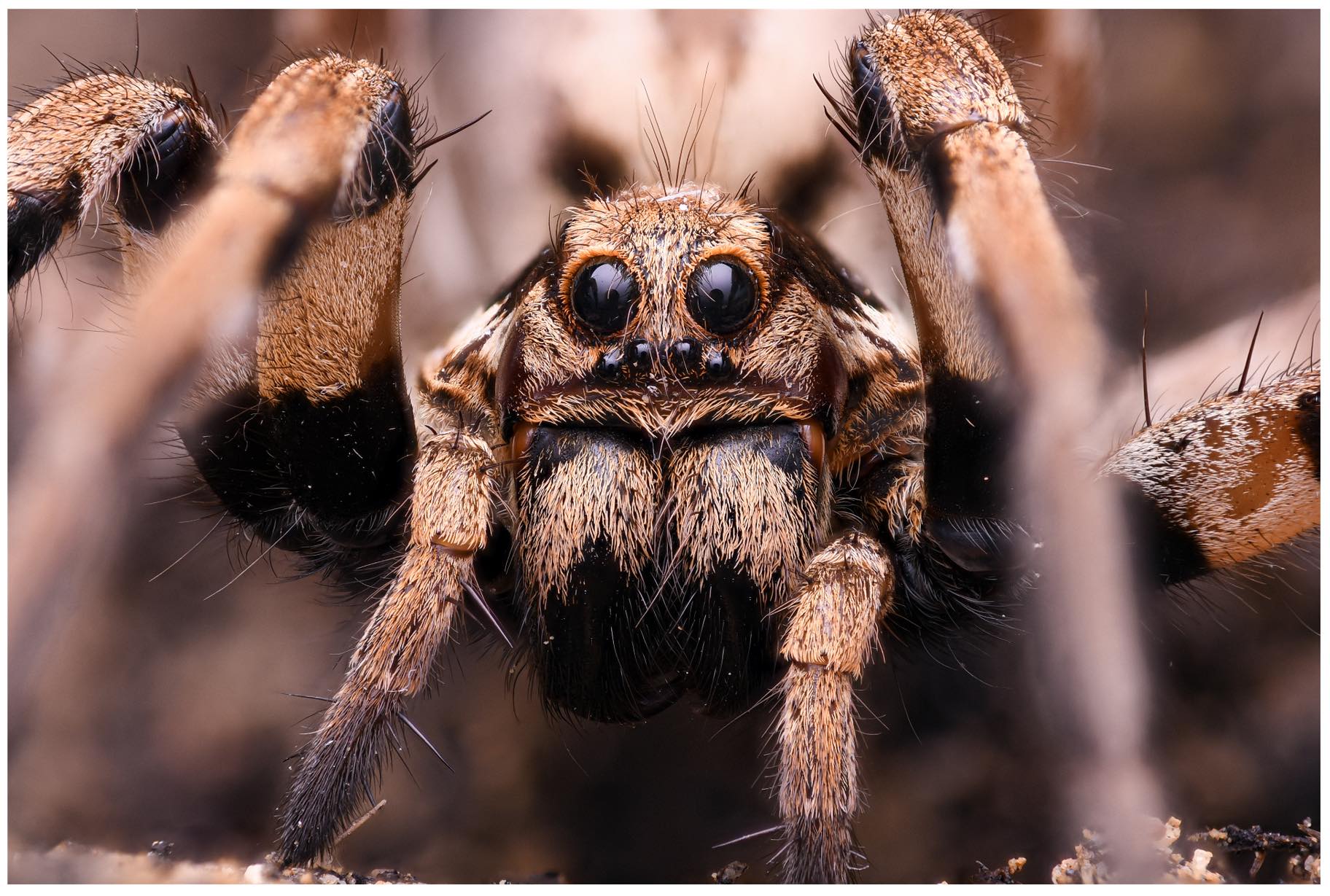
Enzyme in Spinnengiften zeigen bioökonomisch nutzbares Potenzial
07.10.2024
Mit weltweit rund 52.000 Arten sind Spinnen besonders artenreich und produzieren die komplexesten aller Tiergifte: Das Gift einer Spinne kann mehr als 3.000 Moleküle beinhalten. Diese gehören hauptsächlich zur Gruppe der kleinen Neurotoxine und dienen dem Fangen von Insekten. Ein Forschungsteam des LOEWE-Zentrums TBG hat sich nun den bisher unbekannten Bestandteilen im Spinnengift gewidmet und dabei Erstaunliches entdeckt. In ihrer Studie zeigen sie, dass neben den bisher im Blickpunkt stehenden Neurotoxinen eine große Vielfalt an Enzymen in Spinnengiften zu finden ist. Ihre Ergebnisse sind im Journal „npj Biodiversity“ veröffentlicht, das zur Gruppe der „Nature“-Fachzeitschriften gehört.
„In der Vergangenheit deuteten einige wissenschaftliche Arbeiten zwar auf die Präsenz von Enzymen in Spinnengiften hin, doch eine gezielte Suche nach ihnen wurde nie durchgeführt. Wir haben uns dieser Aufgabe gestellt und systematisch die Rohdaten aller Spinnen, die bisher hinsichtlich ihrer Gifte analysiert wurden, nach Enzymen durchsucht. Dabei konnten wir zeigen, dass in ihren Giften insgesamt tatsächlich mehr als 140 verschiedene Enzymfamilien zu finden sind“, erläutert Studienleiter Dr. Tim Lüddecke, Leiter der Arbeitsgruppe „Animal Venomics“ am Gießener IME-BR und der Justus-Liebig-Universität Gießen. „Dies bedeutet unter anderem, dass wir die chemische Vielfalt in Spinnengiften bisher dramatisch unterschätzt haben, da alle Kalkulationen zur Komplexität lediglich auf den Neurotoxinen basieren.“
Weitere Informationen finden Sie in der Pressemitteilung bei Senckenberg. (Foto: Louis Roth)
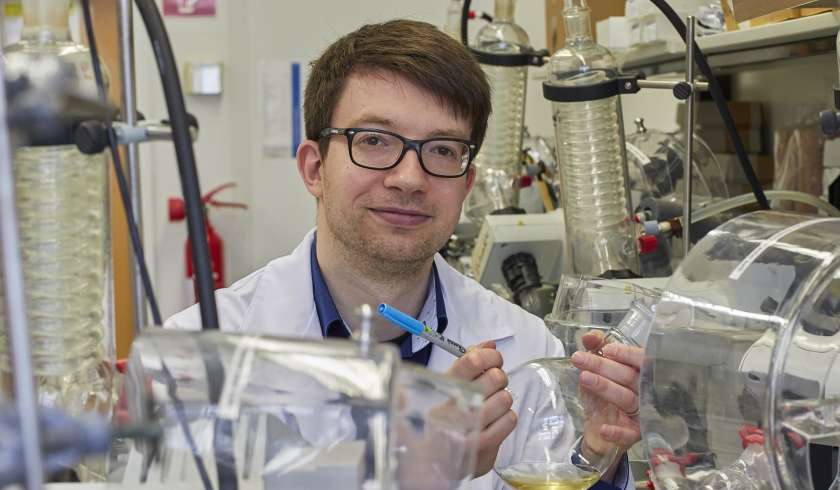
Naturstoffforscher Eric Helfrich erhält ERC Starting Grant
06.09.2024
Künstliche Intelligenz hilft bei Entdeckung neuer Wirkstoffe in Bakterien
Der Chemische Biologe Eric Helfrich, Professor für Naturstoffgenomik an der Goethe-Universität Frankfurt und Co-Sprecher des LOEWE-Zentrum für Translationale Biodiversitätsgenomik (LOEWE-TBG) war in der Einwerbung der hoch kompetitiven Starting Grants des Europäischen Forschungsrats (European Research Council – ERC) erfolgreich und erhält für die kommenden fünf Jahre 1,5 Millionen Euro. Er forscht an Naturstoffen, die in Bakterien durch eine Kombination Enzym-katalysierter und spontaner Reaktion hergestellt werden.
Prof. Dr. Eric Helfrich befasst sich in seinem ERC-Projekt „COMBINE“ („Bacterial Alkaloid Biosynthesis off the Beaten Path: Compartmentalization and Non-Enzymatic Transformations in Non-Canonical Alkaloid Biosynthesis“) damit, wie Bakterien komplexe Biomoleküle herstellen, die die Basis vieler Medikamente sind. Diese sogenannten Naturstoffe werden durch vielstufige enzymatische Prozesse gebildet, wobei in Bakterien alle Gene, die für diese Enzyme kodieren, nebeneinander in der DNA vorliegen. Daher kann man durch Genom-Analysen das Potenzial eines Bakteriums zur Produktion neuer Naturstoffe ermitteln.
Mit Starting Grants unterstützt der ERC exzellente Forscherinnen und Forscher, die sich in den ersten Jahren nach ihrer Promotion ein eigenes Forschungsteam aufbauen und sich mit einem viel versprechenden Forschungsprojekt wissenschaftlich etablieren wollen.
Weitere Informationen finden Sie in der Pressemitteilung bei der Goethe Universität. Foto: Jürgen Lecher
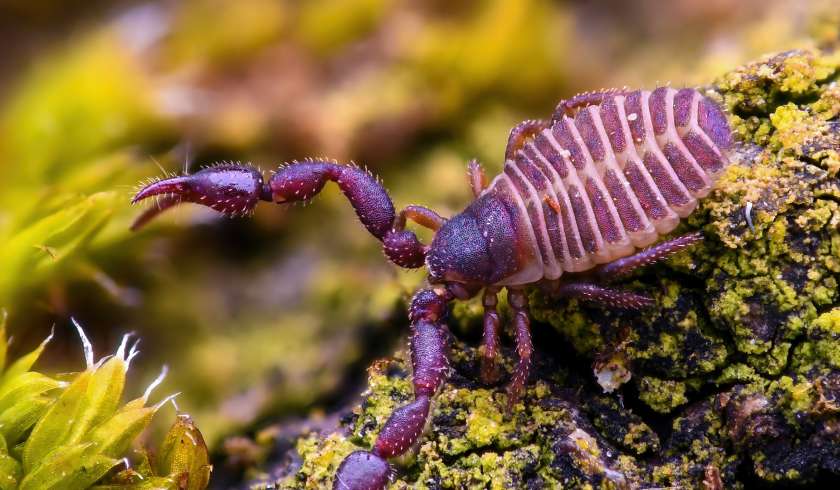
Das Gift des Bücherskorpions wirkt auch gegen Krankenhauskeime
06.08.2024
Der nur wenige Millimeter große Bücherskorpion (Chelifer cancroides) gilt in Mitteleuropa als das bekannteste Mitglied der Pseudoskorpione, einer Ordnung der Spinnentiere. In Wohnräumen jagt er Hausstaubmilben sowie Staub- und Bücherläuse. Auch in Bienenstöcken erlegt er Schädlinge. Dabei setzt er häufig sein Gift ein. Hessische Forschende haben nun erstmals die Bestandteile dieses Gifts umfassend charakterisiert – und dabei Moleküle mit starker Wirkung auch gegen sogenannte Krankenhauskeime entdeckt. Die Ergebnisse können künftig dabei helfen, schwer zu behandelnde Infektionskrankheiten zu bekämpfen.
Nun gelang es einem Team hessischer Forscher*innen des LOEWE-Zentrums TBG und weiterer Institutionen erstmals, alle bekannten Mitglieder einer Giftstofffamilie des Bücherskorpions (Chelifer cancroides) im Labor künstlich herzustellen und ihre Aktivität zu untersuchen. Dabei stießen die Wissenschaftler*innen auf eine überraschend stark ausgeprägte Wirksamkeit gegen einen bekannten Krankenhauskeim, den sogenannten Methicillin-resistenten Staphylococcus aureus(MRSA). Staphylokokken sind häufig vorkommende Bakterien, die insbesondere die Haut und Schleimhäute besiedeln. Die Besonderheit der MRSA-Varianten ist dabei, dass sie gegen das Antibiotikum Methicillin resistent sind und dadurch schwer behandelbare Infektionen beim Menschen verursachen, unter anderem nach operativen Eingriffen.
Weitere Informationen finden Sie in der Pressemitteilung bei Senckenberg. (Foto: Louis Roth)
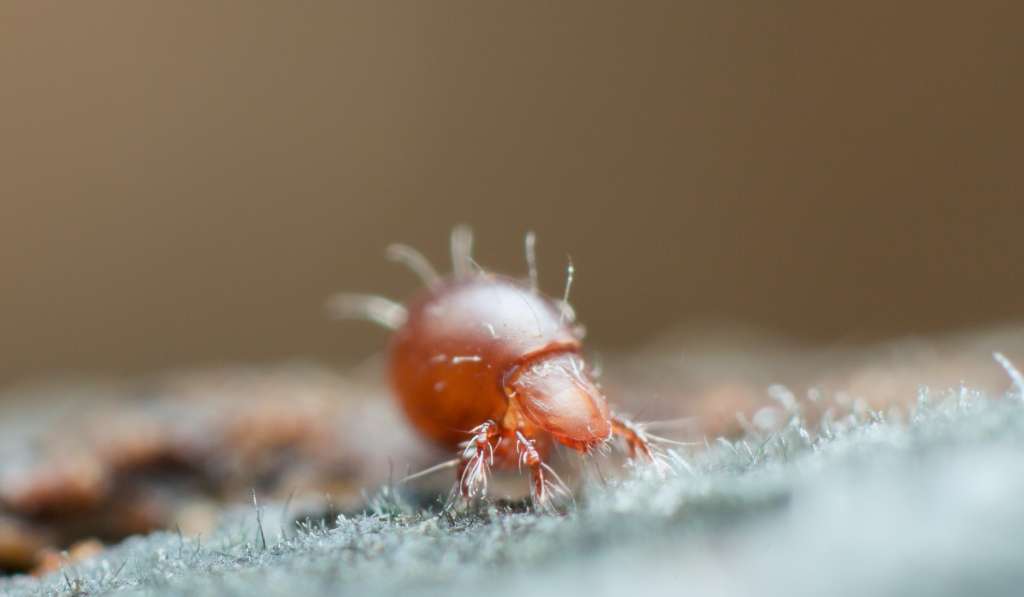
Unbekannte Helfer des Bodens: Wie wirbellose Tiere den Zersetzungsprozess von Pflanzen unterstützen
11.06.2024
Wenn Pflanzen oder Teile von ihnen absterben, tragen Milliarden kleiner Lebewesen dazu bei, dieses organische Material abzubauen. Doch nicht nur Mikroorganismen wie Bakterien und Pilze sind am Zersetzungsprozess beteiligt, sondern auch einige wirbellose Tiere. Welche Voraussetzungen ihr Erbgut dafür bereithält, untersuchte nun ein Team von Forscher*innen des LOEWE-Zentrums TBG und weiterer Institutionen. Ihre Erkenntnisse tragen dazu bei, bessere Vorhersagen über den Kohlenstoff- und Nährstoffkreislauf im Boden zu treffen.
Sie leben in Heerscharen im Erdboden und sind durch eine Vielzahl von Arten vertreten: mikroskopisch kleine, wirbellose Bodentiere wie zum Beispiel Springschwänze und Hornmilben. Sie bauen organische Substanzen ab und setzen Nährstoffe für die Pflanzen frei. In einer Studie, die im Fachjournal „Molecular Ecology“ veröffentlicht wurde, haben Forscher*innen nun entdeckt, dass ein weit größerer als bisher angenommener Anteil ihrer Arten auch direkt am Abbau von abgestorbenem Pflanzenmaterial beteiligt sein könnte. Diese Fähigkeit wurde bislang vor allem Bakterien und Pilzen zugeschrieben.
Bei detaillierten Genomanalysen unterschiedlicher Arten von Springschwänzen (Collembola) und Hornmilben (Oribatida) wiesen die Forscher*innen in den meisten Arten exemplarisch ein Gen nach, das ihnen die Herstellung eines dieser speziellen Enzyme ermöglicht.
Weitere Informationen finden Sie in der Pressemitteilung bei Senckenberg. (Foto: Andy Murray/chaosofdelight.org)
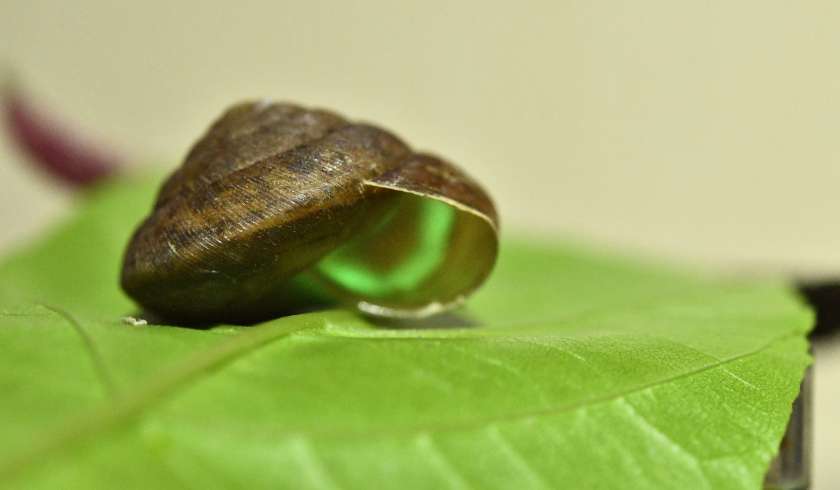
Eine leuchtende Landschnecke ist „Internationales Weichtier des Jahres 2024“
18.04.2024
Mehr als 6.000 Personen beteiligten sich an der öffentlichen Abstimmung
Eine Landschnecke, die konstant leuchten kann, ist das „Internationale Weichtier des Jahres 2024“! Der „lebende Leuchtstab“ Phuphania crossei erhielt bei der öffentlichen Online-Abstimmung die meisten Stimmen. Zuvor hatte sich die Schnecke, gemeinsam mit vier weiteren Weichtier-Arten, als Finalistin des internationalen Wettbewerbs durchgesetzt. Dieser ging in diesem Jahr in seine vierte Runde, nachdem er Ende 2020 vom Senckenberg Forschungsinstitut und Naturmuseum Frankfurt, dem LOEWE-Zentrum-TBG und Unitas Malacologica, der internationalen Gesellschaft für Molluskenforschung, initiiert wurde, um die enorme Artenvielfalt der Weichtiere bekannter zu machen und für ihren Schutz zu sensibilisieren.
Mehr als die Hälfte aller Stimmen konnte die Schnecke aus Thailand gewinnen und zog damit an zwei weiteren Schnecken-Arten, einer Muschel und einem kleinen Tintenfisch vorbei. Phuphania crossei ist eine luftatmende Landschnecke, die nur in den tropischen Wäldern Thailands vorkommt. Ihr Name leitet sich von den Phu Phan-Bergen im Nordosten des Landes ab. Ihre Besonderheit: Sie produziert fortwährend biolumineszentes Licht, das heißt, sie strahlt ein grünliches Licht aus wie ein lebender Leuchtstab.
Weitere Informationen finden Sie in der Pressemitteilung bei Senckenberg. Foto: Yuichi Oba
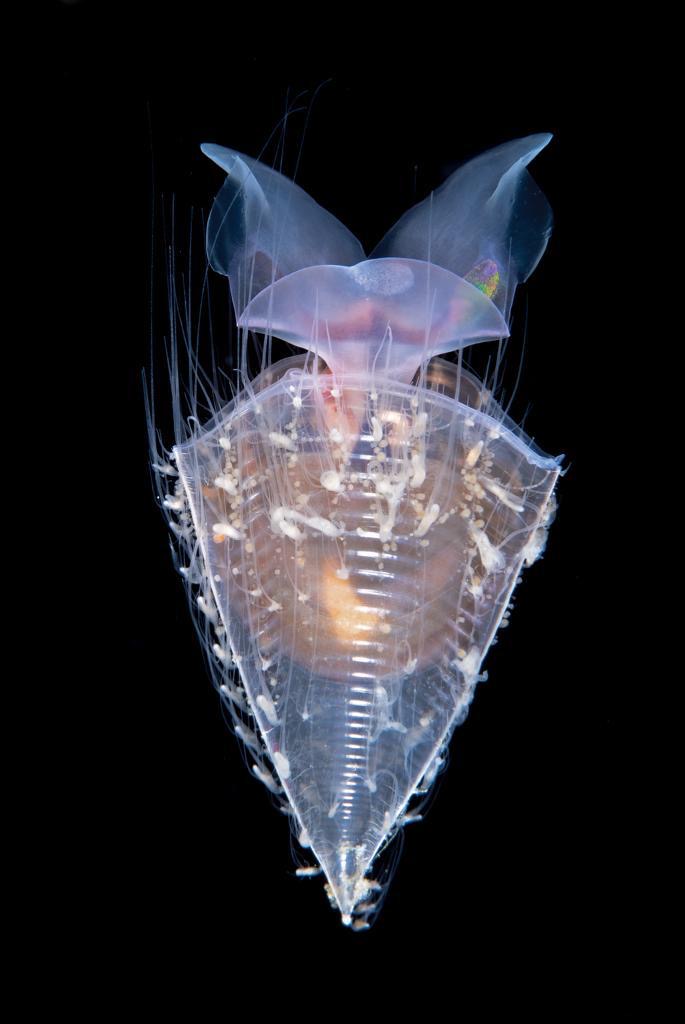
Wahl zum „Internationalen Weichtier des Jahres 2024“ Heute beginnt die öffentliche Online-Abstimmung
13.03.2024
Welches Weichtier wird 2024 den Titel „Internationales Weichtier des Jahres“ tragen? Ab heute können sich alle Interessierten an der öffentlichen Online-Abstimmung beteiligen. Der Wettbewerb geht in diesem Jahr in seine vierte Runde, nachdem er Ende 2020 von der Senckenberg Gesellschaft für Naturforschung, dem LOEWE-TBG und der Unitas Malacologica, der weltweiten Gesellschaft für Molluskenforschung, ins Leben gerufen wurde. Ziel ist es, der großen und artenreichen Gruppe der Weichtiere zu mehr Aufmerksamkeit und Schutz zu verhelfen. Das Erbgut der Gewinner-Art wird vollständig entschlüsselt.
Fünf ganz unterschiedliche Arten haben es in diesem Jahr ins Finale geschafft im Rennen um den Titel „Internationales Weichtier des Jahres 2024“: die Gepunktete Papierblasenschnecke (Micromelo undatus), der „lebende Leuchtstab“ (Phuphania crossei), die Coosa-Flussmuschel (Amblema elliottii), der Gewellte Seeschmetterling (Clio recurva) und der Atlantische Kurzkalmar (Lolliguncula brevis). Sie wurden von einer Jury aus Wissenschaftler*innen der drei Partnereinrichtungen Senckenberg, LOEWE- TBG und Unitas Malacologica aus mehr als 50 Nominierungen der Wissenschaftscommunity ausgewählt. Die Abstimmung läuft vom 13. März bis zum 14. April 2024 um 23:59 Uhr (MEZ) auf der Webseite der Senckenberg Gesellschaft für Naturforschung unter dem Link
https://www.senckenberg.de/molluscoftheyear2024
Weitere Informationen finden Sie in der Pressemitteilung bei Senckenberg. (Foto:Steven Kovacs)
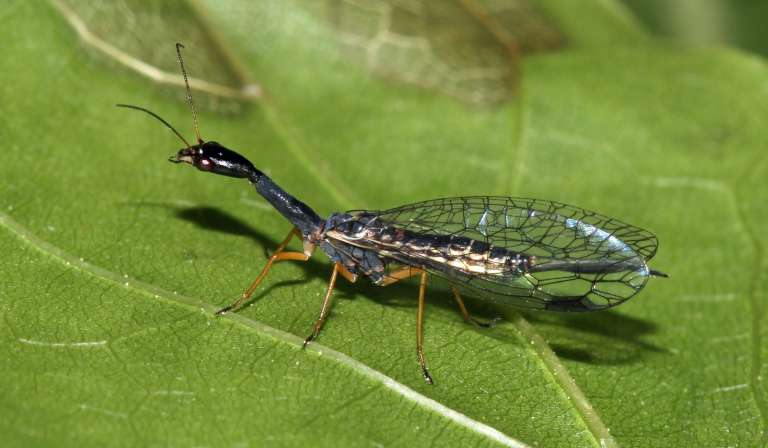
Beständig seit Millionen von Jahren: Erste vollständige Genomsequenzierung einer Kamelhalsfliege trägt wesentlich zum Verständnis ihrer evolutionären Entwicklung bei
08.02.2024
Sie haben eine auffällige Gestalt, sind tagaktive, räuberische Insekten und kommen auch in unseren Breitengraden vor. Zu weiterer Bekanntheit hat den Kamelhalsfliegen (Raphidioptera) die Kür der Schwarzhalsigen Kamelhalsfliege zum „Insekt des Jahres 2022“ verholfen. Dennoch werden diese zierlichen Vertreter der Netzflüglerartigen häufig übersehen. Wissenschaftler*innen aus Frankfurt, Müncheberg und Wien haben nun erstmals das Erbgut einer Kamelhalsfliege vollständig analysiert. Die Daten geben Einblick in die evolutionäre Entwicklung dieser Insektenordnung und ermöglichen genomische Vergleiche.
„Mit den 669 Millionen Basenpaaren haben wir einen riesigen Datensatz, an dem wir versuchen werden zu verstehen, welche genetischen Anpassungen es diesen ‚lebenden Fossilien‘ ermöglichten, den Einschlag des Asteroiden zu überleben.“ – betont Dr. Magnus Wolf, Erstautor der Studie. Die Daten des filigranen Insekts wurden im Laborzentrum des hessischen LOEWE-Zentrums für Translationale Biodiversitätsgenomik erhoben, das bei der Senckenberg Gesellschaft für Naturforschung in Frankfurt am Main angesiedelt ist.
Weitere Informationen finden Sie in der Pressemitteilung bei Senckenberg. Foto: Harald Bruckner
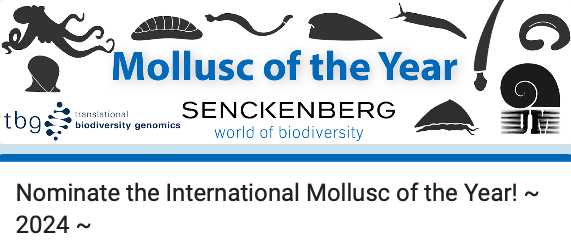
“Internationales Weichtier des Jahres” - Nominierungen offen für 2024
12.12.2023
Das Senckenberg Forschungsinstitut und Naturmuseum Frankfurt, das LOEWE-Zentrum für Translationale Biodiversitätsgenomik und Unitas Malacologica rufen erneut zur Wahl des „Internationalen Weichtiers des Jahres 2024“ auf. Nominieren Sie Ihre Lieblingsmolluske für eine kostenlose Genomsequenzierung. Jede lebende Molluskenart, in jedem Lebensraum, überall auf der Welt, ist teilnahmeberechtigt! Aus allen Nominierungen werden Senckenberg, LOEWE-TBG und Unitas Malacologica fünf Top-Mollusken auswählen, und der endgültige Gewinner wird im März/April 2024 durch eine öffentliche Abstimmung ermittelt.
Weitere Informationen und Nominierungsformular:
https://tbg.senckenberg.de/mollusc-of-the-year-nominations/
Nominierungsfrist ist der 21. Januar 2024.
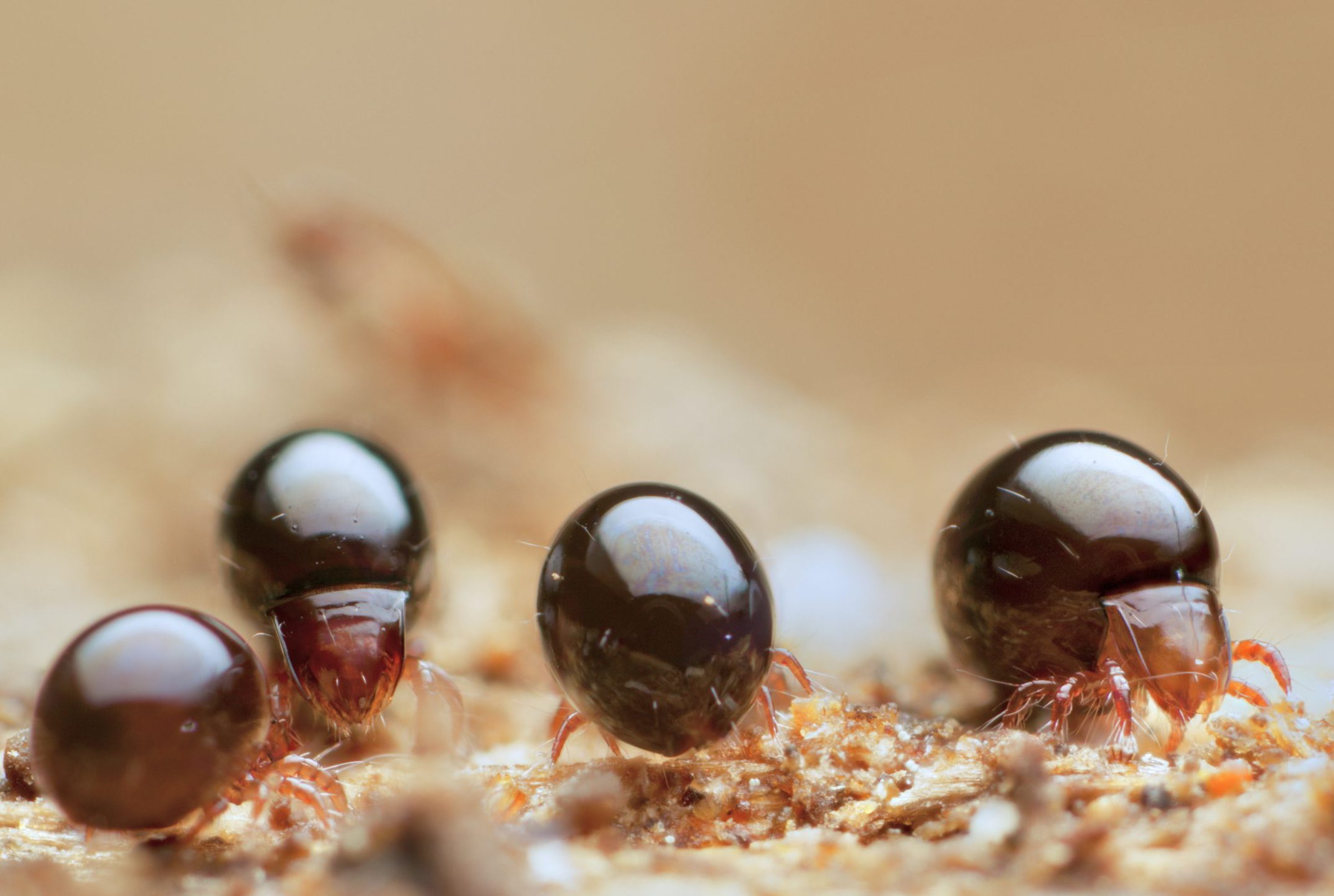
Artenreichtum unter der Erde - Neue umfassende Genomdaten wirbelloser Bodenlebewesen bieten Einblicke in deren biologische Vielfalt und Evolution
12.12.2023
Sie sind winzig klein, enorm vielfältig und im Erdboden weit verbreitet: wirbellose Bodenlebewesen wie Springschwänze, Hornmilben, Tausendfüßer oder Fadenwürmer. Im Ökosystem Boden übernehmen die oft nur unter dem Mikroskop sichtbaren Tiere wichtige Aufgaben. Daher rücken sie auch zunehmend in den Blickpunkt von behördlichen Maßnahmen zur Erhaltung der biologischen Vielfalt im Boden. Doch durch welche Eigenschaften und Fähigkeiten genau zeichnen sich die einzelnen Arten aus, welche Informationen gibt ihr Erbgut preis und wie haben sie sich im Laufe der Evolution entwickelt?
Mit dem Projekt „MetaInvert“ stellt ein internationales Team von Wissenschaftler*innen umfangreiche genomische Daten zu 232 Arten dieser bisher wenig erforschten Organismen bereit. Die Informationen tragen erheblich zur Identifizierung sowie zum Wissen über Zusammensetzung und Funktion von Gemeinschaften und die Entdeckung evolutionärer Anpassungen an Umweltbedingungen bei.
In einer Studie, veröffentlicht im Journal „Communications Biology“ aus der Gruppe der „Nature“-Fachzeitschriften, beschreiben sie ihren Ansatz und die von ihnen angewendeten neuen Methoden der Genomik.
Weitere Informationen finden Sie in der Pressemitteilung bei Senckenberg. (Foto: Andy Murray, chaosofdelight.org)
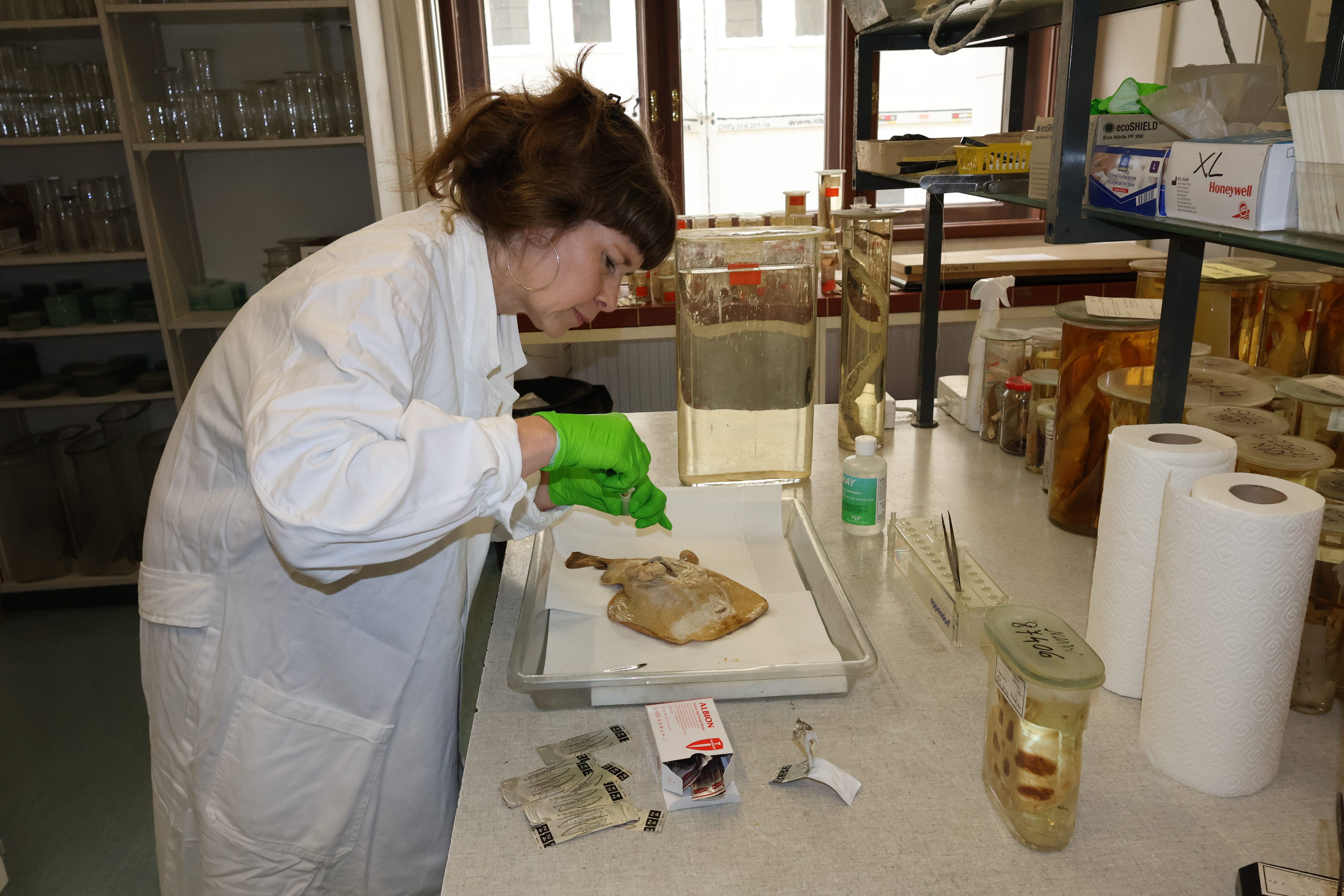
Verborgen oder ausgestorben? Genomanalyse eines 120 Jahre alten Zitterrochen-Sammlungsstücks bestätigt Artstatus
14.11.2023
In Museumssammlungen finden sich immer wieder kleine „Schätze“ – das macht sie so wertvoll für die Forschung. Mit den heutigen Analysemethoden lassen sich den oft Jahrhunderte alten Archiven neue, detaillierte Erkenntnisse entlocken. Wissenschaftler*innen des Naturhistorischen Museums Wien und des hessischen LOEWE-Zentrums TBG haben nun die genetischen Daten einer seltenen und vermutlich bereits ausgestorbenen Zitterrochen-Art erhoben. Sie wurde 1897 bis 1898 bei der zweiten Österreichisch-Ungarischen Tiefsee-Expedition im Roten Meer gesammelt, konserviert und beschrieben – seitdem jedoch nie wieder beobachtet. Die neuen Ergebnisse bestätigen, dass der Zitterrochen Torpedo suessii eine eigene Art innerhalb der Gattung darstellt.
„Angesichts der zunehmenden Bedrohung der Ökosysteme der Meere und der darin lebenden Fischgemeinschaften aufgrund von Klimawandel und Verschmutzung ist es von entscheidender Bedeutung, die Artenvielfalt der Meere zu inventarisieren, um sie zu schützen. Mit unseren Genomanalysen und den daraus gewonnenen Informationen über Arten wollen wir die biologische Vielfalt auf der Erde besser verstehen und damit zu ihrer Erhaltung beitragen“, so Dr. Carola Greve, Laborleiterin am LOEWE-Zentrum TBG.
Weitere Informationen finden Sie in der Pressemitteilung bei Senckenberg. (Foto: NHM Wien)
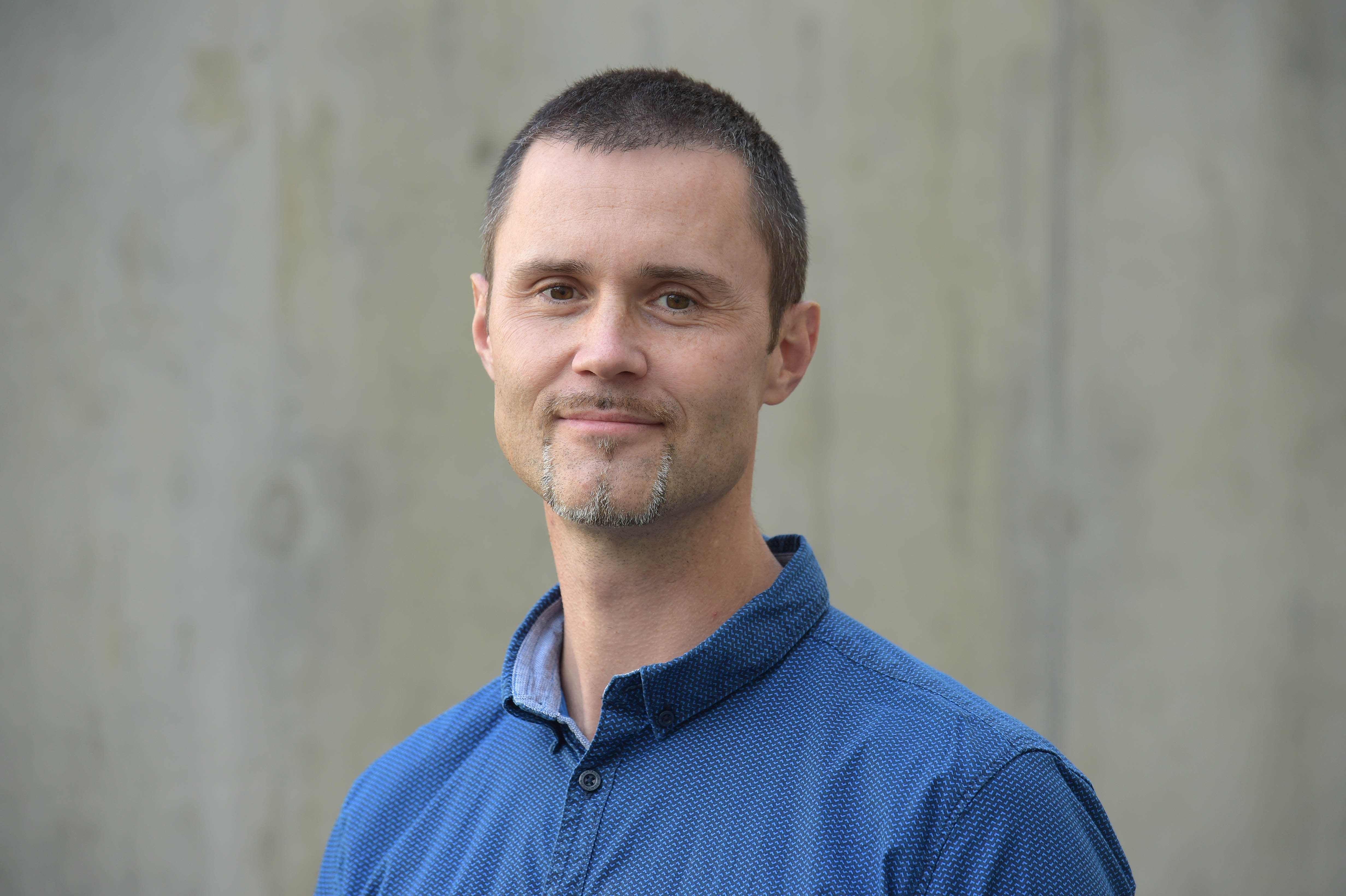
Von Fledermäusen lernen: ERC Synergy Grant 2023 für Senckenberg-Genomiker Prof. Michael Hiller
26.10.2023
Krankheiten durch Infektionen oder aufgrund von zunehmendem Alter stellen die Menschheit weltweit vor große Herausforderungen, sei es aus medizinischer, gesundheitspolitischer, ökonomischer oder emotionaler Perspektive. Für die Suche nach Lösungen sind interdisziplinäre und innovative Forschungsansätze nötig. Dass die Natur dabei als hilfreiches Vorbild dienen kann, möchten vier Wissenschaftler*innen, unter ihnen Prof. Dr. Michael Hiller von der Senckenberg Gesellschaft für Naturforschung, in einem gemeinsamen Forschungsprojekt zeigen. Dafür nehmen sie die Langlebigkeit und Krankheitsresistenz von Fledermäusen in den Blick. Vom Europäischen Forschungsrat erhält das internationale Team für das Vorhaben „BATPROTECT“ in den kommenden sechs Jahren einen „ERC Synergy Grant“ in Höhe von etwa 12 Millionen Euro.
Das übergreifende Ziel ihres Vorhabens „BATPROTECT“ ist es, einen Durchbruch im Verständnis der molekularen Grundlagen der verlängerten Lebenserwartung und der Krankheitsresistenz von Fledermäusen zu erzielen, um künftig neue Wege zur Verbesserung der menschlichen Gesundheit und von Krankheitsverläufen zu finden.
Weitere Informationen finden Sie in der Pressemitteilung bei Senckenberg. Foto: Sven Tränkner
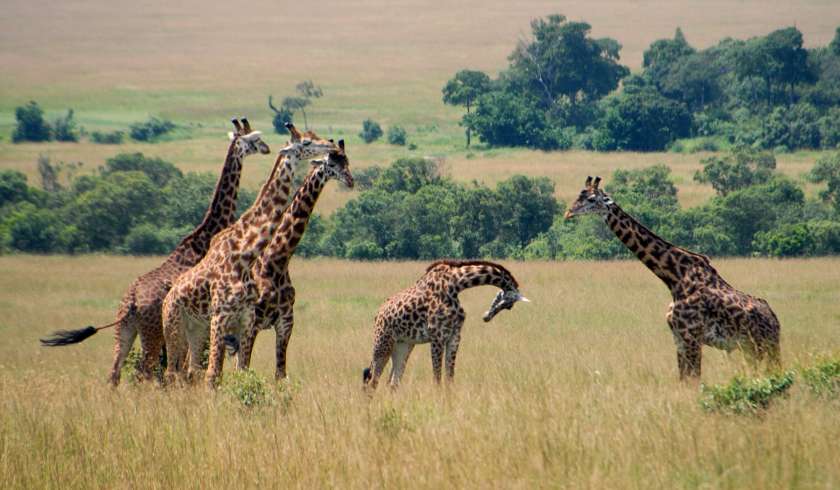
Darwin oder Kimura – Natürliche Selektion oder alles Zufall? Neue Literaturübersicht will eine hitzige Debatte zwischen Evolutionsbiolog*innen klären
09.10.2023
Manche Geheimnisse der Natur beschäftigen Wissenschaftler*innen schon seit Jahrzehnten – dazu gehören auch die Prozesse, die die Evolution vorantreiben. So spaltet die Frage, ob bestimmte Unterschiede zwischen und innerhalb von Arten durch natürliche Auslese oder durch zufällige Abläufe verursacht werden, die Evolutionsbiolog*innen bis heute. Ein internationales Forscherteam hat nun Licht in eine wissenschaftliche Auseinandersetzung um die Evolutionstheorien von Darwin und dem japanischen Genetiker Kimura gebracht. Ihr Fazit: Die Debatte ist durch das Nebeneinander verschiedener Interpretationen verworren. (…).
Stehen diese beiden Theorien nun im Widerspruch zueinander, oder lassen sie sich miteinander vereinbaren? Dies ist eine der Fragen, die Forscher der Senckenberg Gesellschaft für Naturforschung, der britischen Universitäten Durham und East Anglia sowie des Hessischen LOEWE-Zentrums TBG in einer Literaturübersicht diskutieren. In ihrem in der Zeitschrift „Biological Reviews“ veröffentlichten Beitrag listen sie mehrere Aspekte der Neutralen Theorie auf, die unterschiedlich interpretiert werden können.
Weitere Informationen finden Sie in der Pressemitteilung bei Senckenberg. (Foto:Peter Prokosch, www.grida.no/resources/2496)
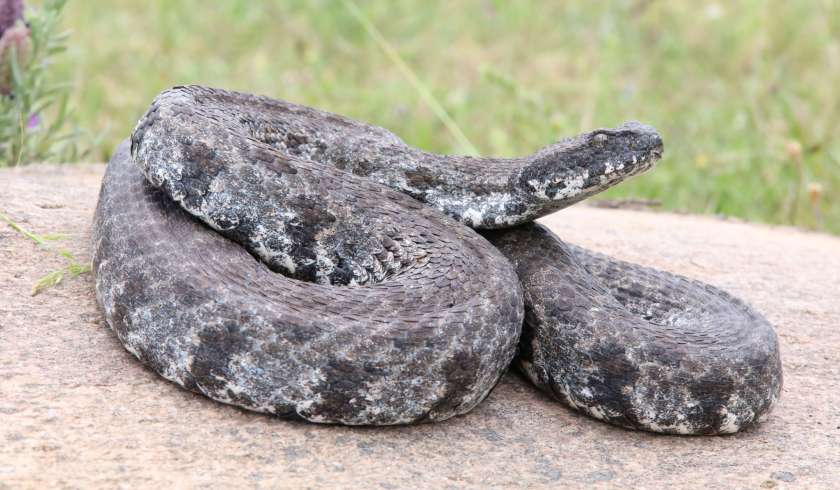
Wie hessische Forschende Giftschlangen auf den Zahn fühlen
15.09.2023
Nicht nur in den Tropen führen Schlangenbisse zu gefährlichen Vergiftungen – auch Bisse europäischer Giftschlangen können ernste körperliche Beschwerden hervorrufen. Doch ihr Gift enthält auch Wirkstoffe, die künftig gegen bakterielle Krankheitserreger eingesetzt werden könnten. Wissenschaftler*innen des Gießener Fraunhofer Instituts für Molekularbiologie und Angewandte Ökologie IME und des hessischen LOEWE-Zentrums TBG erforschen die Gifte europäischer Schlangen und haben kürzlich den Giftcocktail der in Griechenland heimischen Milosviper entschlüsselt. Ihre Publikation ist in der Fachzeitschrift „Frontiers in Molecular Biosciences“ erschienen. (…)
Die nun veröffentlichte Arbeit unterstreicht, dass es auch jenseits der besonders gefährlichen, tropischen Arten noch viel über Schlangengifte zu lernen gibt. „Es ist von enormer Bedeutung, dass wir ein besseres Verständnis zur Giftzusammensetzung, der Funktion und den Vergiftungserscheinungen auch von europäischen Giftschlangen entwickeln“, so Lüddecke. „Wir werden dieser Aufgabe nun mit besonderem Fokus nachgehen und dabei insbesondere unsere in Deutschland vorkommenden Arten ins Visier nehmen. Über deren Gifte wissen wir ebenfalls nur wenig“, ergänzt Schulte.
Weitere Informationen finden Sie in der Pressemitteilung bei Senckenberg. (Foto: Thomas Lindner)
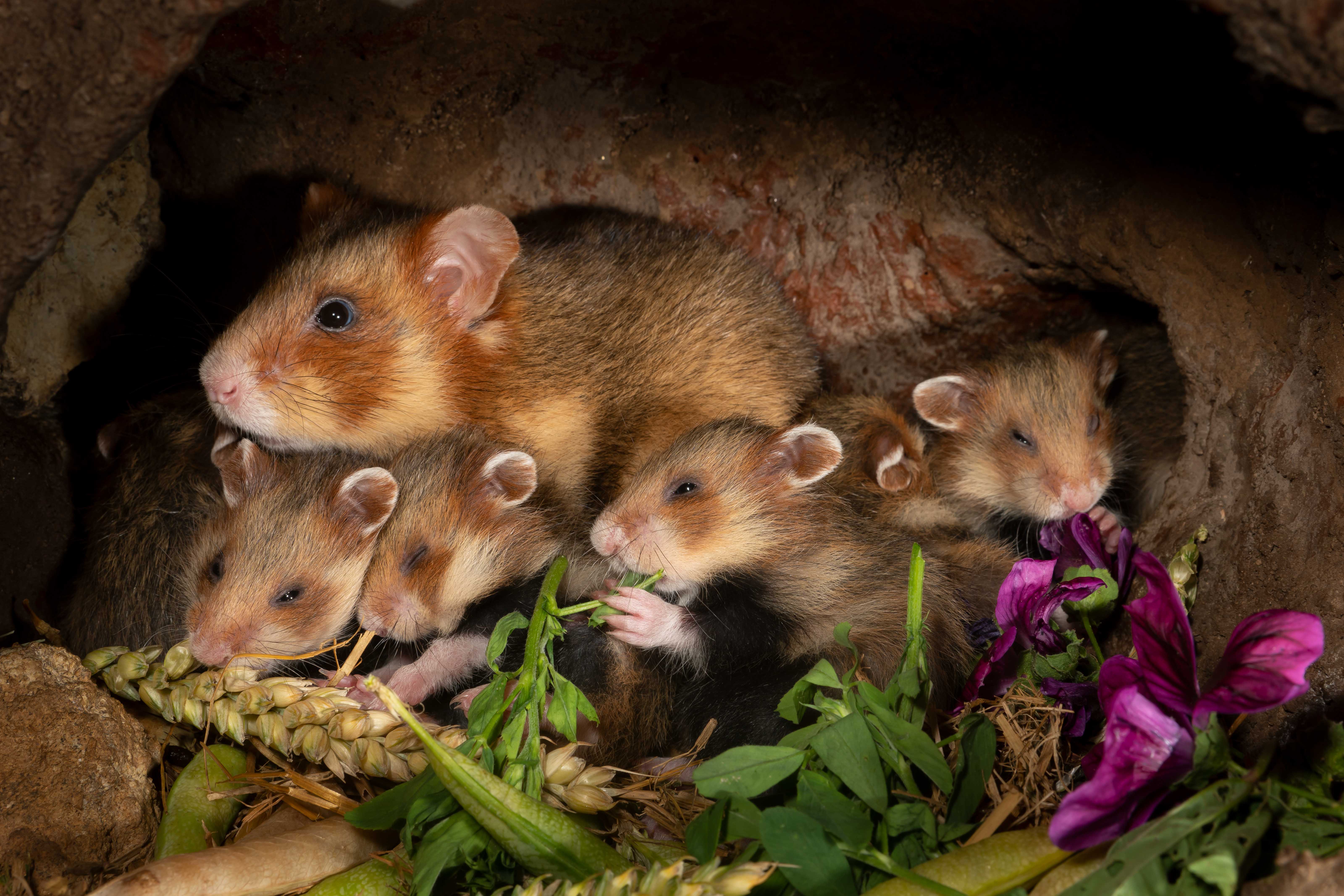
Zukunftsfähige Unterstützung des Feldhamsters - Neues hessisches Kooperations- und Forschungsprojekt zur Erhaltung der bedrohten Art gestartet
02.08.2023
Er zählt zu den am stärksten bedrohten Säugetierarten Westeuropas: der Feldhamster (Cricetus cricetus), auch Europäischer Hamster genannt. Einst als massenhaft auftretender „Erntevernichter“ und „Plage“ sowie für seine mehrfarbigen Felle intensiv gejagt, wird seit den 1970er-Jahren ein deutlicher Rückgang seiner Bestände verzeichnet. Ohne weitere Forschung und Erhaltungsmaßnahmen könnte der Feldhamster laut Prognosen in den kommenden rund zwanzig Jahren vollständig aussterben.
Dies in Hessen zu verhindern ist das Ziel des neuen Projekts „MetaHamster“, das vor allem genomische Daten in den Blick nimmt und an dem Wissenschaftler*innen und Naturschutzakteur*innen verschiedener Institutionen, darunter der Senckenberg Gesellschaft für Naturforschung und des LOEWE-Zentrums TBG beteiligt sind. Das Projekt wird vom Land Hessen im Rahmen des Lore-Steubing-Instituts (LSI) für Naturschutz und Biodiversität des Hessischen Landesamts für Naturschutz, Umwelt und Geologie (HLNUG) gefördert.
Weitere Informationen finden Sie in der Pressemitteilung bei Senckenberg. (Foto: Manfred Sattler)
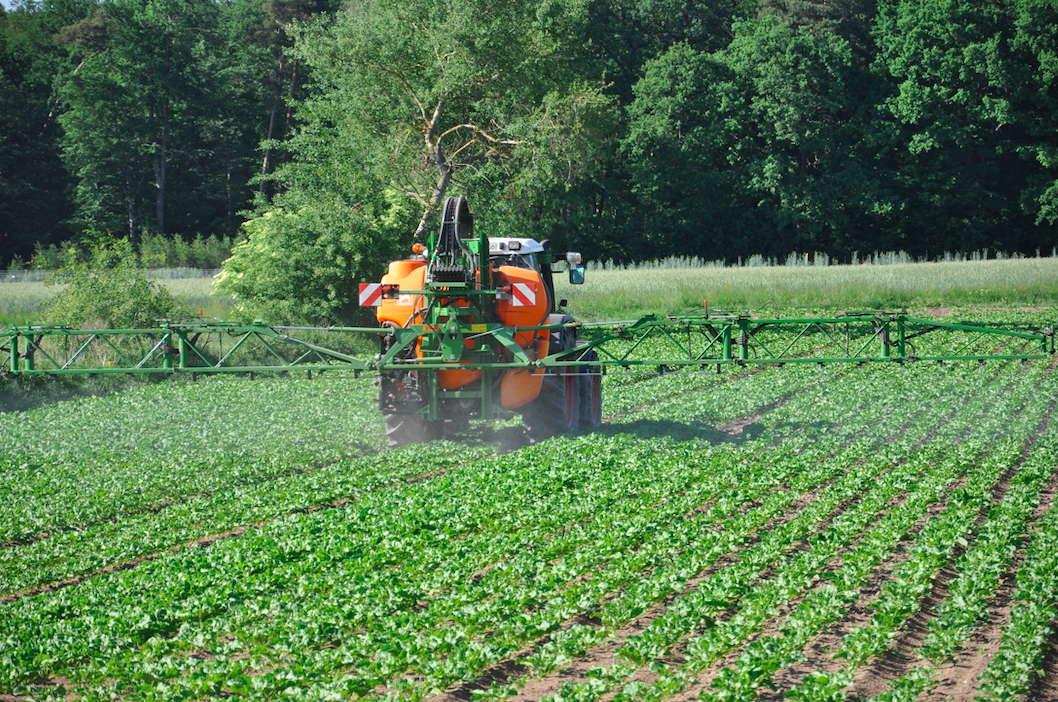
Wie Chemikalieneinsatz und der Verlust der Artenvielfalt zusammenhängen
30.06.2023
Chemikalien in der Umwelt werden in der Wissenschaft nicht ausreichend als eine der Ursachen für den Schwund der Artenvielfalt in den Blick genommen. Dies zeigen 40 Wissenschaftlerinnen und Wissenschaftler des Forschungsnetzwerks RobustNature von Goethe-Universität und kooperierenden Instituten, darunter auch das LOEWE-Zentrum TBG in einer Studie, die jetzt in der Zeitschrift „Nature Ecology and Evolution“ veröffentlicht worden ist. Die Forschenden sehen in einem interdisziplinären Ansatz eine neue Chance, den Verlust der Biodiversität besser zu verstehen, um effizienter Gegenmaßnahmen ergreifen zu können. Dazu untersuchen sie die Wechselwirkungen zwischen chemischer Belastung und Biodiversitätsverlust.
Das Autorenteam fordert eine stärkere interdisziplinäre Ausrichtung der Forschungsaktivitäten, um die Auswirkungen von chemischen Stoffen auf die Biodiversität besser verstehen und mildern zu können.
Weitere Informationen finden Sie in der Pressemitteilung der Goethe Universität. (Foto: Markus Bernards)
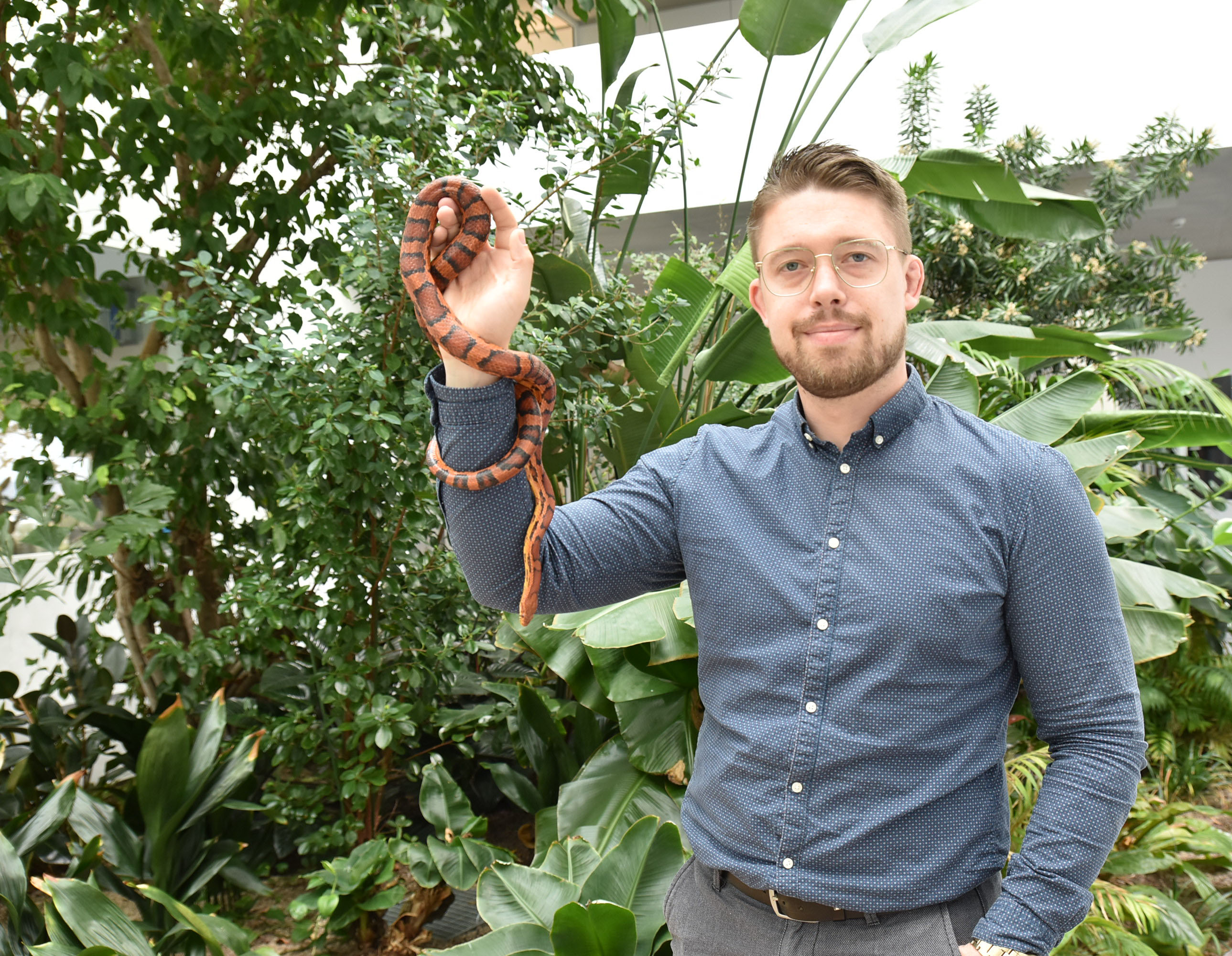
Gießener Tiergiftforscher trifft auf Nobelpreisträger*innen
13.06.2023
Zu den 72. Lindauer Nobelpreisträgertagungen vom 25. bis 30. Juni 2023 hat er eine der begehrten Einladungen erhalten: Naturstoffforscher Dr. Tim Lüddecke vom Fraunhofer-Institut für Molekularbiologie und Angewandte Oekologie (IME) und dem LOEWE-Zentrum für Translationale Biodiversitätsgenomik (TBG).
Es ist eine Veranstaltung mit Tradition, die junge Wissenschaftler*innen jedes Jahr aufs Neue begeistert: Seit 1953 treffen bei den Lindau Nobel Laureate Meetings herausragende Nachwuchsforscher*innen auf Nobelpreisträger*innen, die sogenannten Laureates. Die Tagungen in der bayerischen Kleinstadt Lindau am Bodensee dienen dem intellektuellen Austausch und rotieren thematisch zwischen den Nobelpreis-Disziplinen Physik, Chemie und – wie in diesem Jahr – Physiologie/Medizin. Das mehrstufige Auswahlverfahren zur Teilnahme ist international und hochkompetitiv; insgesamt wurden 635 Nachwuchswissenschaftler*innen zum Austausch mit den Laureates eingeladen. Nach diesem einmaligen Erlebnis bleiben die Teilnehmenden ein Leben lang innerhalb des Lindau Alumni Networks vernetzt.
Weitere Informationen finden Sie in der Pressemitteilung bei Senckenberg. (Foto: Désirée Schulz)
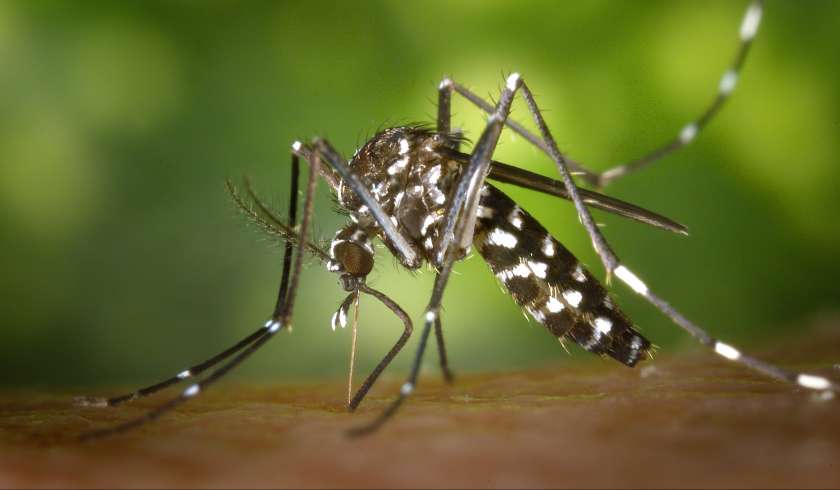
Eine Feuerwehr gegen gefährliche Stechmücken. Neue technologische Entwicklung aus Hessen kann vor der Verbreitung tropischer Krankheiten schützen
02.06.2023
Mit der warmen Jahreszeit beginnt in Europa wieder die Hochsaison der Stechmücken. Während sie und ihre Larven vielen Tieren als Beute dienen und sie damit eine wichtige Rolle im Ökosystem einnehmen, empfinden Menschen die kleinen Blutsauger eher als lästig. Mittlerweile können sie uns jedoch auch gefährlich werden. Denn zunehmend kommen in Mitteleuropa Stechmücken aus tropischen und asiatischen Regionen vor. Diese können unter anderem das Zika- oder das West-Nil-Virus übertragen, die gefährliche Fiebererkrankungen auslösen. Ein Team von Wissenschaftler*innen des hessischen LOEWE-Zentrums für Translationale Biodiversitätsgenomik und Partnerinstitutionen zeigt, wie die weitere Ausbreitung dieser Stechmückenarten gezielt und umweltschonend verhindert werden kann.
Weitere Informationen finden Sie in der Pressemitteilung bei Senckenberg. (Foto: Wikimedia Commons, James Gathany, CDC, public domain)

Senckenberg Biodiversity Genomics Symposium am 21. Juni
31.05.2023
Das Senckenberg Biodiversity Genomics Symposium, das in Zusammenarbeit mit PacBio organisiert wird, findet bereits zum dritten Mal in Folge statt.
Am 21. Juni werden Wissenschaftler*innen aus Europa und darüber hinaus ihre Erfahrungen mit der Long-Read-Sequenzierung (HiFi-Sequenzierung) austauschen, um Genome taxonomisch vielfältiger Organismen in Referenzqualität zu generieren und wichtige biologische Fragen zu klären. Die halbtägige virtuelle Veranstaltung bietet Präsentationen von Forscher*innen, die HiFi-Sequenzierung für die Biodiversitätsgenomforschung einsetzen, die neuesten technologischen und bioinformatischen Informationen von PacBio-Wissenschaftler*innen sowie eine Live-Fragerunde.
Bestätigte Redner des Symposiums: Prof. Mark Blaxter von Tree of Life, Wellcome Sanger Institute; Carles Galià-Camps von der Universität Barcelona – IRBio; Ioannis Chrysostomakis, Temitope Oriowo und Francisco J. Ruiz-Ruano vom Leibniz-Institut zur Analyse des Biodiversitätswandels (LIB); Nadège Guiglielmoni von der Universität Köln; Gözde Cilingir von der Universität Zürich und der Eidgenössischen Forschungsanstalt WSL; Yury Bukhman vom Morgridge Institute for Research; sowie Prof. Eric Helfrich, Lisa Männer, Ariadna Morales, Marcel Nebenführ, Shenglin Liu und Hannah Muelbaier von LOEWE-TBG.

Die Vielfalt der Seide
Das Gen zur Seidenproduktion bei Insekten und Spinnen zeigt individuelle Strukturen
15.04.2023
Menschen schätzen Seide als Naturfaser für Textilien – für Lebewesen wie Schmetterlinge, Spinnen oder Köcherfliegen hingegen ist sie Grundlage zum Überleben, sei es als Kokon für ihren Nachwuchs oder zum Beutefang. Die aus Proteinen bestehende Seide, elastisch oder klebrig (oder beides zugleich), wird als Faser oder, wie bei den Köcherfliegen, als Flüssigkeit über Drüsen abgesondert. Wo genau im Erbgut der Tiere die Fähigkeit verankert ist, unterschiedliche Beschaffenheiten von Seide zu bilden, und wie sich diese im Detail im Laufe der Evolution entwickelt hat, ist bisher kaum erforscht.
Neue Ergebnisse zeigt eine Studie unter Beteiligung von Wissenschaftler*innen des hessischen LOEWE-Zentrums TBG und des Senckenberg Forschungsinstituts und Naturmuseums Frankfurt, die im Fachjournal „Proceedings of the National Academy of Sciences“ (PNAS) veröffentlicht wurde.
Weitere Informationen finden Sie in der Pressemitteilung bei Senckenberg. (Foto: Wikimedia Commons, Lina Louvem, Lizenz CC BY-SA 4.0)
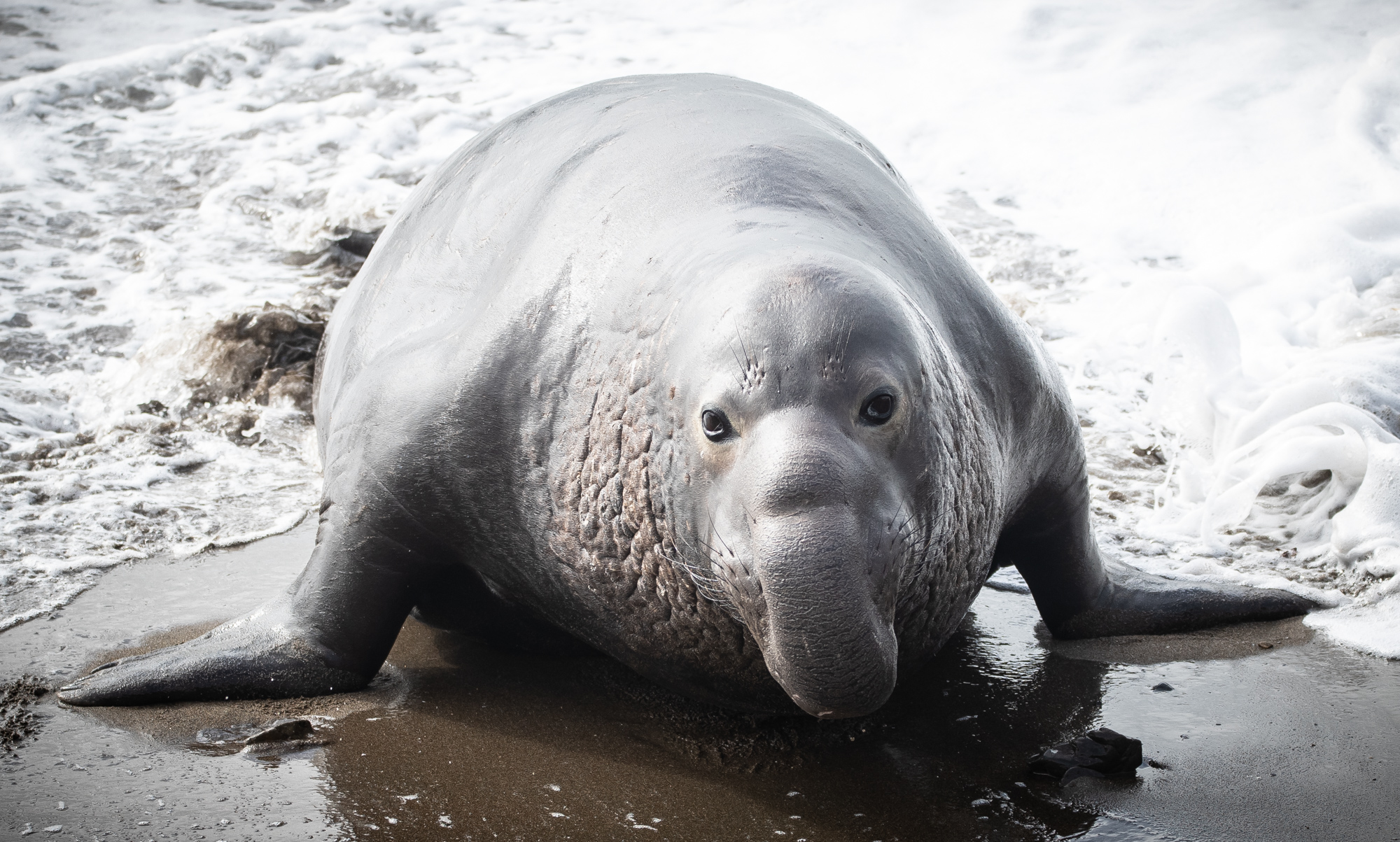
Anspruchsvolles Gen-Memory
Frankfurter Forschende entwickeln neue Methode zum genetischen Vergleich hunderter Tierarten
27.04.2023
Das Erbgut von Lebewesen lässt sich dank großer technologischer Fortschritte mittlerweile in rasantem Tempo sequenzieren. Besonders interessante Erkenntnisse zeigen dabei die Vergleiche von Genomen, sei es eng verwandter oder ganz unterschiedlicher Arten. So können Informationen zu stammesgeschichtlichen Entwicklungen, Herausbildungen von Eigenschaften oder zu Anpassungsfähigkeiten gewonnen werden. Der Vergleich genomischer Daten birgt jedoch knifflige technische Herausforderungen. Um die Analyseprozesse zu vereinfachen, hat ein Team von Wissenschaftler*innen unter der Leitung von Prof. Michael Hiller vom LOEWE-TBG eine neue Methode entwickelt und im Fachjournal Science vorgestellt
Mit der neuen bioinformatischen Methode TOGA lassen sich die Analysen deutlich vereinfachen und beide Herausforderungen gemeinsam angehen. Das Akronym steht für „Tool to infer Orthologs from Genome Alignments“. Um orthologe Gene zu bestimmen, nutzen Forscher*innen, dass die Abschnitte in den Genen, die Proteine kodieren, einander ähnlicher sind als die kodierenden Abschnitte anderer Gene. Die TOGA-Methode erweitert dieses Ähnlichkeitsprinzip auf den gesamten genomischen Kontext eines Gens.
Weitere Informationen finden Sie in der Pressemitteilung bei Senckenberg. (Foto: Andy Witchger, flickr, Lizenz CC BY 2.0)
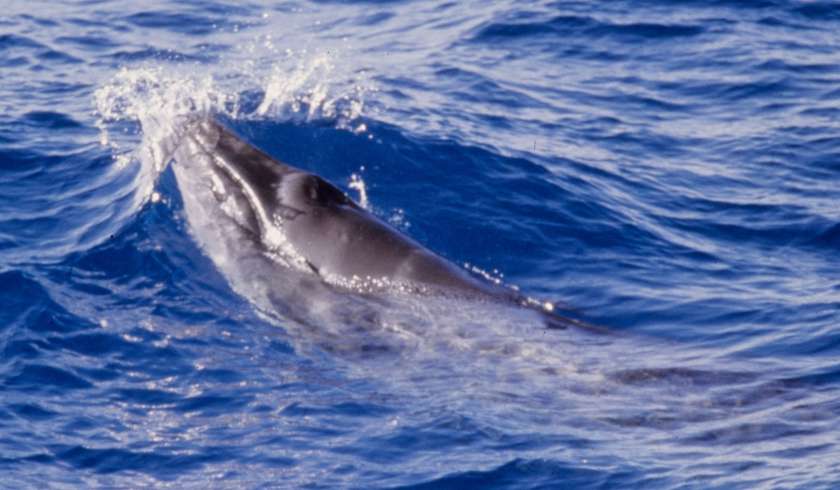
Das Genom des kleinsten Bartenwals gibt Einblick in Evolution und Tumorresistenz
20.04.2023
Der Zwergglattwal (Caperea marginata) ist der kleinste aller Bartenwale – aber auch er wird bis zu sechs Meter lang und drei Tonnen schwer. Die selten zu sichtende Art lebt in den antarktischen Gewässern der Südhalbkugel. Wissenschaftlich ist der letzte überlebende Vertreter eines ansonsten ausgestorbenen Familienzweigs der Bartenwale noch wenig erforscht. Dabei kann sein Erbgut für die Krebsforschung interessante Informationen bereithalten, wie ein Team von Wissenschaftlern aus Frankfurt und dem schwedischen Lund jetzt herausgefunden hat. Ihre Studie zu Evolution und Tumorresistenz bei Bartenwalen ist in der Fachzeitschrift BMC Biology erschienen.
„Unsere neuen Erkenntnisse zeigen, dass offenbar fast alle großen Walarten unterschiedliche positiv selektierte Gene in ihren Genomen aufweisen. Dies lässt sich möglicherweise mit der bereits in der Paläontologie diskutierten Idee erklären, dass der für Bartenwale so typische Gigantismus im Laufe der Evolution wahrscheinlich mehrfach und unabhängig voneinander entstanden ist“, erklärt Magnus Wolf vom SBiK-F und der Frankfurter Goethe-Universität, Erstautor der Studie. „Das bedeutet, dass jede große Walart eine eigene Form der Tumorresistenz entwickelt haben könnte, die sich hoffentlich in Zukunft medizinisch nutzen lässt.“
Weitere Infos finden Sie in der Pressemitteilung bei Senckenberg.
(Foto: World Register of Marine Species, Robert Pitman, NOAA Fisheries, Lizenz CC BY-NC-SA 4.0)
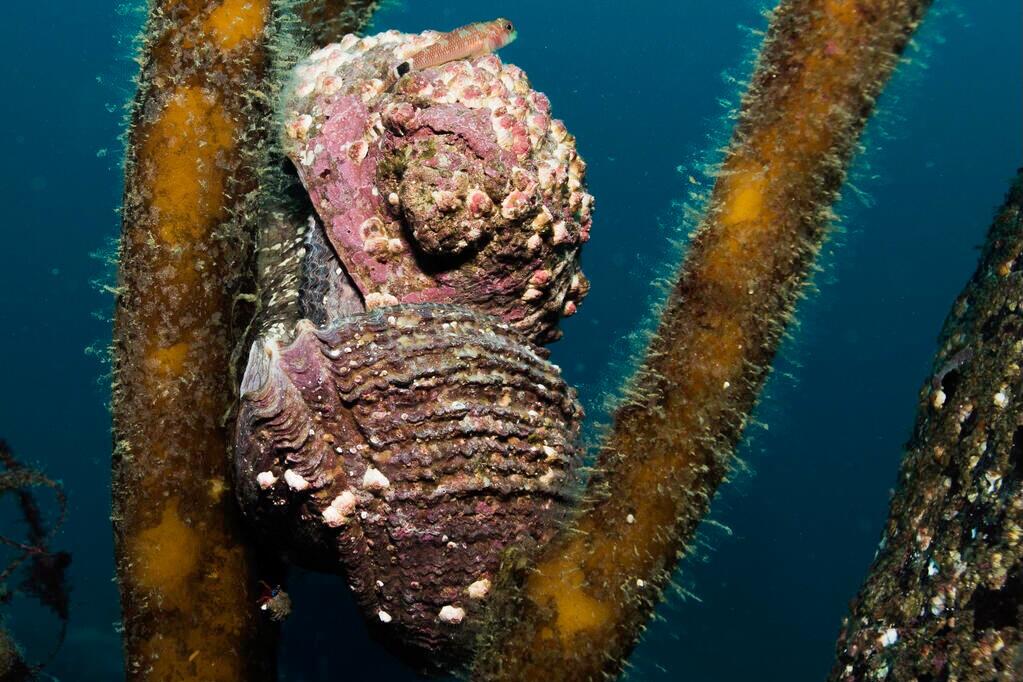
Die chilenische Stachelschnecke ist „Internationales Weichtier des Jahres 2023“ - Ergebnis der öffentlichen Abstimmung steht fest
23.03.2023
Sie ist eine große, fleischfressende Meeresschnecke mit einem robusten Gehäuse – und das „Internationale Weichtier des Jahres 2023“! Die chilenische Stachelschnecke (Concholepas concholepas) erhielt bei der öffentlichen Online-Abstimmung die meisten Stimmen. Zuvor hatte sie sich, gemeinsam mit vier weiteren Weichtier-Arten, als Finalistin des internationalen Wettbewerbs durchgesetzt. Dieser ging in diesem Jahr in seine dritte Runde, nachdem er Ende 2020 von der Senckenberg Gesellschaft für Naturforschung, dem LOEWE-TBG und der internationalen Gesellschaft für Molluskenforschung (Unitas Malacologica) initiiert wurde, um die enorme Artenvielfalt der Weichtiere bekannter zu machen und für ihren Schutz zu sensibilisieren.
Sowohl die große Bedeutung in ihren Heimatregionen Chile und Peru als auch ihre besonderen Eigenschaften machen die chilenische Stachelschnecke in diesem Jahr zum Publikumsliebling – mit rund 42 Prozent der Stimmen zog sie an einer weiteren Meeresschnecke, einer Tiefsee-Auster und zwei Nacktschnecken-Arten vorbei.
Concholepas concholepas wurde von Prof. Antonio Baeza für den Titel „Internationales Weichtier des Jahres 2023“ nominiert. Er forscht am Fachbereich Biowissenschaften der Clemson University in South Carolina, USA, zu Artenvielfalt, Evolution und Erhaltung mariner Organismen.
Weitere Informationen finden Sie in der Pressemitteilung bei Senckenberg. (Foto: Cristian Sepulveda)

Welches Weichtier wird „Internationale Molluske des Jahres 2023“? Heute beginnt die öffentliche Online-Abstimmung
01.03.2023
Ab heute stehen fünf Weichtierarten zur Wahl als „Internationale Molluske des Jahres 2023“! An der öffentlichen Online-Abstimmung können sich bis zum 19. März 2023 alle Interessierten beteiligen. Der Wettbewerb wurde 2020 von der Senckenberg Gesellschaft für Naturforschung, dem LOEWE-Zentrum für Translationale Biodiversitätsgenomik (TBG) und der internationalen Gesellschaft für Molluskenforschung (Unitas Malacologica) ins Leben gerufen, um die vielfältige und artenreiche Gruppe der Weichtiere bekannter zu machen und die Öffentlichkeit für ihren Schutz zu sensibilisieren. Der Gewinner-Art winkt die Entschlüsselung ihrer gesamten Erbinformation.
2023 stehen wieder fünf spannende Mollusken-Arten zur Wahl: Die Dickhornnacktschnecke (Hermissenda crassicornis), die Gepunktete Papierblasenschnecke (Micromelo undatus), die Riesen-Methusalem-Auster (Neopycnodonte zibrowii), der inzwischen weit verbreitete an Land lebende Tigerschnegel (Limax maximus), sowie die chilenische Stachelschnecke (Concholepas concholepas) aus dem südöstlichen Pazifik.
Weitere Infos finden Sie in der Pressemitteilung bei Senckenberg.
(Foto: Jaketza Herrero Barrencua)
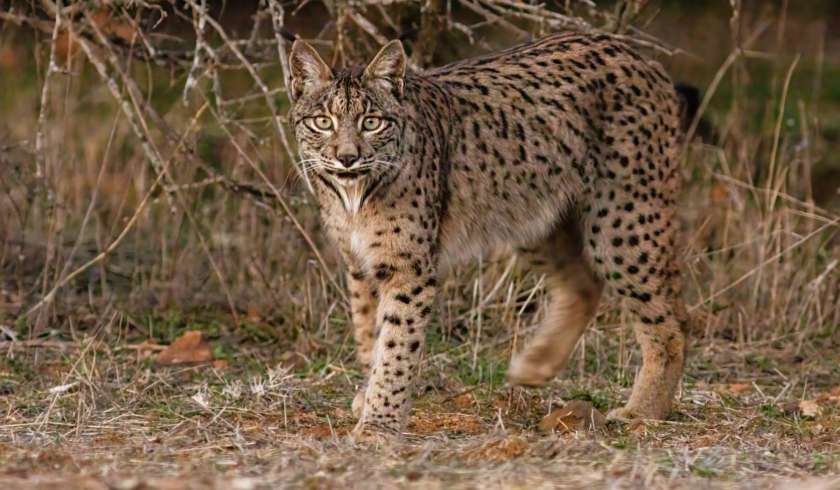
Genomik für den Artenschutz - Genomische Analysen liefern wichtige Erkenntnisse für das Naturschutzmanagement
24.02.2023
Die biologische Vielfalt der Natur zu erhalten, ist eine der großen Herausforderungen unserer Zeit. Um Strategien und effektive Maßnahmen zu entwickeln, bedarf es fundierter wissenschaftlicher Analysen und konkreter Informationen für die Akteur*innen im Naturschutz. Hier kann das Feld der Biodiversitätsgenomik einen wichtigen Beitrag leisten: Genomische Daten von Arten, Artgemeinschaften und ganzer Ökosysteme geben Einblick in Eigenschaften, Anpassungsfähigkeiten, Verwandtschaftsbeziehungen und evolutionäre Entwicklungen. Diese Daten sollten bei weitreichenden Bewertungen und Entscheidungen im Naturschutzmanagement immer berücksichtigt werden – dafür plädiert ein internationales Team von Wissenschaftler*innen im Fachjournal „Trends in Genetics“.
„Mit unserer Veröffentlichung möchten wir vor allem bewirken, dass Forschende aus den Bereichen Naturschutz und Biodiversitätsgenomik enger zusammenarbeiten, um eine neue Ära der Naturschutzgenomik im Anthropozän einzuläuten – dem Zeitalter, in dem der Mensch zu einem der wichtigsten Einflussfaktoren auf die biologischen, geologischen und atmosphärischen Prozesse auf der Erde geworden ist“, erläutert Dr. Kathrin Theissinger, eine der Erstautor*innen der Veröffentlichung.
Weitere Informationen finden Sie in der Pressemitteilung bei Senckenberg. (Foto: Diego Delso)
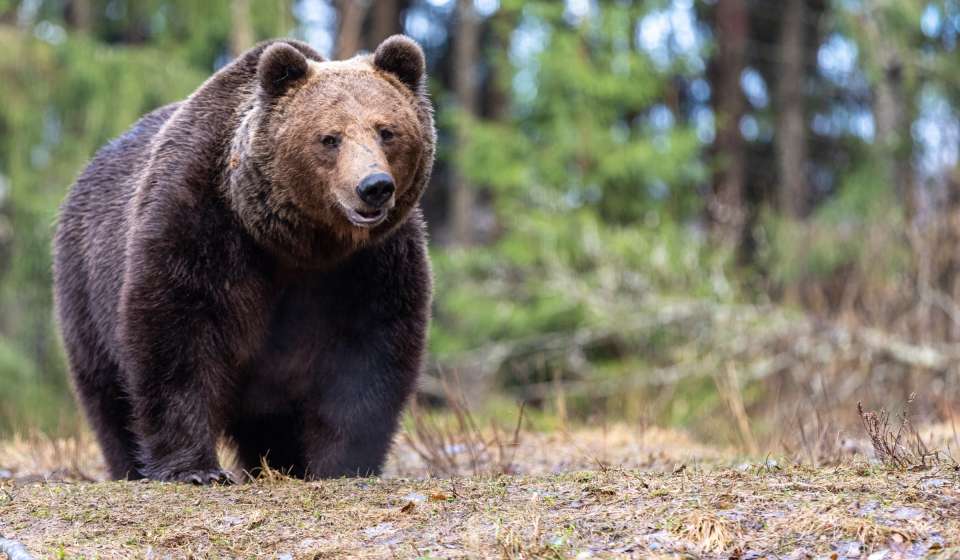
Bucklige Verwandtschaft - Genomische Studie verdeutlicht die Vielfalt der weltweit verbreiteten Braunbären
21.02.2023
Braunbären zählen zu den größten an Land lebenden Raubtieren der Welt. Charakteristisch ist ihr muskulöser Buckel über den Schultern, der den Vorderbeinen zusätzliche Kraft verleiht. Die etwa zehn derzeit identifizierten Braunbären-Unterarten sind in Nordamerika, Europa, Russland und Asien verbreitet. Dabei weisen sie große Unterschiede hinsichtlich ihrer Gestalt, ihrer Lebensräume und ihres Verhaltens auf.
Ein internationales Team von Forschenden, darunter vier Wissenschaftler aus Frankfurt am Main, untersuchten in einer in der Nature-Fachzeitschrift „Communications Biology“ veröffentlichten Studie, wie und wann ihre genetische Vielfalt entstanden ist. Damit stellen sie die erste umfassende populationsgenomische Studie am Braunbären (Ursus arctos) vor und zeigen an seinem Beispiel die Auswirkungen der letzten Eiszeit auf die heutige Vielfalt innerhalb der Art.
Der Ansatz der Studie, die demografische Entwicklung der Braunbären zu entschlüsseln, kann als Vorlage für die Untersuchung und das bessere Verständnis der Geschichte vieler weiterer Arten dienen.
Weitere Informationen finden Sie in der Pressemitteilung bei Senckenberg. (Foto: Gregoire Dubois)

Neue Wege für die Naturstoff-Forschung - Prof. Dr. Eric Helfrich erhält Emmy Noether-Förderung der Deutschen Forschungsgemeinschaft
01.02.2023
Neue Methoden zu entwickeln, um bisher unentdeckten Naturstoffen auf die Spur zu kommen – dieses Ziel hat sich Eric Helfrich gesetzt, Professor für Naturstoffgenomik am LOEWE-TBG und der Goethe-Universität.
Für seine Forschung erhält er seit Januar 2023 eine sechsjährige Förderung im Emmy Noether-Programm der Deutschen Forschungsgemeinschaft (DFG) für herausragend qualifizierte Nachwuchswissenschaftler*innen in Höhe von rund 1,5 Millionen Euro. Das Besondere an seinem Ansatz: Die genetischen Baupläne, die für die Produktion unbekannter Naturstoffe verantwortlich sind, werden mittels Maschinellem Lernen im Erbgut von Organismen ausfindig gemacht und anschließend mit neuen Verfahren der Synthetischen Biologie in Bakterien biotechnologisch hergestellt.
„Unsere Forschung wird dazu beitragen, Licht in bislang unbekannte Wege der bakteriellen Peptid-Herstellung zu bringen und damit das bisherige Lehrbuchwissen zu erweitern“, beschreibt Helfrich das Ziel seiner Forschung.
Weitere Infos finden Sie in der Pressemitteilung bei Senckenberg.
(Foto: Jürgen Lecher)

Außergewöhnliche Flugkünstler - Kolibris beherrschen ihren Schwebeflug vermutlich aufgrund eines fehlenden Gens
12.01.2023
Sie zählen zu den kleinsten, aber auch wendigsten Vogelarten der Welt: die auf den beiden amerikanischen Kontinenten beheimateten Kolibris. Häufig kaum größer als ein Daumen, können sie als einzige Vogelart nicht nur vorwärts, sondern auch rückwärts und seitlich fliegen. Möglich macht dies ihr charakteristischer Schwebeflug, der jedoch extrem energieaufwändig ist.
Ein internationales Team von Wissenschaftler*innen unter der Leitung von Prof. Michael Hiller vom hessischen LOEWE-TBG untersuchte nun in einer im Fachjournal „Science“ veröffentlichten genomischen Studie, welche evolutionären Anpassungen des Stoffwechsels die besonderen Flugkünste der Kolibris ermöglicht haben könnten. Für ihre Studie sequenzierten nun Forscher*innen das Genom des Langschwanz-Schattenkolibris (Phaethornis superciliosus) und verglichen dieses sowie die Genome weiterer Kolibriarten mit dem Erbgut von 45 anderen Vogelarten, darunter Hühner, Tauben und Adler. Dabei entdeckten sie, dass das Gen für das Muskelenzym Fructose-Bisphosphatase 2 – kurz: FBP2 – in allen untersuchten Kolibris fehlte.
Weitere Informationen finden Sie in der Pressemitteilung bei Senckenberg. (Foto: Nicolas Defaux)
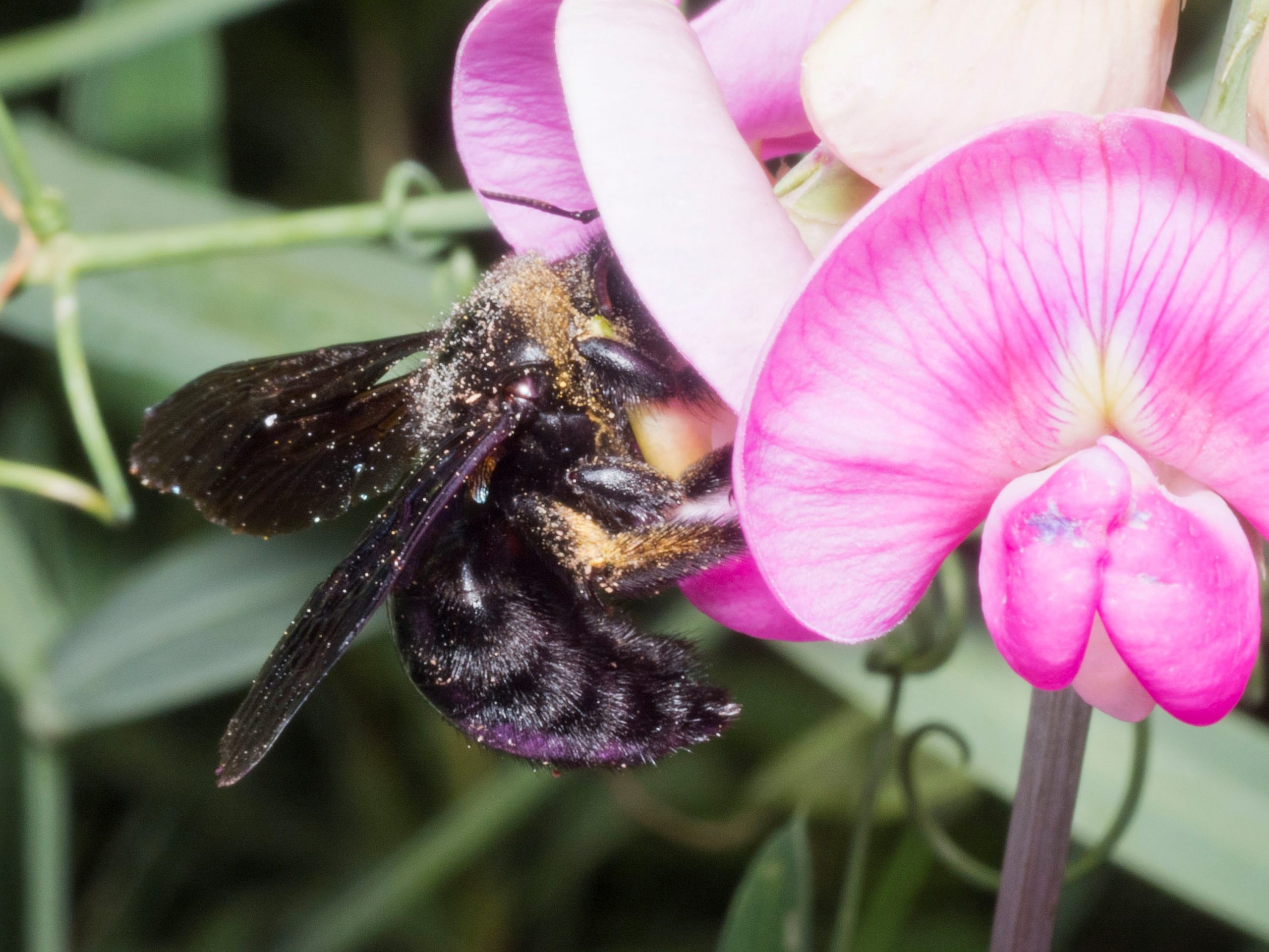
Weniger hilft mehr - Mildes Bienengift zeigt größeres Anwendungspotenzial
20.12.2022
Das Gift der Honigbiene wird seit Jahrhunderten in der traditionellen Medizin als entzündungshemmendes Mittel geschätzt. Wissenschaftlich gut untersucht ist dabei nur der Hauptbestandteil Melittin. Mit seiner starken Wirkung kann der Naturstoff in der Anwendung jedoch auch gesunde Zellen schädigen.
Forscher*innen des hessischen LOEWE-TBG zeigen nun in einer im Fachjournal „Toxins“ veröffentlichten Studie eine weitere Facette der Bedeutung von Wildbienen: In deren bisher wenig untersuchten Giften konnten sie ursprünglichere Varianten von Melittin nachweisen, einem Peptid aus 26 Aminosäuren und wichtigster Inhaltsstoff des Bienengifts.
Dr. Pelin Erkoc-Erik, Erstautorin der Publikation, erklärt: „Dafür haben wir die Auswirkungen von Melittin-Peptiden auf die Zellschädigung sowie die Freisetzung von Botenstoffen und Entzündungsmarkern geprüft – und zwar sowohl in krebsartigen als auch in nicht-krebsartigen menschlichen Zellen.“ Aufgefallen ist dem Team dabei unter anderem das Melittin der Violetten Holzbiene, einer Wildbienenart. Dieses zeigte in den Laboranalysen eine vielversprechende Wirkung auf Brustkrebszellen.
Weitere Informationen finden Sie in der Pressemitteilung bei Senckenberg. (Foto: Björn M. von Reumont)
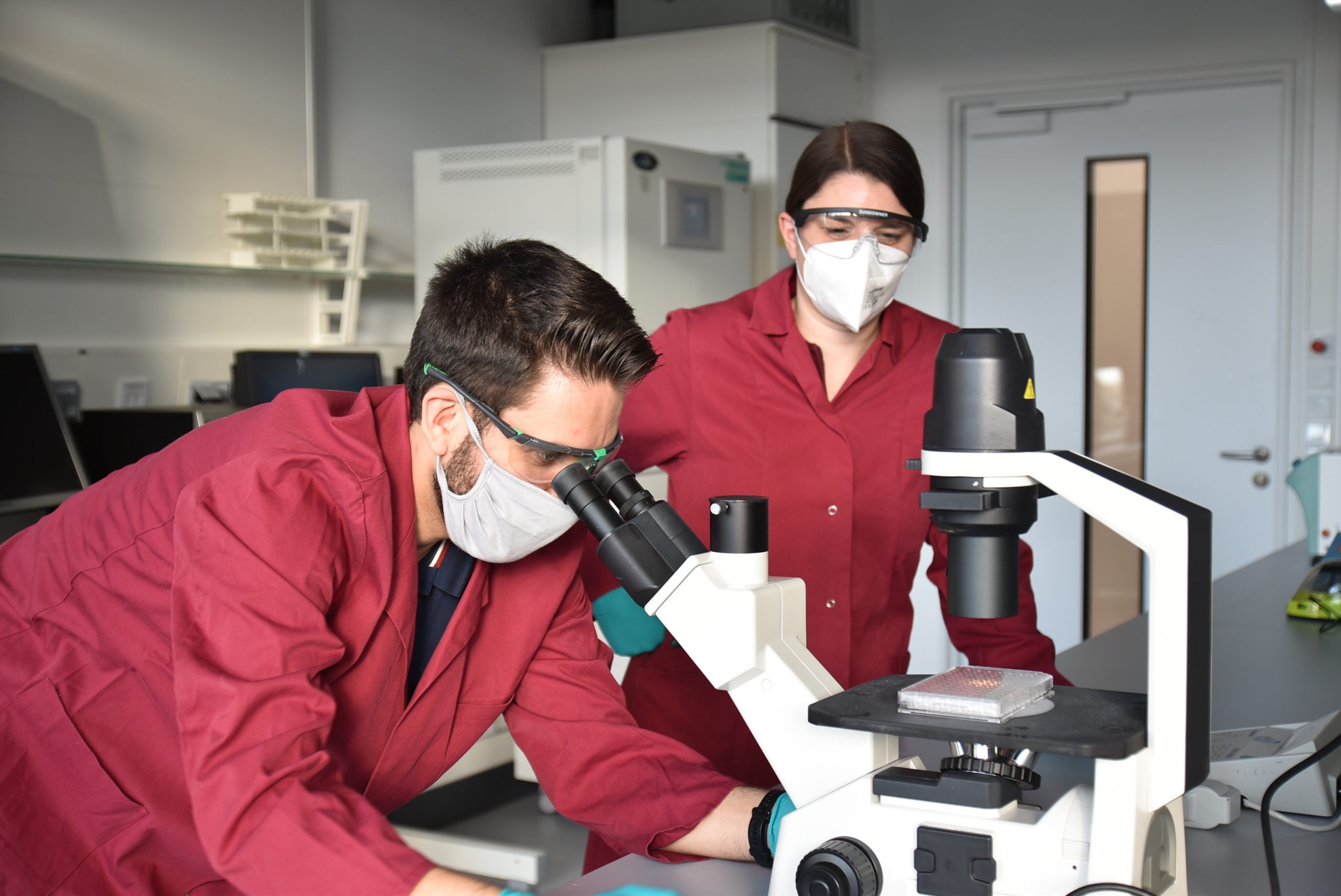
Naturstoffe gegen Grippeviren
15.12.2022
Influenza-A- und -B-Viren verursachen schwere, ansteckende Infektionen, die bei Komplikationen sogar tödlich enden können. Den wirksamsten Schutz gegen die sich ständig verändernden Virusstämme bietet die jährliche Impfung. Kommt es jedoch zu einer Infektion, sind bislang in den meisten Ländern, zu denen auch Deutschland zählt, nur zwei Klassen von Medikamenten zugelassen.
Wissenschaftler*innen des Fraunhofer-Instituts für Molekularbiologie und Angewandte Oekologie IME in Gießen sowie des LOEWE-Zentrums TBG sehen großes therapeutisches Potenzial in Naturstoffen, um zukünftig Influenzaviren zu hemmen, und geben dazu in einem Fachartikel neue Impulse.
„Zu den aussichtsreichen Naturstoffen zählen Tiergifte, antivirale Substanzen in Pilzen und auch Bakterien, die nicht nur für Antibiotika, sondern auch für Medikamente gegen Viren interessant sind. Die enorme Vielfalt und strukturelle Komplexität machen Naturstoffe zu einem vielversprechenden Ausgangspunkt für die Erforschung und Identifizierung neuer Verbindungen, die gegen Influenzaviren wirken könnten.“, erläutert Studienleiterin Dr. Kornelia Hardes.
Weitere Infos finden Sie in der Pressemitteilung bei Senckenberg. (Foto: Desirée Schulz/Fraunhofer IME)
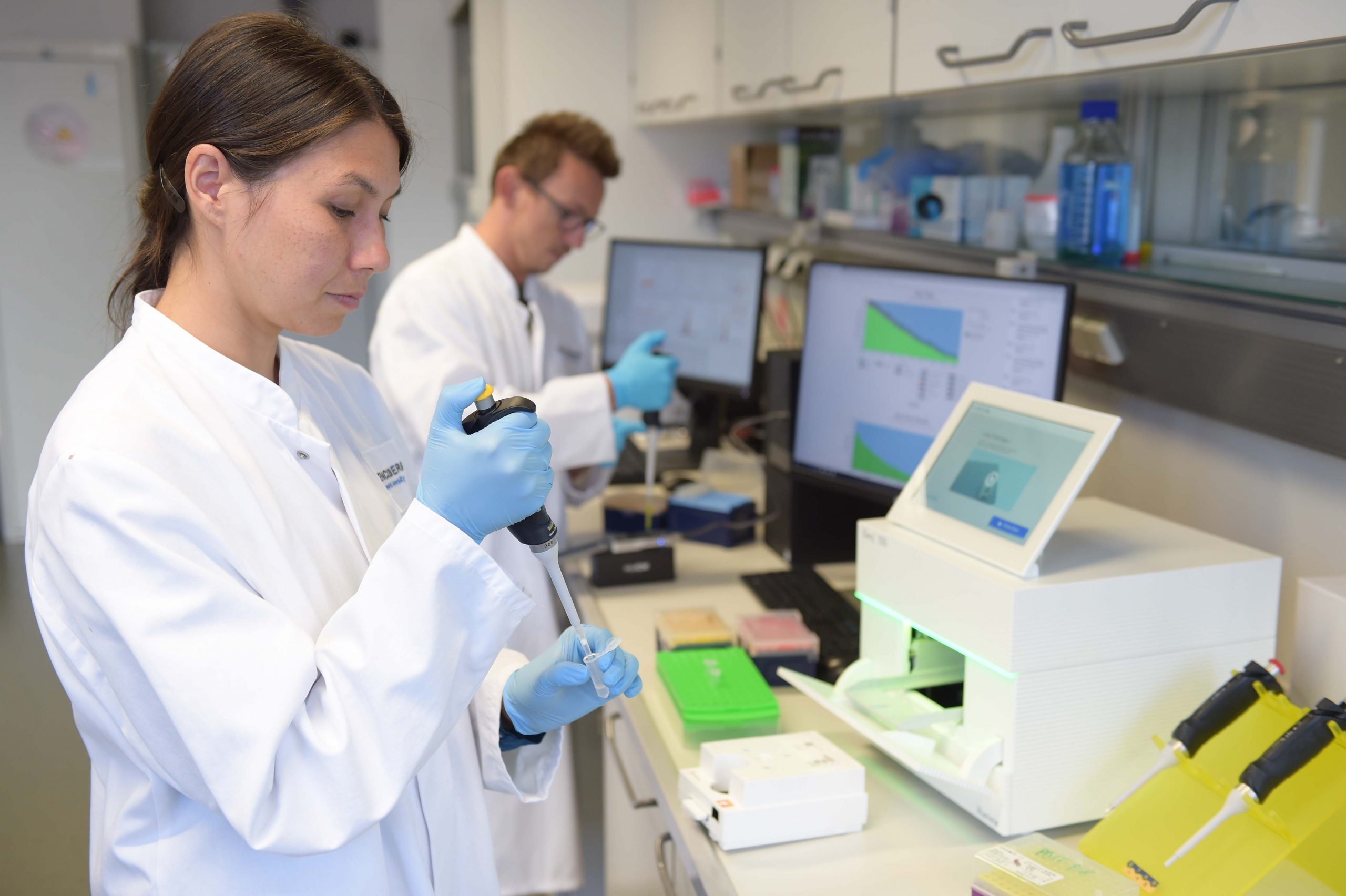
Die genomische Forschung von LOEWE-TBG wird ab 2025 bei Senckenberg verstetigt
28.11.2022
Ein internationales Zentrum in Hessen für die genomische Erforschung der Artenvielfalt aufzubauen – mit diesem Ziel ging das LOEWE-Zentrum für Translationale Biodiversitätsgenomik (TBG) 2018 an den Start. Nach einer sehr erfolgreichen ersten Förderphase im hessischen LOEWE-Programm läuft seit 2022 die Verstetigungsphase. In dieser überzeugt LOEWE-TBG mit innovativen Forschungsansätzen, herausragenden Ergebnissen und aussichtsreichen Vorhaben. Nach dem Auslaufen der LOEWE-Förderung wird der Bereich Biodiversitätsgenomik ab 2025 innerhalb der federführenden Institution des Zentrums, der Senckenberg Gesellschaft für Naturforschung, verstetigt.
Möglich wird der neue integrale Senckenberg-Forschungsbereich „Biodiversity Genomics“ durch eine vollumfängliche Bewilligung des strategischen Erweiterungsantrags „Anthropocene Biodiversity Loss” von Senckenberg durch die Gemeinsame Wissenschaftskonferenz (GWK) – vorbehaltlich der formalen Haushaltsaufstellung 2024.
Weitere Informationen finden Sie in der Pressemitteilung bei Senckenberg. (Foto: Sven Tränkner)
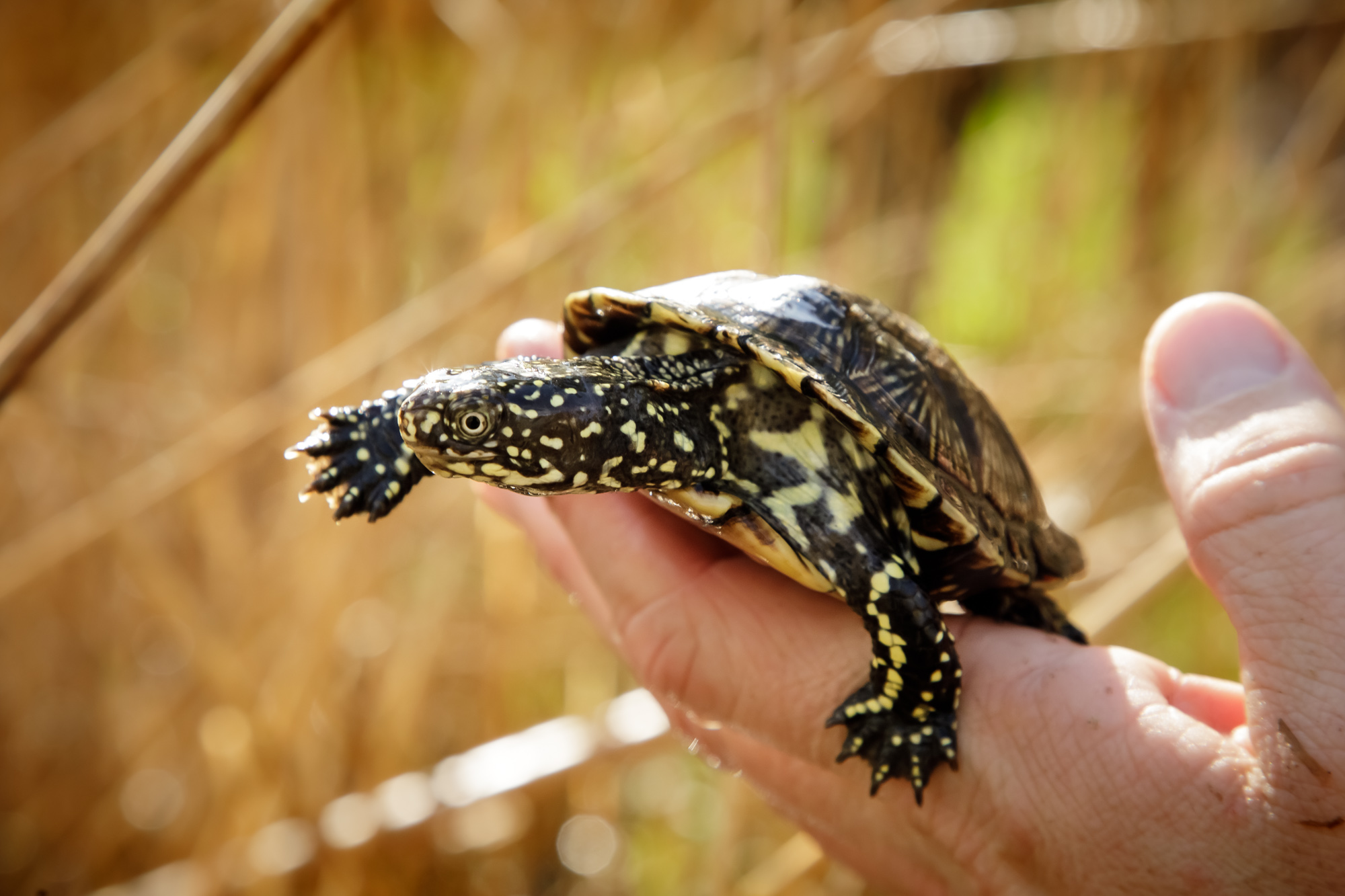
Zurück im Feuchtgebiet - die Europäische Sumpfschildkröte erhält Unterstützung durch das Forschungsprojekt Emys-R
27.09.2022
Vom Zoo in die freie Natur – diesen Weg gingen in den vergangenen zehn Jahren insgesamt 650 Europäische Sumpfschildkröten im deutsch-französischen Grenzgebiet zwischen Neuburg am Rhein und Lauterbourg. Die letzte Gruppe wurde Mitte September 2022 im elsässischen Bioreservat Woerr in ihren natürlichen Lebensraum entlassen – um dort in den kommenden Jahren genau beobachtet zu werden. In Europa ist die Europäische Sumpfschildkröte (Emys orbicularis) die einzige natürlich vorkommende Schildkrötenart im Süßwasser. Ziel der Aktion ist eine Wiederansiedlung der laut Roter Liste vom Aussterben bedrohten Art in einem wiederhergestellten Feuchtgebiet. Einen neuen wissenschaftlichen Rahmen bildet seit 2022 das groß angelegte europäische Forschungsprojekt Emys-R, an dessen Leitung Dr. Kathrin Theissinger beteiligt ist, Wissenschaftlerin bei der Senckenberg Gesellschaft für Naturforschung und dem hessischen LOEWE-Zentrum für Translationale Biodiversitätsgenomik (LOEWE-TBG). Neben ökologischen stehen dort auch gesellschaftliche Aspekte im Blickpunkt.
Weitere Informationen finden Sie in der Pressemitteilung bei Senckenberg. (Foto: Nicolas Busser)
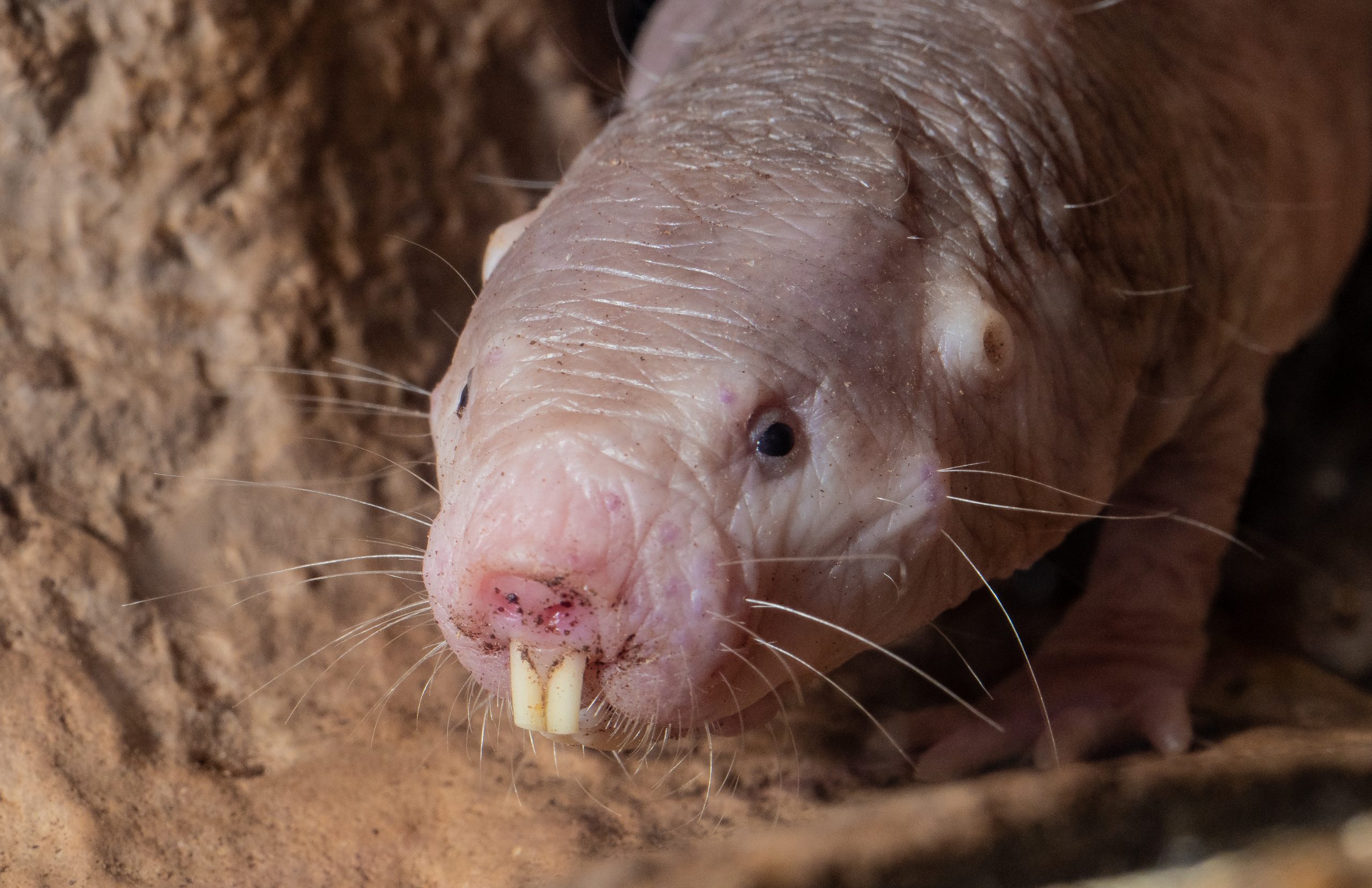
Die Gene im Blick - für ein gutes Sehvermögen sind auch bisher unbekannte Gene verantwortlich
06.07.2022
Zahlreiche Menschen leiden unter Augenkrankheiten, die im schlimmsten Fall zur Erblindung führen können. Während Grauer Star, Grüner Star und Makuladegeneration als Krankheitsbild inzwischen gut erforscht sind, werden diese Krankheiten weiterhin von bisher unbekannten Genen beeinflusst. Ein Team von Forscher*innen des LOEWE Zentrums TBG und der Senckenberg Gesellschaft für Naturforschung sowie des Dresdner Max-Planck-Instituts für molekulare Zellbiologie und Genetik und des Zentrums für Regenerative Therapien an der Technischen Universität Dresden hat sich nun bei Säugetieren auf die Suche nach diesen unentdeckten Genen begeben, die Funktionen im Auge übernehmen. Bei ihren umfassenden Genomanalysen sind sie auf 15 bisher unbekannte „Augen-Gene“ gestoßen und konnten 14 weitere Gene bestätigen, die für das Sehvermögen wichtig sind. Die Studie ist wegweisend, da sie Genomanalysen nutzt, um Funktionen von Genen vorherzusagen und damit eine Grundlage für die weitere Erforschung des Sehens bildet.
Weitere Infos finden Sie in der Pressemitteilung bei Senckenberg.
(Foto: Josh More (flickr, Naked Mole Rat_15, CC BY-NC-ND 2.0)
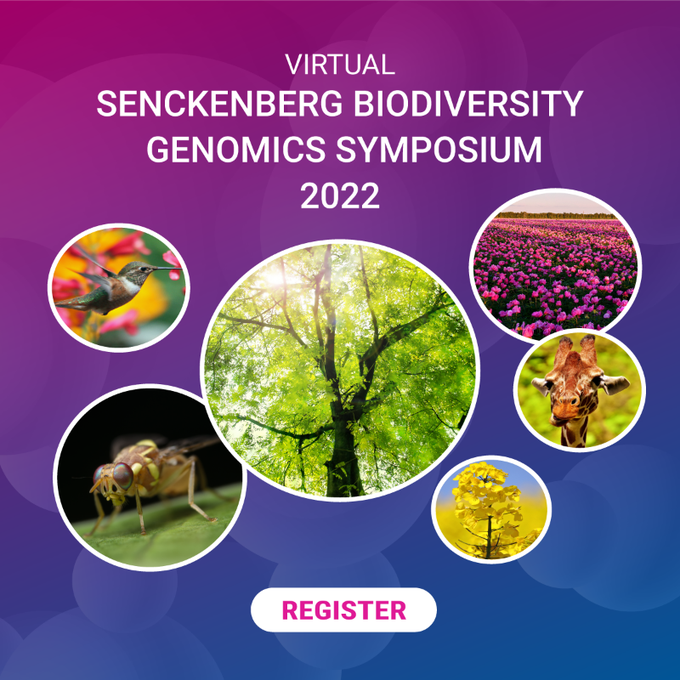
TBG veranstaltet 2. Online-Symposium zu Biodiversitätsgenomik – Anmeldung jetzt möglich
14.06.2022
Am 28.06.2022 von 13 bis 17 Uhr findet online das zweite „Senckenberg Biodiversity Genomics Symposium“ statt. Wie bei der erfolgreichen Veranstaltung im Vorjahr wird das eintägige Symposium wieder vom LOEWE-Zentrum TBG, dem Senckenberg Forschungsinstitut und PacBio organisiert.
Internationale Wissenschaftler*innen berichten über ihre Erfahrungen mit der hochpräzisen Long-Read-Sequenzierung (HiFi-Sequenzierung). Mithilfe dieser Methode generieren auch TBG-Forscher*innen Genome in Referenzqualität von taxonomisch vielfältigen Organismen – von Pflanzen über Flechten, Insekten und Schnecken bis hin zu den Wirbeltieren – und beantworten so wichtige Forschungsfragen. Die Veranstaltung bietet neben Vorträgen auch Raum zum Austausch zwischen Wissenschaftler*innen.
Registrierung und weitere Informationen: https://events.pacb.com/senckenberg-biodiversity-2022
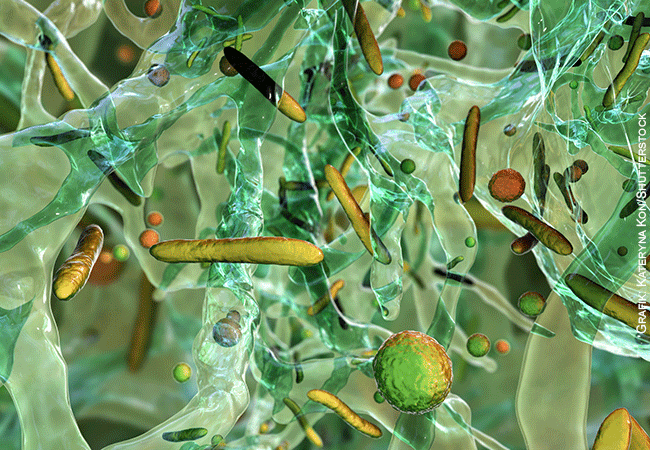
Wie aus einem harmlosen Umweltbakterium der gefürchtete Krankenhauskeim Acinetobacter baumannii wurde
02.06.2022
Im Krankenhaus erworbene Infektionen sind oft besonders schwer zu behandeln, weil die Erreger Resistenzen gegen gängige Antibiotika aufweisen. In dieser Hinsicht besonders gefürchtet ist das Bakterium Acinetobacter baumannii, für dessen Bekämpfung nach neuen Therapieansätze gesucht wird. Um hierfür nach Ansatzpunkten zu suchen, hat ein internationales Team unter Leitung von Bioinformatikern der Goethe-Universität Frankfurt und LOEWE-TBG tausende Genome von krankmachenden und ungefährlichen Acinetobacter-Stämmen miteinander verglichen. Dies liefert Hinweise darauf, welche Eigenschaften A. baumannii zum erfolgreichen Pathogen gemacht haben könnten – und wie sich der Erreger möglicherweise bekämpfen lässt. „Unsere Daten sind so hochauflösend, dass wir uns sogar die Situation in einzelnen Stämmen anschauen können. Dieses Wissen können wir jetzt nutzen, um spezifische Therapien zu entwickeln, gegen die mit großer Wahrscheinlichkeit noch keine Resistenzen existieren.“, ist Ingo Ebersberger (LOEWE-TBG) überzeugt.
Weitere Informationen finden Sie in der Pressemitteilung bei der Goethe Universität. (Graphik: Kateryna Kon/ Schutterstock)
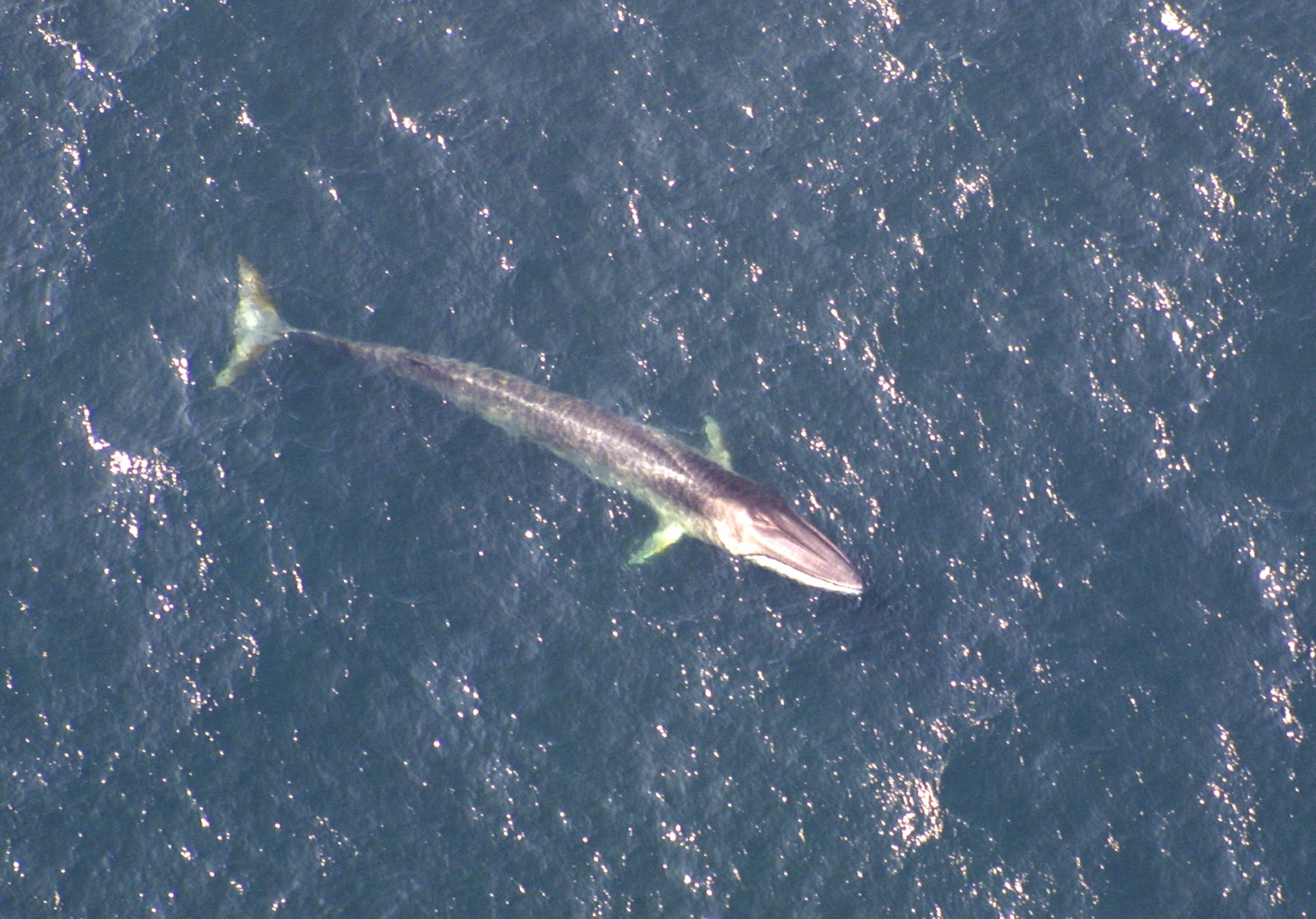
Gefährdet, aber nicht geschädigt - Auch intensiver Walfang beraubte den Finnwal nicht seiner genomischen Vielfalt
27.05.2022
Finnwale sind die zweitgrößten Lebewesen unseres Planeten, nur noch übertroffen von den Blauwalen. Sie können eine Länge von rund 20 Metern erreichen – und benötigen bis zu zwei Tonnen Nahrung pro Tag. Der industrielle Walfang hat ihre Zahl jedoch erheblich reduziert. Er war auf den Tran der Wale als Rohstoff ausgerichtet und wurde besonders intensiv zwischen 1880 und einer internationalen Übereinkunft 1986 betrieben. Heute wird die Anzahl der Finnwale weltweit auf etwa 100.000 Tiere geschätzt; die Art gilt laut Roter Liste als gefährdet. Welche Folgen ihre Dezimierung für die Populationen und vor allem für die genomische Vielfalt der Finnwale hat, zeigt eine neue Studie von Wissenschaftler*innen des LOEWE-Zentrums TBG, des Senckenberg Biodiversität und Klima Forschungszentrums (SBiK-F) sowie von isländischen und schwedischen Forschungseinrichtungen. Ihre Ergebnisse zeigen erfreulicherweise keine langfristige genetische Schwächung dieser Art.
Weitere Informationen finden Sie in der Pressemitteilung bei Senckenberg. (Foto: Christian Valle/robertharding)
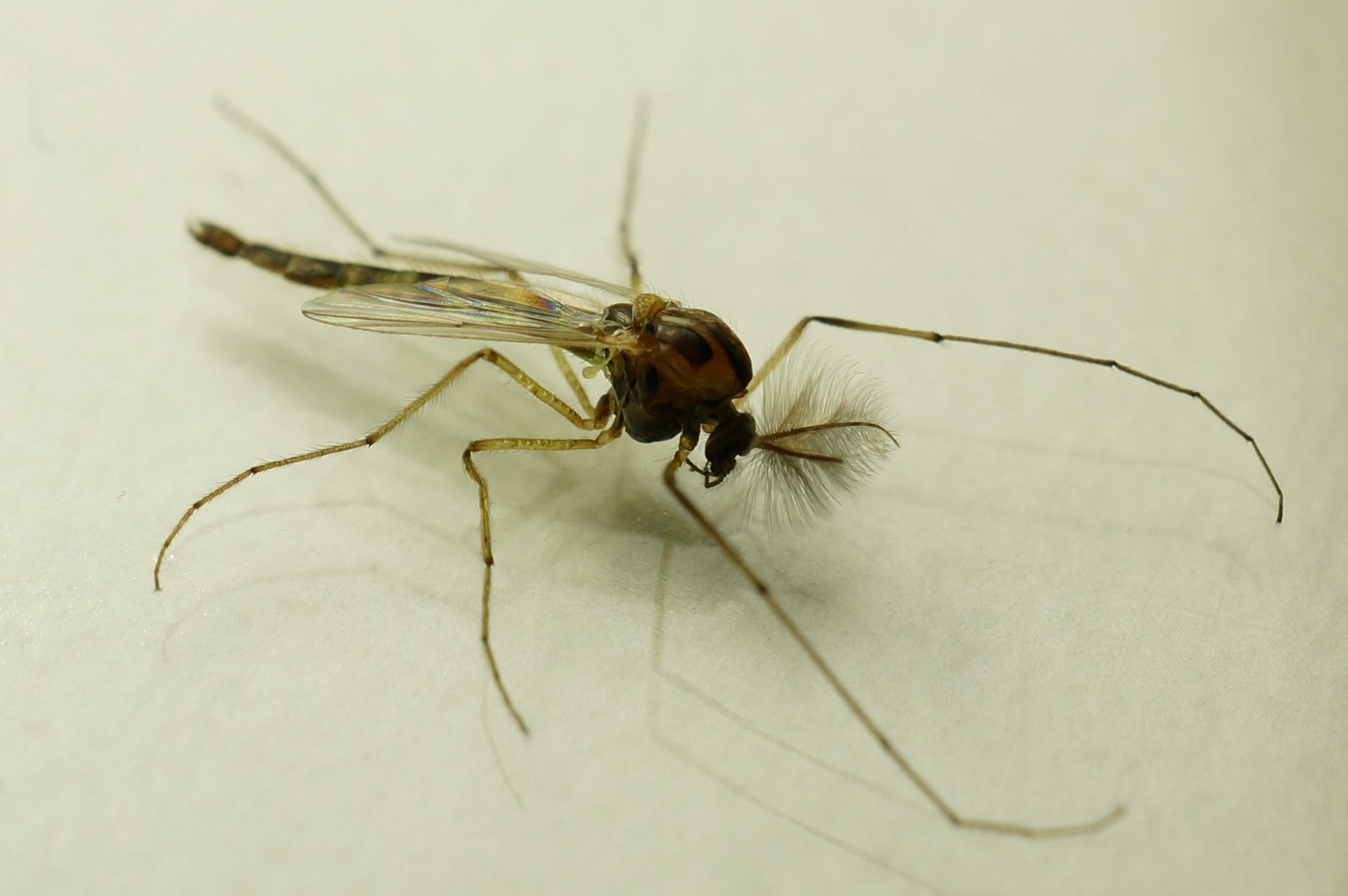
Gefährliche Kunststoffe - die Aufnahme von Mikroplastik kann evolutionäre Veränderungen auslösen
07.04.2022
Mikroplastik wurde bereits in allen Ökosystemen nachgewiesen, von der Tiefsee bis zu hochalpinen Gletschern. Sogar ins Gehirn, zum Beispiel von Säugetieren, können diese Partikel gelangen. Obwohl es immer mehr Hinweise darauf gibt, dass die Aufnahme von Mikroplastik – je nach Größe, Menge und Zusammensetzung – schädlich für Organismen sein könnte, ist der Grad der Gefährlichkeit noch nicht abschließend geklärt.
Dass Mikroplastik auch evolutionäre Veränderungen auslösen kann, zeigt nun zum ersten Mal ein internationales Team von Wissenschaftler*innen des LOEWE-Zentrums für Translationale Biodiversitätsgenomik (TBG), des Senckenberg Biodiversität und Klima Forschungszentrums Frankfurt (SBiK-F) und des Estnischen Nationallabors für Chemie und Physik. Ihre genomische Studie wurde im Fachmagazin „Chemosphere“ veröffentlicht. Demnach löst die Aufnahme von Mikroplastikpartikeln bei der Zuckmücke Chironomus ripariuseine evolutionäre Anpassung aus.
Weitere Infos finden Sie in der Pressemitteilung bei Senckenberg.
(Foto: Markus Pfenninger)
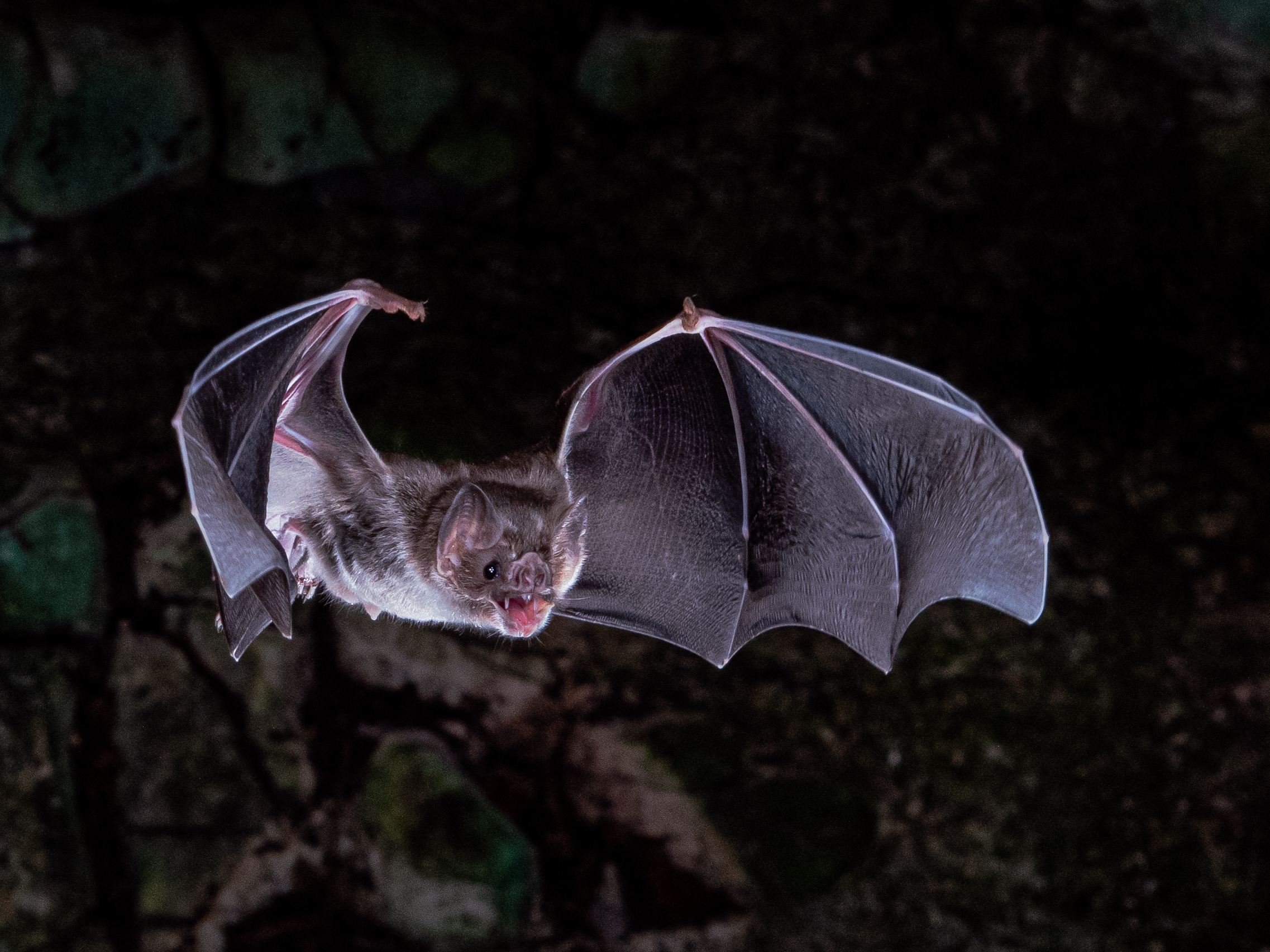
Vampire mit Gendefekt Umfassende Genomanalyse gibt Aufschluss über Ernährung und Evolution von Vampirfledermäusen
25.03.2022
Vampirfledermäuse machen ihrem Namen alle Ehre: Sie ernähren sich ausschließlich vom Blut anderer Wirbeltiere, die sie in der Dunkelheit jagen. Doch wie kommen sie mit dieser einseitigen Ernährung zurecht? Blut enthält zwar viel Protein, aber Zucker und Fett fehlen weitestgehend. Eine genaue Analyse des Genoms der Gemeinen Vampirfledermaus gibt jetzt neue Einblicke in die Evolution ihrer Ernährungsweise und anderer Fähigkeiten dieser einzigartigen Tiere.
Die im Fachjournal „Science Advances“erschienene internationale Studie, die von Wissenschaftler*innen des LOEWE-TBG und des Max-Planck-Instituts für Molekulare Zellbiologie und Genetik in Dresden geleitet wurde, zeigt, dass der Vampirfledermaus dreizehn Gene fehlen, die andere Fledermausarten besitzen.
Weitere Informationen finden Sie in der Pressemitteilung bei Senckenberg.(Foto: Brock Fenton)
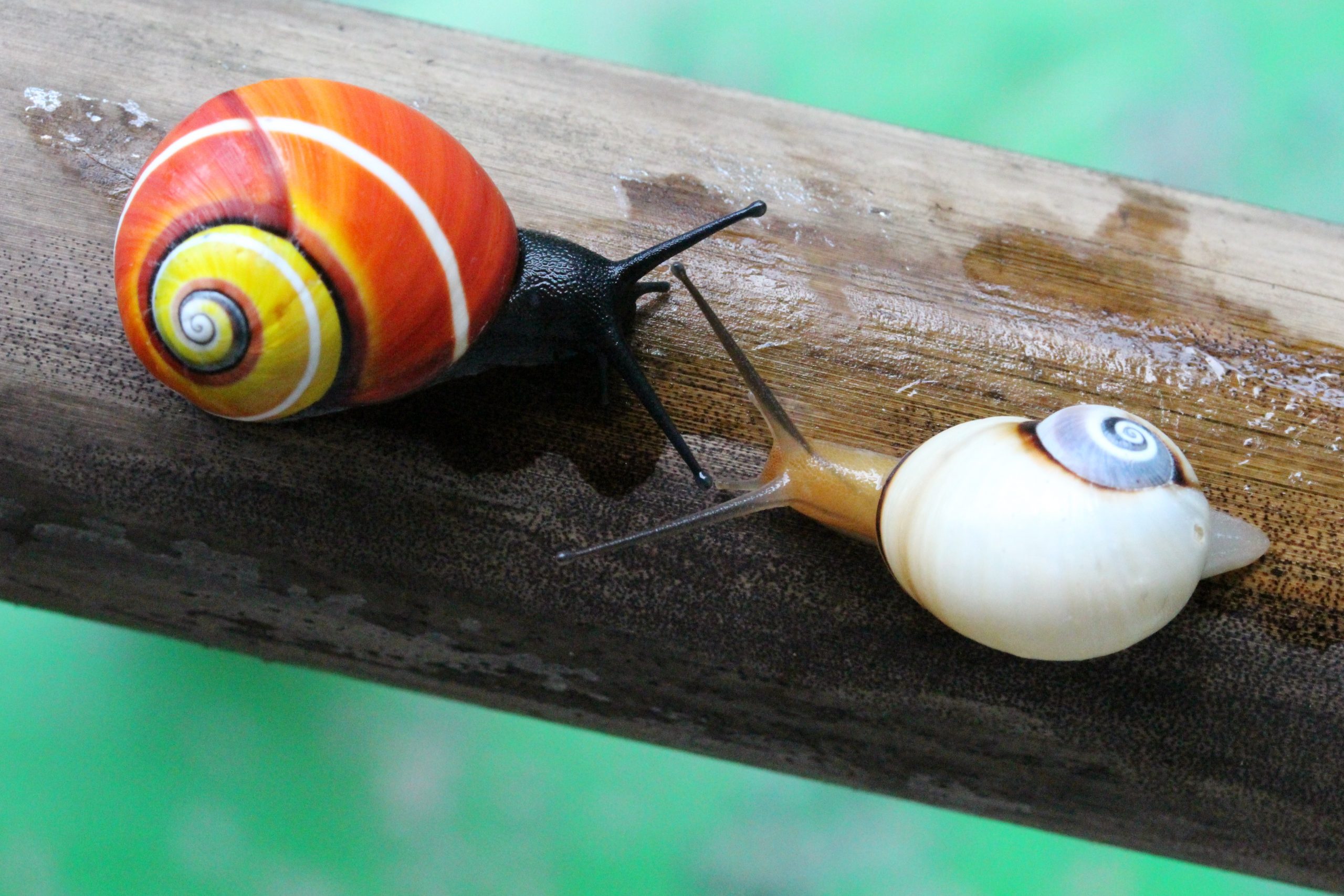
Die Kubanische Landschnecke ist „Weichtier des Jahres 2022“ Ergebnis der öffentlichen Abstimmung steht fest
18.03.2022
Sie ist farbenfroh, lebt an Land und pflanzt sich mit ausgeklügelten Paarungsritualen fort: die Kubanische Landschnecke (Polymita picta). Das frisch gekürte „Weichtier des Jahres 2022“ erhielt bei der internationalen Publikumsabstimmung die meisten Stimmen und setzte sich damit gegen ihre vier Mit-Finalisten durch. Nachdem der von der Senckenberg Gesellschaft für Naturforschung, dem LOEWE-Zentrum für Translationale Biodiversitätsgenomik (TBG) und der weltweiten Gesellschaft für Molluskenforschung (Unitas Malacologica) initiierte Wettbewerb bereits in seiner ersten Runde 2021 auf großes Interesse gestoßen war, erfolgte auch in diesem Jahr der Aufruf an Wissenschaftler*innen und Laien, Weichtiere zu nominieren. Anschließend konnten alle Interessierten vom 25. Februar bis zum 15. März 2022 online ihre Stimme für eine der fünf Finalisten-Arten abgeben.
Weitere Informationen finden Sie in der Pressemitteilung bei Senckenberg. (Foto: Bernardo Reyes Tur)
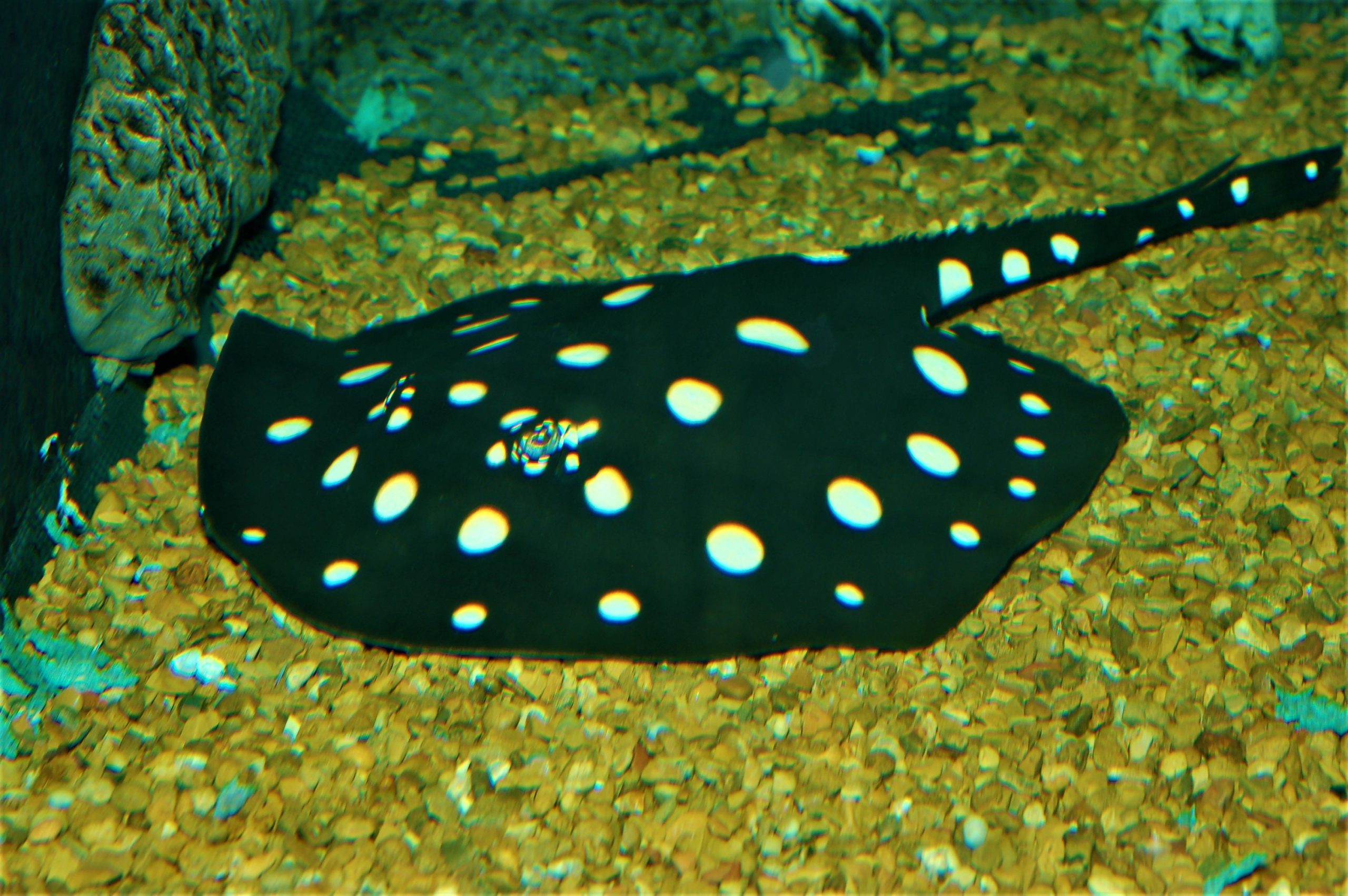
Wie aus Giften Medikamente werden - Neuer Forschungsansatz gibt Einblick in die Wirkung von Tiergiften
16.02.2022
Tiergifte bilden eine wertvolle Quelle bei der Entdeckung neuer Arzneistoffe. Aufschlussreich sind dabei vor allem ihre besondere Wirkungsweise auf den Organismus und ihre komplexe Zusammensetzung. Um ein umfassendes Bild zu erhalten, wie Gifte biologische Systeme beeinflussen, entwickelten Wissenschaftler*innen unter anderem des LOEWE-Zentrums für Translationale Biodiversitätsgenomik (TBG) einen neuen Ansatz zur Wirkstoff-Forschung.In der kürzlich in der Fachzeitschrift „Marine Drugs“ veröffentlichten Studie verknüpften die Autor*innen Ergebnisse der Genom-Analyse eines Tiergifts mit physiologischen Daten. Ziel war es, erstmalig den Wirkungsmechanismus der Giftkomponenten und den zeitlichen Ablauf der Vergiftung vorherzusagen. Dafür wurden zwei Hochdurchsatz-Technologien in einem Netzwerk verbunden. Im Fokus der Untersuchungen standen Stachelrochen.
Weitere Informationen finden Sie in der Pressemitteilung bei Senckenberg. (Foto: Andreas Vilcinskas)
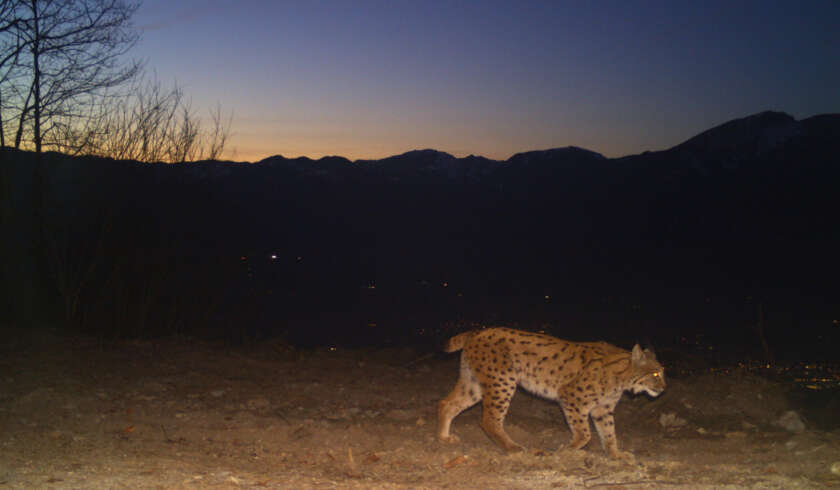
Mitteleuropa: Die Zukunft der Luchse - Verlust der genetischen Vielfalt in wiederangesiedelten Populationen des Luchses ist besorgniserregend
26.01.2022
Wissenschaftler*innen von Senckenberg und vom LOEWE-Zentrum für Translationale Biodiversitätsgenomik haben mit einem internationalen Team die genetische Vielfalt von Luchsen in Europa untersucht. In ihrer heute im Fachjournal „Biological Conservation“ erschienenen Studie zeigen sie, dass die genetische Vielfalt in den Populationen wiederangesiedelter Luchse über die Jahre stark abgenommen hat. Die Forschenden warnen, dass dieser Verlust, zusammen mit den teils deutlich erhöhten Inzuchtwerten, in einigen Beständen den Erhalt der seltenen Art langfristig gefährden könnte. Zudem zeigen sie in ihrer Arbeit welche Faktoren für stabile und gesunde Luchspopulationen in Europa notwendig sind.
Weitere Informationen finden Sie in der Pressemitteilung bei Senckenberg. (Foto: Christine Breitenmoser/KORA
)

Forschung für die europäische Artenvielfalt - Perspektivpapier betont die Bedeutung umfassender Genomanalysen für den Artenschutz
25.01.2022
In einem Perspektivpapier, veröffentlicht von der renommierten Zeitschrift „Trends in Ecology and Evolution“, unterstreicht das ERGA-Konsortium – darunter vier Wissenschaftler*innen der Senckenberg Gesellschaft für Naturforschung und des dort federführend betriebenen LOEWE-TBG – die Notwendigkeit und Bedeutung von Referenzgenomen für die biologische Erforschung der Artenvielfalt und für den Artenschutz. War noch vor wenigen Jahren die Sequenzierung von Genomen auf vereinzelte Modellorganismen beschränkt, so haben es die technischen Fortschritte inzwischen möglich und erschwinglich gemacht, die Genome aller Arten zu entschlüsseln.
Erstautorin Dr. Kathrin Theissinger, Wissenschaftlerin im Bereich Funktionale Umweltgenomik bei LOEWE-TBG: „Wir stehen am Beginn einer aufregenden Ära, in der endlich Referenzgenome, insbesondere in Kombination mit populationsgenomischen Daten, zur Überwachung, Erhaltung und Wiederherstellung der gesamten Artenvielfalt beitragen können.“
Weitere Informationen finden Sie in der Pressemitteilung bei Senckenberg. (Foto: Clement Schneider)
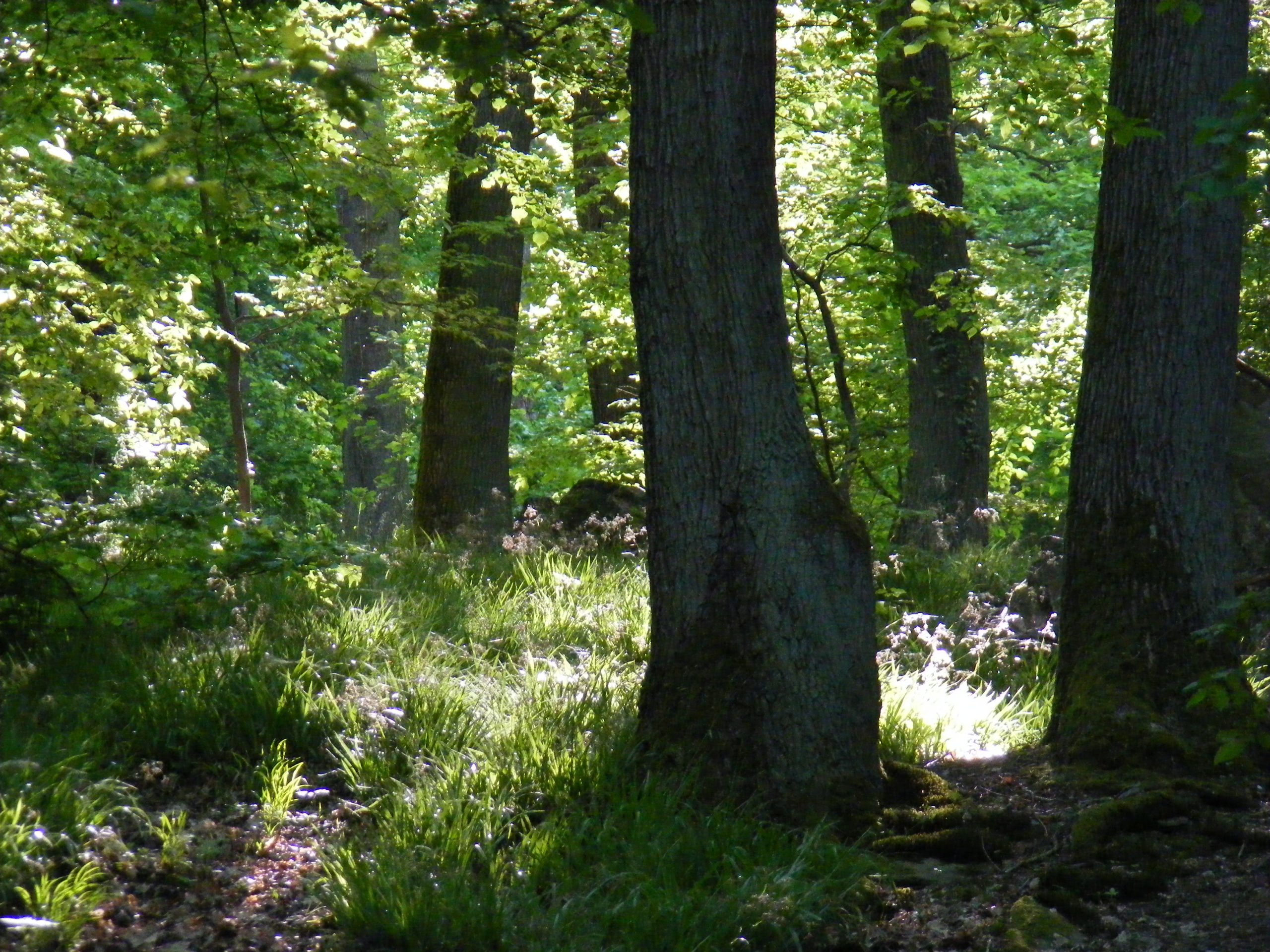
Biologische Vielfalt dokumentieren, schützen und nutzen - Land Hessen fördert LOEWE-TBG für weitere drei Jahre
19.01.2022
Biodiversität zeigt sich in der enormen Vielfalt der Lebewesen und ihren äußerst unterschiedlichen Formen und Funktionen. Diese Komplexität ist das Ergebnis von 3,5 Milliarden Jahren Evolution. Heute ermöglichen genomische Analysen von Organismen umfassende und neue Einblicke in die Entstehung und Entwicklung unserer Umwelt. So hat es sich das LOEWE-Zentrum für Translationale Biodiversitätsgenomik (TBG) zum Ziel gesetzt, die genetische Basis der biologischen Vielfalt zu erschließen, um sie für die Grundlagen- und angewandte Forschung zu nutzen. Auch für den Schutz der Artenvielfalt ist es unumgänglich, diese zu erkennen, zu verstehen und zu dokumentieren.
Ab Januar 2022 fördert das Land Hessen das LOEWE-Zentrum TBG für weitere drei Jahre mit insgesamt rund 15,6 Millionen Euro. Hinzu kommt eine Förderung für Baumaßnahmen in Höhe von rund 2,6 Millionen Euro.
Weitere Informationen finden Sie in der Pressemitteilung bei Senckenberg.
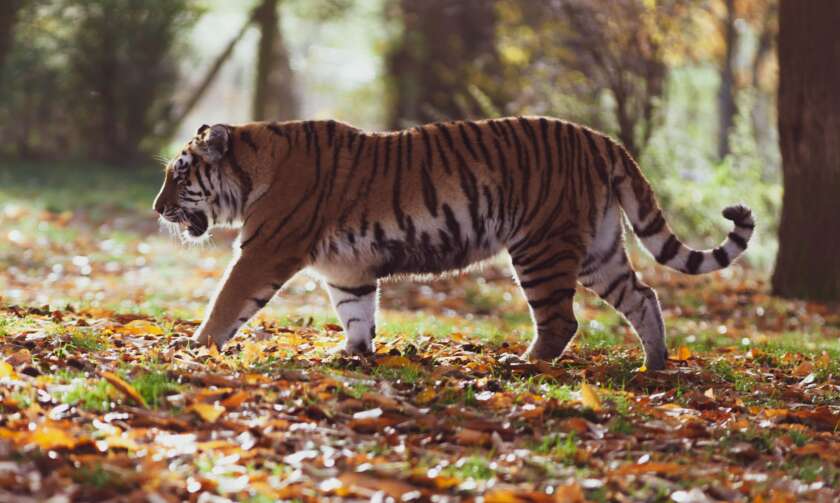
Genverlust durch einseitige Ernährung - Evolutionäre Anpassung könnte für Raubtiere gefährlich werden
18.01.2022
Ein Team von Wissenschaftler*innen der Senckenberg Gesellschaft für Naturforschung,des LOEWE-Zentrums für Translationale Biodiversitätsgenomik (TBG) und des Leibniz-Instituts für Zoo- und Wildtierforschung haben am Beispiel von 52 heutigen und 31 ausgestorbenen Säugetierarten untersucht, ob die Veränderung der Ernährung im Laufe der Evolution den Verlust von Genen nach sich zieht. Sie kommen in ihrer kürzlich im Fachjournal „Journal of Evolutionary Biology“ erschienenen Studie zu dem Ergebnis, dass der Verlust des Gens PNLIPRP1 mit einer fettarmen Ernährung zusammenhängt, unabhängig davon ob das Tier ein Pflanzen- oder Fleischfresser ist. Darüber hinaus geben die Forschenden zu bedenken, dass Raubtiere wegen des Verlustes des am Entgiftungsprozess beteiligten Gens NR1I3 besonders stark durch Umweltgifte geschädigt werden könnten.
Weitere Informationen finden Sie in der Pressemitteilung bei Senckenberg. (Foto: Pexels)

Neue DFG-Förderung für die Erforschung von Mutationsraten
15.01.2022
Das von Prof. Markus Pfenninger koordinierte Projekt „Temperaturabhängigkeit der Punktmutationsrate: unterliegende Faktoren und Prozesse“ (PF 390/15) versucht die grundlegenden Prozesse für die Temperaturabhängigkeit der Mutationsrate zu verstehen und deren evolutionäre Ursachen und Folgen zu erforschen.
Das Projekt untersucht mehrere Fragen, wie z.B.: Welche Prozesse treiben die Variation der Mutationsrate an? Warum steigt die Mutationsrate zu beiden Extremtemperaturen hin an? Was bestimmt die Position des Optimums der Mutationsrate auf der Temperaturskala? Ist es eine artspezifische Konstante oder entwickelt es sich als Reaktion auf die lokalen Temperaturbedingungen?
Das Projekt wird von der Deutschen Forschungsgemeinschaft (DFG) mit 217.881 €gefördert und hat eine Laufzeit von 2022-2025.
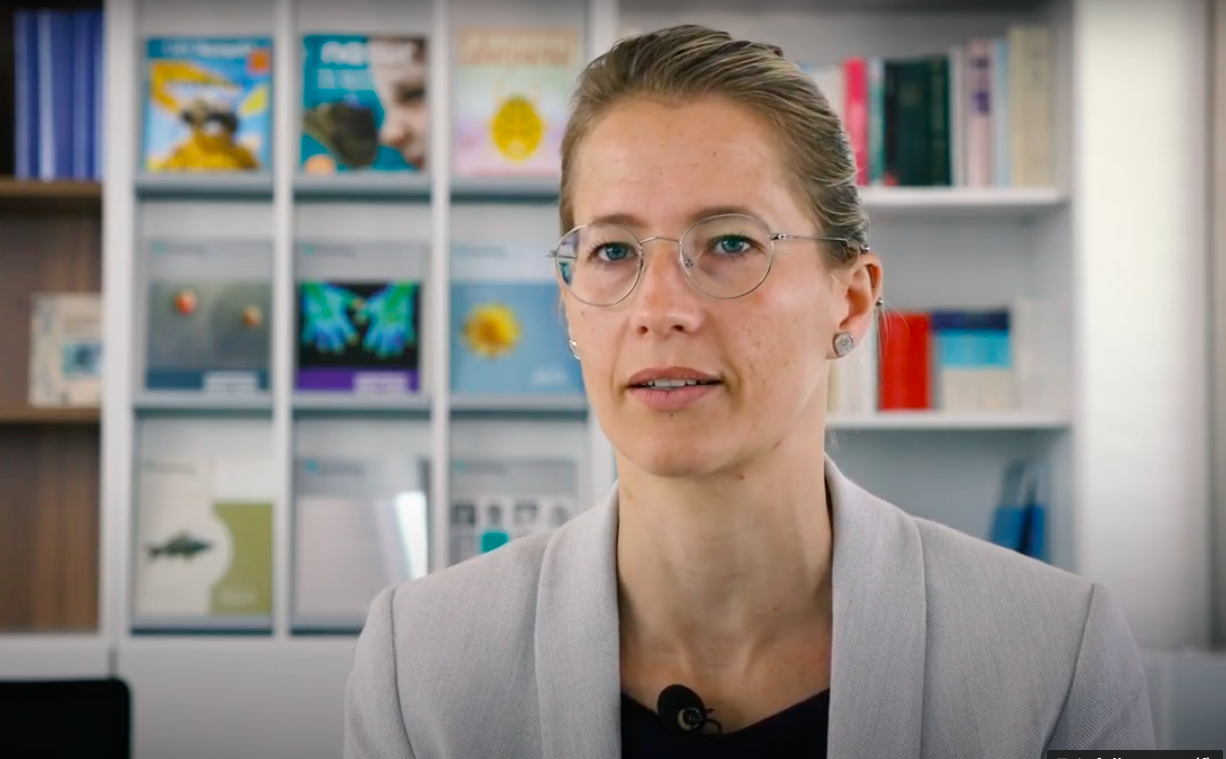
Antje Steinbrink - kommissarische Leiterin des Programmbereichs Genomisches Biomonitoring
10.01.2022
Ab Januar 2022 wird Dr. Antje Steinbrink den Programmbereich „Genomisches Biomonitoring“ koordinieren. Sie übernimmt die Aufgabe von Dr. Carsten Nowak, der diesen Bereich in der ersten Phase von LOEWE-TBG leitete. In Phase I arbeitete Dr. Antje Steinbrink in der Arbeitsgruppe von Prof. Sven Klimpel an dem Projekt „MiGen Analysis: Mikrobiom- und Genomanalysen medizinisch relevanter, hämatophager Arthropoda“. Im Mai 2021 wechselte sie zur Arbeitsgruppe von Prof. Andreas Vilcinskas an die JLU Gießen. Kurz darauf hat sie die Leitung einer eigenen Nachwuchsgruppe übernommen mit dem Projekt „RNAi als alternativer Ansatz gegen Stechmücken (Culicidae)„.
„Ich freue mich auf die neue Aufgabe und bin sehr gespannt auf die neuen Einblicke und Herausforderungen, die mir diese Aufgabe bietet“, so Antje Steinbrink

LOEWE-TBG geht in die zweite Phase!
02.11.2021
Wie das Hessische Ministerium für Wissenschaft und Kunst (HMWK) heute bekannt gab, wird LOEWE-TBG in einer zweiten Förderphase von 2022 bis 2024 mit rund 15,6 Millionen Euro zuzüglich 2,6 Millionen Euro für Baumaßnahmen weiter unterstützt. Der Programmbeirat zeigte sich beeindruckt von den ausgezeichneten Evaluierungsergebnissen. „Beide Verbünde [die LOEWE-Zentren TBG und DRUID, Anm. d. Red.] überzeugen nicht nur durch hervorragende Forschungsleistungen, sondern auch durch ihre hohe Sichtbarkeit in die wissenschaftliche Community und in die Öffentlichkeit“, erläutert der Vorsitzende des LOEWE-Programmbeirats, Prof. Dr. Stefan Treue. Für LOEWE-TBG bedeutet die Bewilligung der Fördermittel die großartige Möglichkeit, die bisherige Erforschung der genomischen Grundlagen von Biodiversität gemeinsam mit den Partnerinstitutionen auf sehr hohem Niveau fortführen zu können und die Ergebnisse auch der angewandten Forschung zugänglich zu machen. Pressemitteilung des HMWK
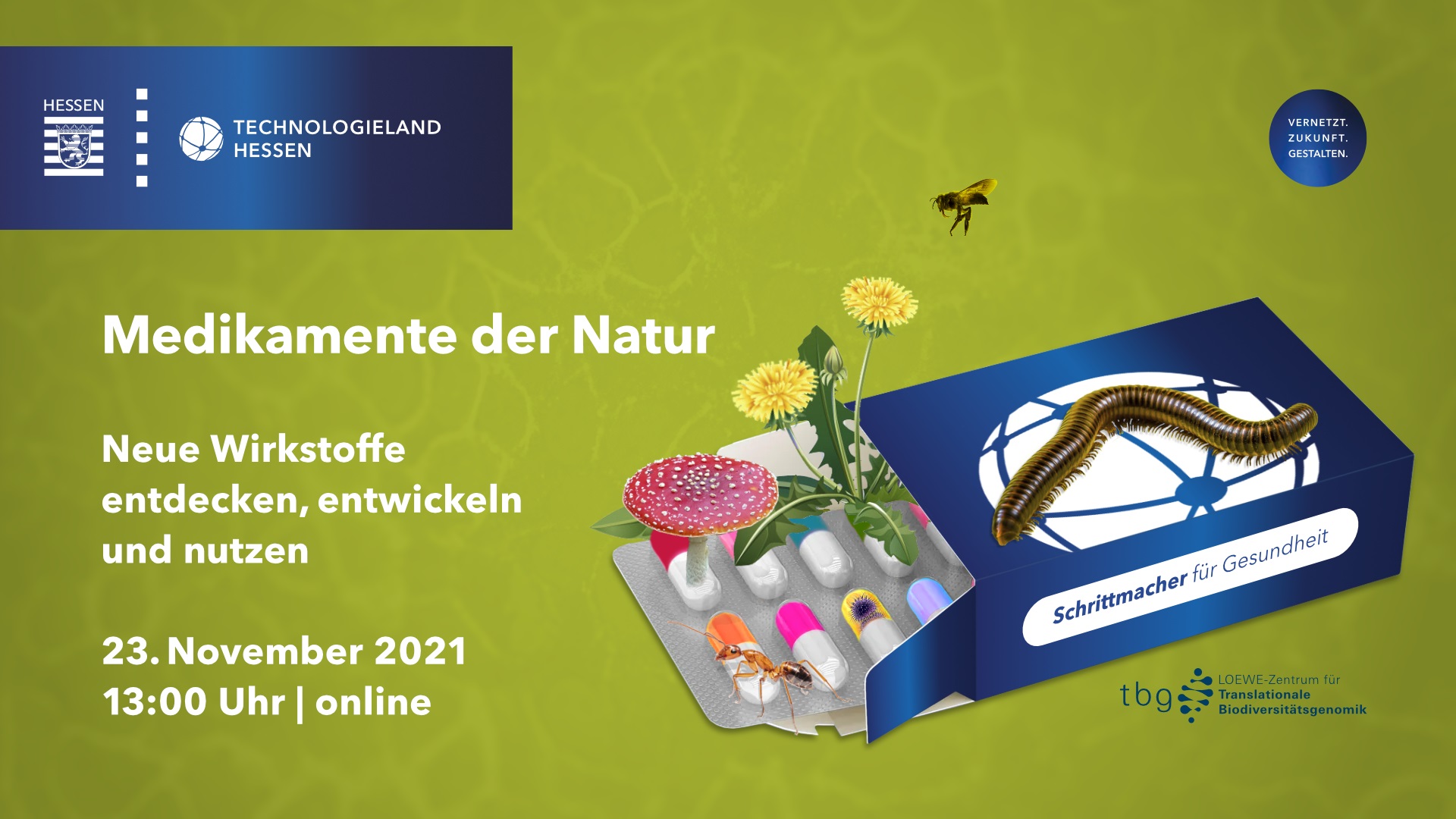
Medikamente der Natur - Digitale Veranstaltung gibt Einblick in die Erforschung von Naturstoffen
19.11.2021
In der digitalen Veranstaltung „Medikamente der Natur“, die von Technologieland Hessen in Kooperation mit LOEWE-TBG angeboten wird, präsentieren Expert*innen aus Wissenschaft und Industrie in sieben Kurzvorträgen neue Strategien für die Entdeckung, Entwicklung und Anwendung von Wirkstoffen und diskutieren im Anschluss die aktuellen Herausforderungen der Branche.
Die Referent*innen der Veranstaltung geben Einblick in unterschiedliche Aspekte der Naturstoff-Forschung – vom Aufspüren interessanter Wirkstoffe in Tiergiften, zur Behandlung von Influenza-Infektionen und parasitärer Tierkrankheiten bis zur Erforschung des Einsatzes von Pilzen im Pflanzenschutz.
Die Veranstaltung findet am 23. November. zwischen 13:00 – 16:30 Uhr statt.
Weitere Infos
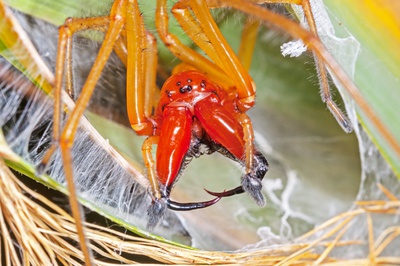
Der Mix macht’s: Die komplexe Biologie des Spinnengifts
09.09.2021
Ein internationales Forscherteam um Dr. Tim Lüddecke hat gemeinsam mit Kollegen aus Australien erstmalig die gewonnenen Einsichten zur Biologie und Evolution von Spinnengiften in einem Übersichtsartikel zusammengefasst und interpretiert. „Spinnengift wird entscheidend vom Lebensabschnitt, Lebensraum und vor allem vom Geschlecht beeinflusst. Es ist außerdem eher das Zusammenwirken der vielen Bestandteile als die Wirkung eines einzelnen Toxins, das Spinnengift so wirksam macht. Durch ihre Wechselwirkungen steigern die Komponenten ihre Wirksamkeit und ergänzen sich so sprichwörtlich zu mehr als die Summe ihrer Teile“, sagt Dr. Tim Lüddecke.
Weitere Informationen finden Sie in der wissenschaftlichen Studie oder in der Pressemitteilung bei JLU. (Foto: Wolfgang Dibiasi)
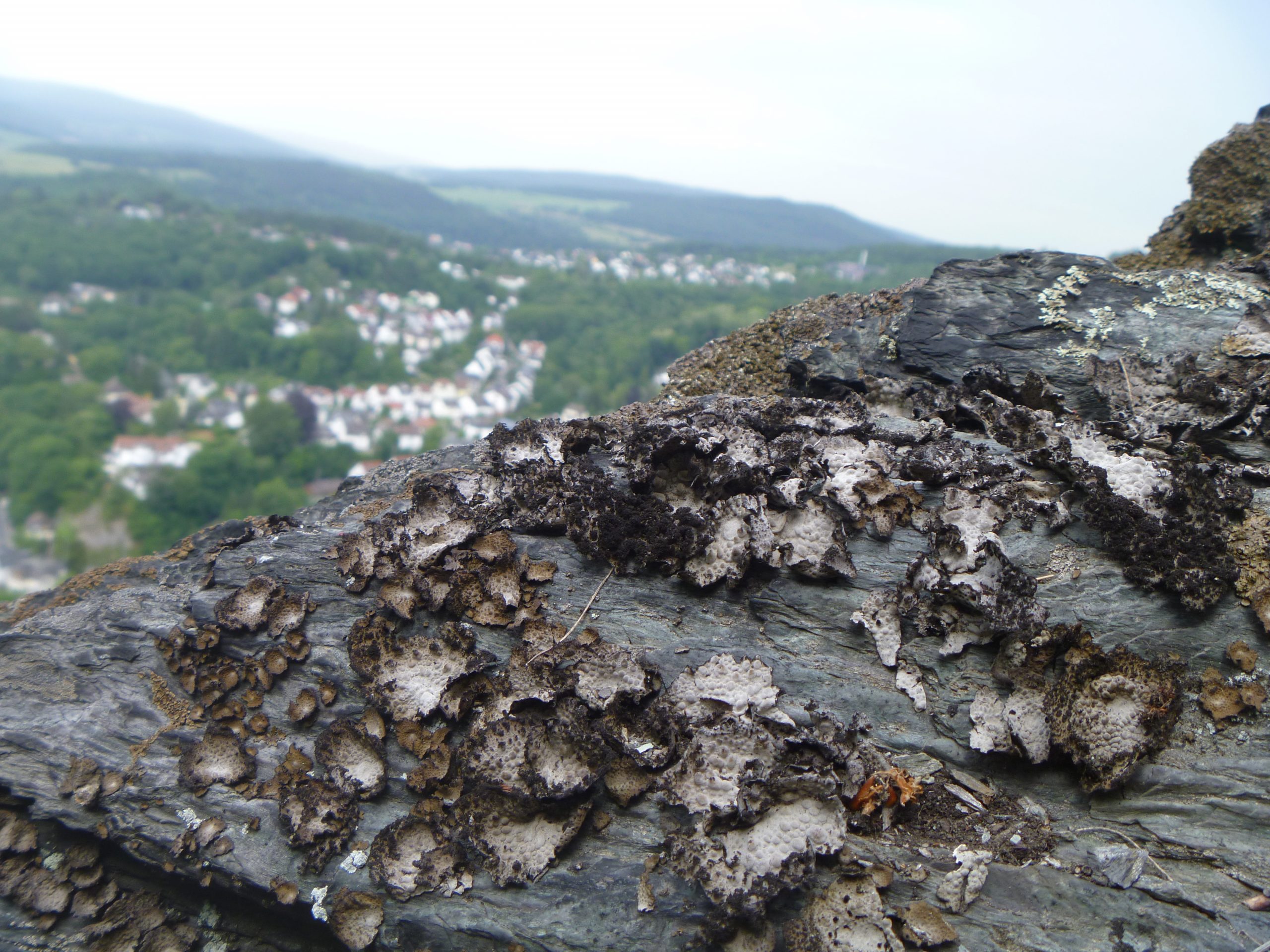
Genomanalyse: Flechten produzieren Naturstoffe je nach Klimazone
20.07.2021
Von Organismen gebildete Naturstoffe sind vor allem als Mittel gegen Krebs und andere Krankheiten bekannt. Doch sie können noch mehr, wie Forscher*innen des Senckenberg Biodiversität und Klima Forschungszentrums und des LOEWE-Zentrums für Translationale Biodiversitätsgenomik im Fachmagazin „Environmental Microbiology“ zeigen. Das Team konnte erstmals belegen, dass es bei flechtenbildenden Pilzen einen klima-spezifischen Unterschied in Gengruppen gibt, die für die Produktion von Naturstoffen verantwortlich sind. Die Naturstoffe tragen vermutlich dazu bei, dass sich Flechten an unterschiedliche Umweltbedingungen anpassen können. Weitere Informationen finden Sie in der wissenschaftlichen Studie oder in der Pressemitteilung bei Senckenberg. (Foto: Imke Schmitt)
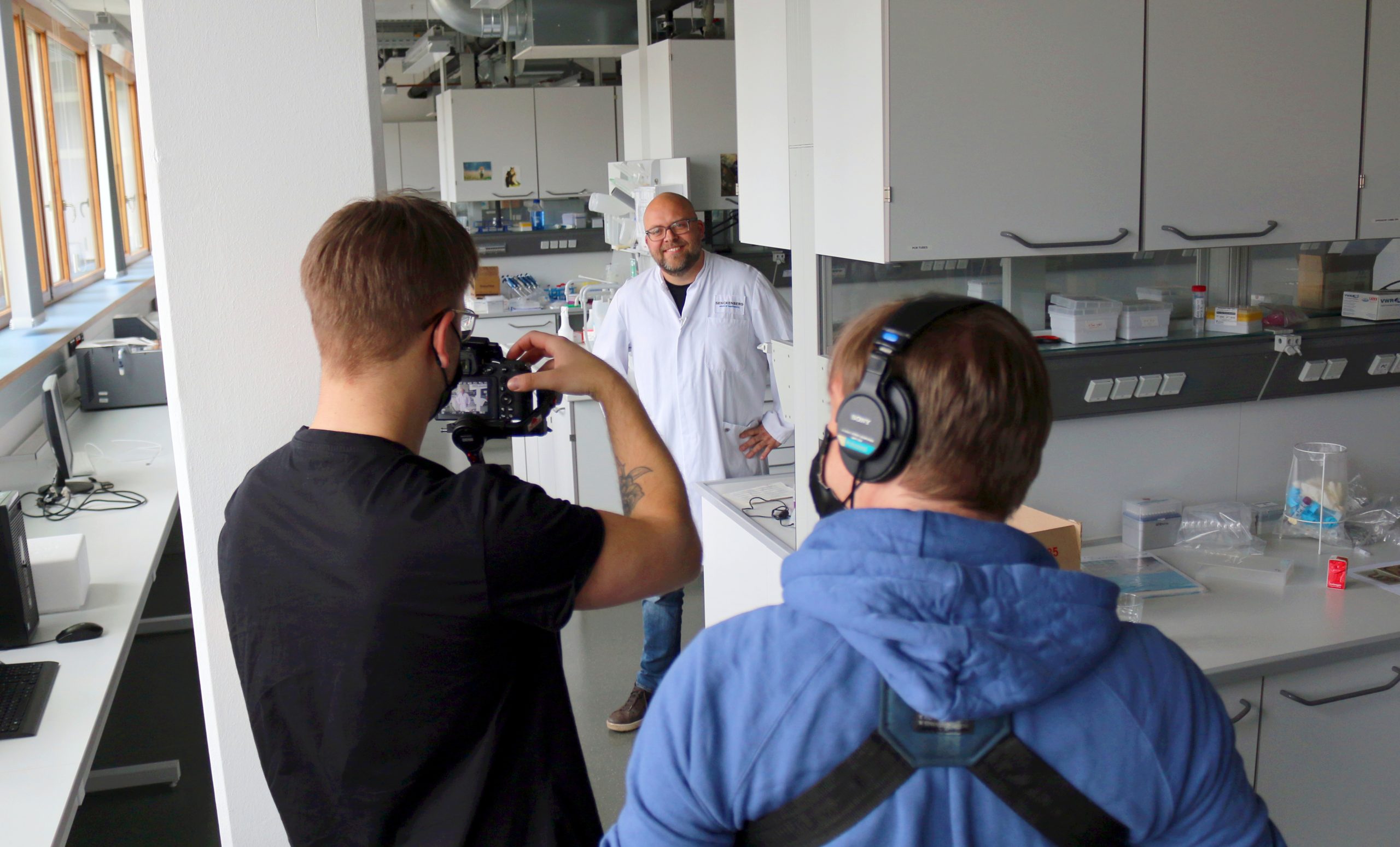
ProLOEWE Wissenschaftsrallye: TBG mit Video beim Sommerquiz
20.07.2021
Das ist Forschung aus Hessen für Hessen: TBG und 20 weitere vom Land geförderte LOEWE-Vorhaben starten am 2. August in ein Sommerquiz für die ganze Familie. Die ProLOEWE Wissenschaftsrallye bietet per Kurzfilm täglich neue Einblicke in die Forschung sowie ein neues Wissenschaftsrätsel. Ob Experimentieren, Malen, Basteln oder bisher unbekannte Dinge in der Natur entdecken, die Rätsel sind vielfältig, genau wie die LOEWE-Vorhaben – und die Preise. Wer miträtselt und seinen Lösungsvorschlag für ein oder mehrere Videos bis zum 2. September einreicht, kann verschiedene Preise gewinnen von Experimentierbox bis Museumsführung. Die Auflösung gibt’s am 21. September – natürlich wieder per Kurzfilm. Alle Videos und Informationen zur Teilnahme und Terminen unter proloewe.de. (Foto: Eva Diehl/Senckenberg)

Neue Methode entwickelt: Wolf-Hund-Mischlinge sicher erkennen
15.07.2021
Ein europäisches Team um TBG-Wissenschaftler Dr. Carsten Nowak hat im Fachjournal „BMC Genomics“ eine neue Methode vorgestellt, die es erlaubt, Wolf-Hund-Hybriden anhand von Umweltproben, wie Kot, Haaren oder Speichelresten sicher zu erkennen. Die auf DNA-Sequenzen, sogenannten SNPs, basierende Methode ist deutlich höher auflösend als herkömmliche Verfahren und soll zukünftig als Standardverfahren dienen, welches eine vergleichbare Erfassung von Hybridisierungsraten in ganz Europa ermöglicht. In derselben Studie zeigen die Forschenden, dass Wölfe in Deutschland derzeit keine erhöhten Anteile von Hundegenen aufweisen. Weitere Informationen finden Sie in der wissenschaftlichen Studie oder in der Pressemitteilung bei Senckenberg. (Foto: Jan Noack/Senckenberg)

Vortrag: „Wirtschaftsfaktor Biodiversität“ und genetische Ressourcen
05.07.2021
Großes Finale der Vortragsreihe zu Biodiversitätsgenomik: Senckenbergs ehemaliger Generaldirektor Prof. Dr. Dr. Volker Mosbrugger und Dr. Luigi de Gaudenzi, TBG Technologietransfer, sprechen in einem gemeinsamen Vortrag über die wirtschaftliche Rolle der Biodiversität und genetischer Ressourcen. Fortschritte in der Biotechnologie machen die Nutzung genetischer Ressourcen zunehmend relevant, etwa bei der Züchtung neuer Nutzpflanzen oder der Gewinnung medizinischer Wirkstoffe. Gleichzeitig sorgt der Rückgang der Artenvielfalt für eine Verknappung genetischer Ressourcen. Wie kann eine nachhaltige Nutzung – auch international – gelingen und welche Regelungen gibt es bisher? Diese und andere Fragen sind Thema des Vortrags „Genetische Vielfalt als Ressource – Welche Rolle der ‚Wirtschaftsfaktor Biodiversität‘ in der Zukunft spielen wird“. Die Veranstaltung findet am Mittwoch, 27. Juli, um 19.15 Uhr digital statt. Einen Livestream finden Sie unter www.senckenberg.de/live. Die Veranstaltung ist der letzte Teil der Senckenberg-Vortragsreihe „Bauplan der Natur – Wie Genomik unseren Blick auf die biologische Vielfalt revolutioniert“.
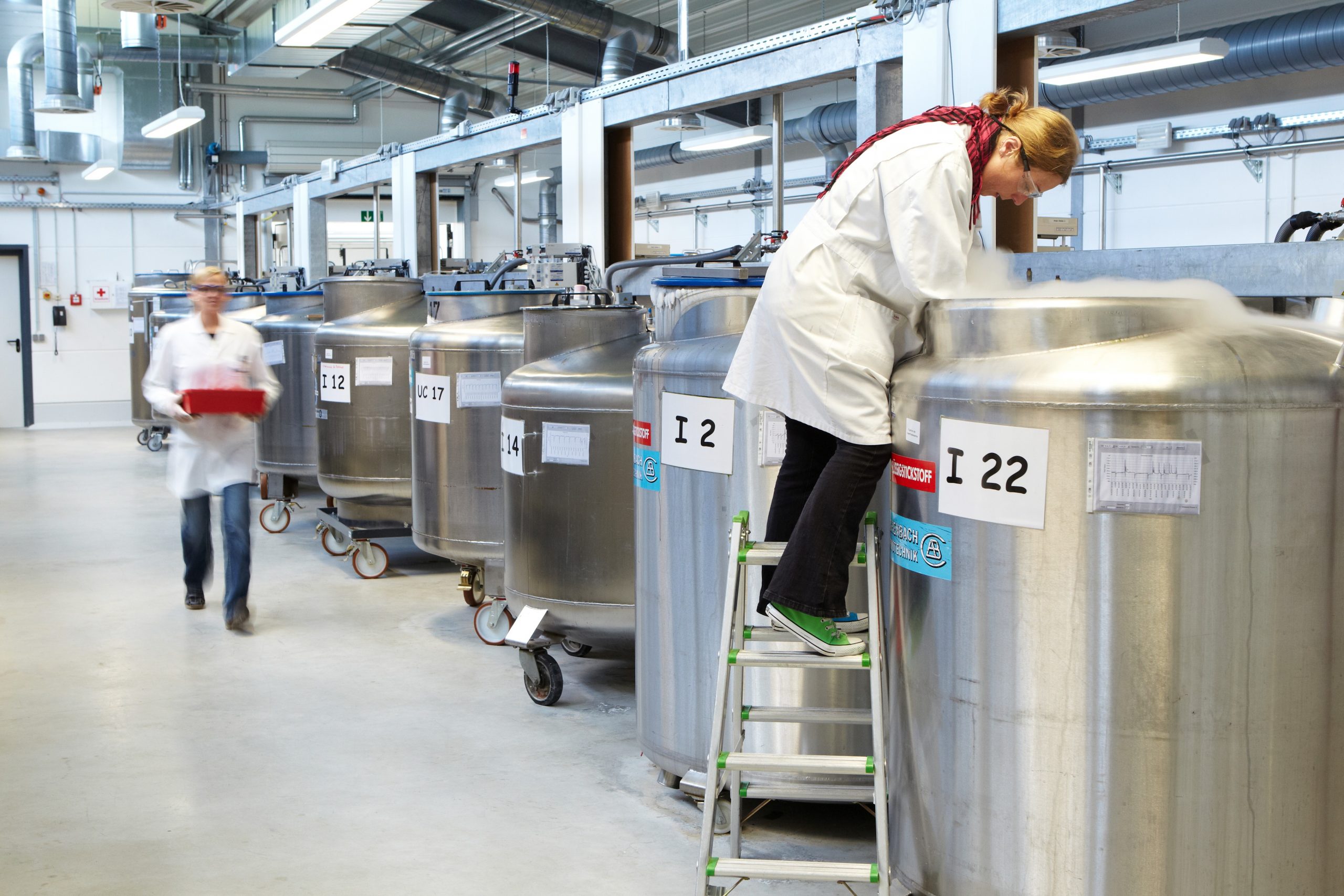
Schatzkammer der Umweltproben geöffnet – TBG analysiert
28.06.2021
Bei minus 150 Grad Celsius lagern hier mehr als 500.000 Momentaufnahmen: Die Umweltprobenbank des Bundes archiviert Proben aus verschiedenen Lebensräumen in ganz Deutschland. Seit den 1980er Jahren lassen sich aus ihnen Umweltveränderungen ablesen. Unter Federführung der Universität Duisburg-Essen (UDE) entwickeln Forscher*innen nun neue genetische Methoden, mit denen die Proben künftig noch mehr preisgeben sollen – zum Beispiel über das Insektensterben und neu einwandernde Arten. Beteiligt sind daran auch Forscher*innen des LOEWE-Zentrums für Translationale Biodiversitätsgenomik (TBG) und des Senckenberg Biodiversität und Klima Forschungszentrums (SBiK-F) in Frankfurt. Das Umweltbundesamt fördert das Projekt „TrenDNA“ mit 1,2 Millionen Euro. Weitere Infos zum Projekt sowie der Rolle von Senckenberg und TBG finden Sie hier. (Foto: Fraunhofer IME, Studio 95, Ulrich Kaifer)
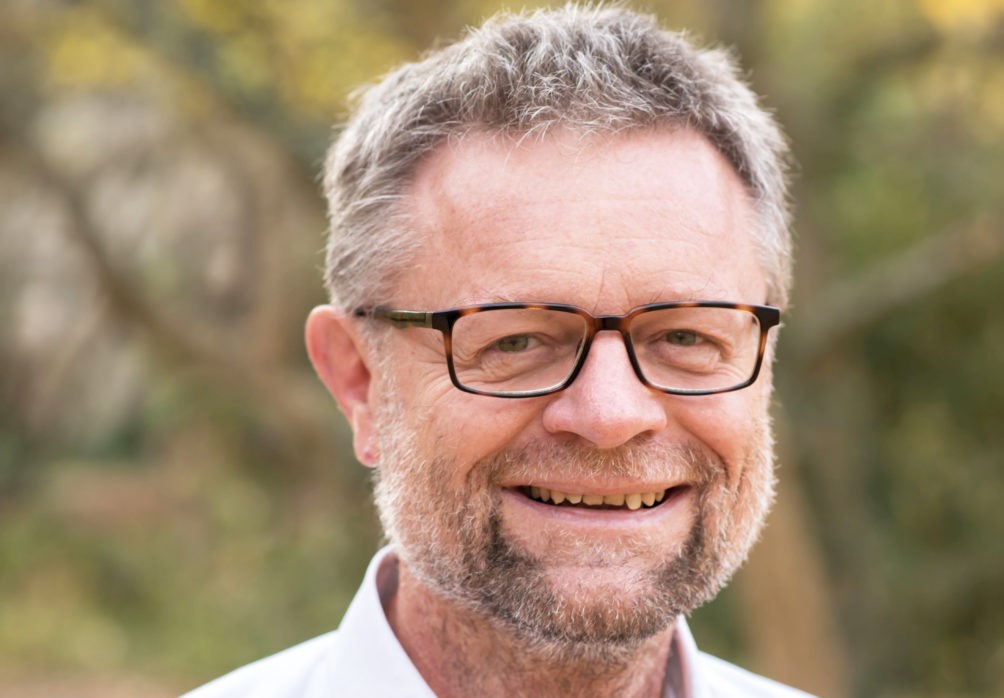
Gast-Vortrag von Bernhard Misof: Molekulare Biodiversitätsforschung
20.06.2021
Ein hochkarätiger Gast spricht am Mittwoch in der Senckenberg-Vortragsreihe über Genomik: Prof. Dr. Bernhard Misof, Direktor des Zoologischen Forschungsmuseums Alexander Koenig und Leiter des Zentrums für molekulare Biodiversitätsforschung. Sein Vortrag „Die genomischen Grundlagen des Wandels: Möglichkeiten und Potenziale molekularer Biodiversitätsforschung“ beleuchtet, wie sogenannte OMICS-Methoden zur Sequenzierung und Analyse von Erbinformation, Proteinen und Stoffwechselprodukten den Biowissenschaften neue Dimensionen eröffnen. Die Veranstaltung findet am Mittwoch, 23. Juni, um 19.15 Uhr digital statt. Einen Livestream finden Sie unter www.senckenberg.de/live. Die Veranstaltung ist Teil der Senckenberg-Vortragsreihe „Bauplan der Natur – Wie Genomik unseren Blick auf die biologische Vielfalt revolutioniert“. (Foto: Museum Koenig, Bonn)
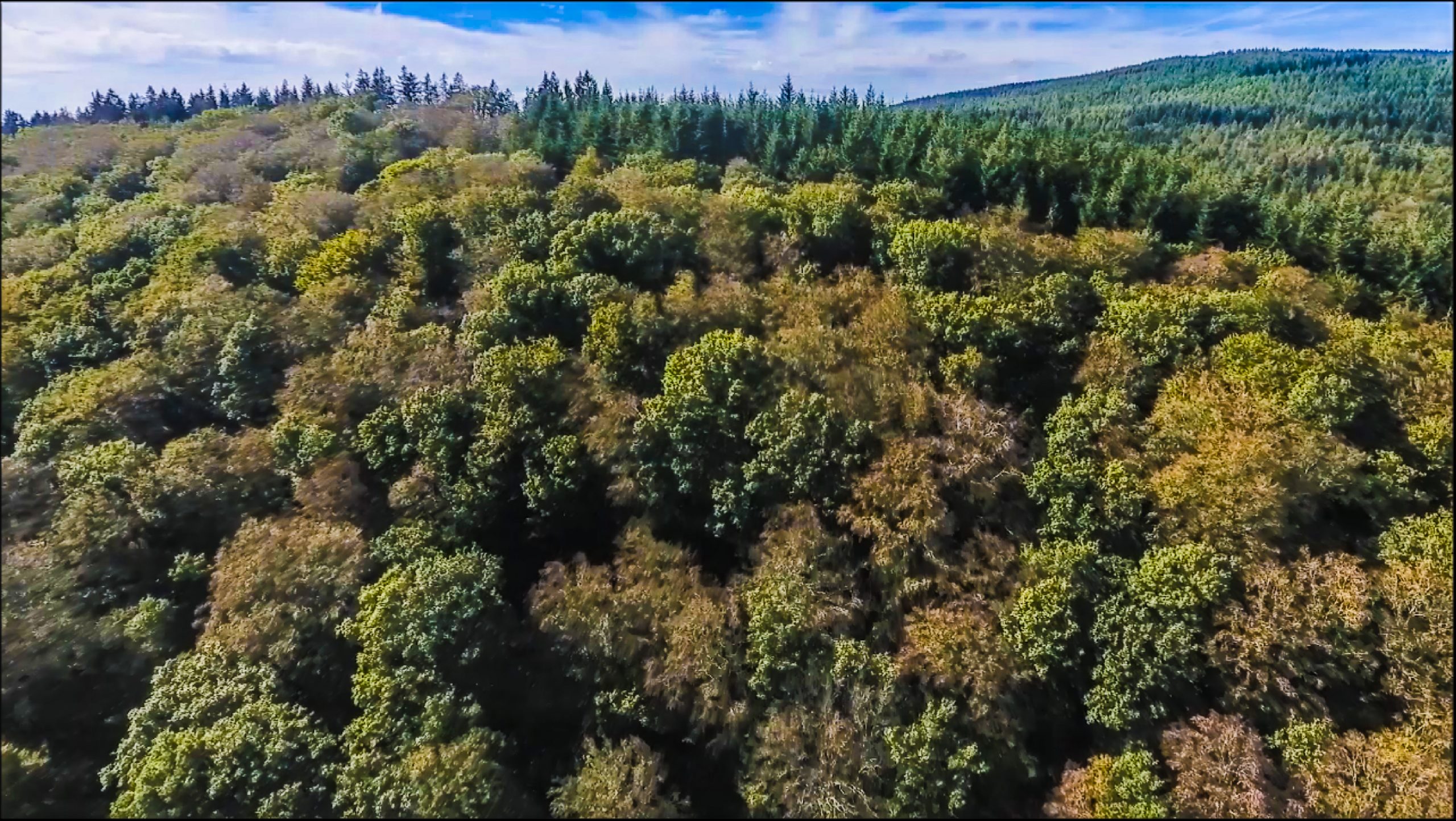
Nach Hitzesommern: Gene für Trockenresistenz in Buchen identifiziert
17.06.2021
Welche Bäume überstehen trockene Hitzesommer und welche tragen starke Schäden davon? Für Buchen kann man diese Frage nun per Genomanalyse beantworten. Ein Team um Prof. Dr. Markus Pfenninger vom LOEWE-Zentrum für Translationale Biodiversitätsgenomik und dem Senckenberg Biodiversität und Klima Forschungszentrum hat geschädigte und gesunde Buchen in Hessen untersucht und Bereiche in deren Erbgut identifiziert, die für Dürreresistenz zuständig sind. Anhand dieser DNA-Abschnitte lässt sich für jeden einzelnen Baum sagen, wie gut er längere Trockenperioden übersteht. Dank gezielter DNA-Tests könnten daher widerstandsfähige Exemplare für die Forstwirtschaft ausgewählt und Buchenwälder für den Klimawandel fit gemacht werden. Die Studie hat das Fachmagazin „eLife“ veröffentlicht. Alle Infos und die Pressemitteilung finden Sie bei Senckenberg. (Drohnenpilot: Volker Heymann/Foto: Markus Pfenninger)

Digital Youth Earth Talk: "Die Ära der DNA-Sequenzierung betrifft uns alle"
16.06.2021
Die DNA ist die Grundeinheit der Vererbung sämtlicher biologischer Informationen. Es ist unmöglich, die Evolution, die Biologie von Organismen und Zellen, aber auch Krankheiten oder das Verhalten von Menschen zu verstehen, ohne sich mit dem Konzept des Gens auseinanderzusetzen. Technologien ermöglichen es inzwischen sogar, DNA-Stücke in die Zellen eines lebenden Organismus einzubringen und dadurch umzuprogrammieren. Handelt es sich hierbei um eine Schlüsseltechnologie oder eine Gefahr für unsere Zukunft?
Diese und weitere Fragen möchte der Förderverein Senckenberg mit Jugendlichen zwischen 15 und 25 Jahren und Prof. Dr. Axel Janke, Sprecher des LOEWE-Zentrums TBG, nach einem digitalen Impulsvortrag diskutieren. Das Event findet am 17 Juni, um 18:00 Uhr online statt. Die Teilnahme ist kostenlos.
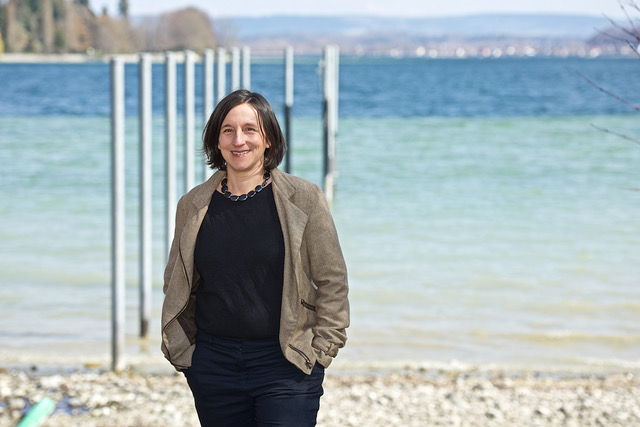
Gast-Vortrag von Laura Epp: Zeitreise per Umwelt-DNA
02.06.2021
Wer würde sich nicht wünschen, in die Vergangenheit schauen zu können? Neue molekulare Methoden machen dies jetzt möglich – zumindest, wenn es um die Geschichte von Ökosystemen geht. Wie das möglich ist erläutert Gastrednerin Prof. Dr. Laura Epp in ihrem Vortrag „Umwelt-DNA aus der Vergangenheit: molekulare Paläoökologie zur Erforschung der Geschichte und Zukunft von Ökosystemen“. Laura Epp forscht und lehrt am Limnologischen Institut der Universität Konstanz und ist beteiligt am Forschungsnetzwerk PHYTOARK, in das auch TBG-Forscher*innen eingebunden sind. Der Vortrag findet am Dienstag, 8. Juni, um 19.15 Uhr digital statt. Einen Livestream finden Sie unter www.senckenberg.de/live. Die Veranstaltung ist Teil der Senckenberg-Vortragsreihe „Bauplan der Natur – Wie Genomik unseren Blick auf die biologische Vielfalt revolutioniert“.
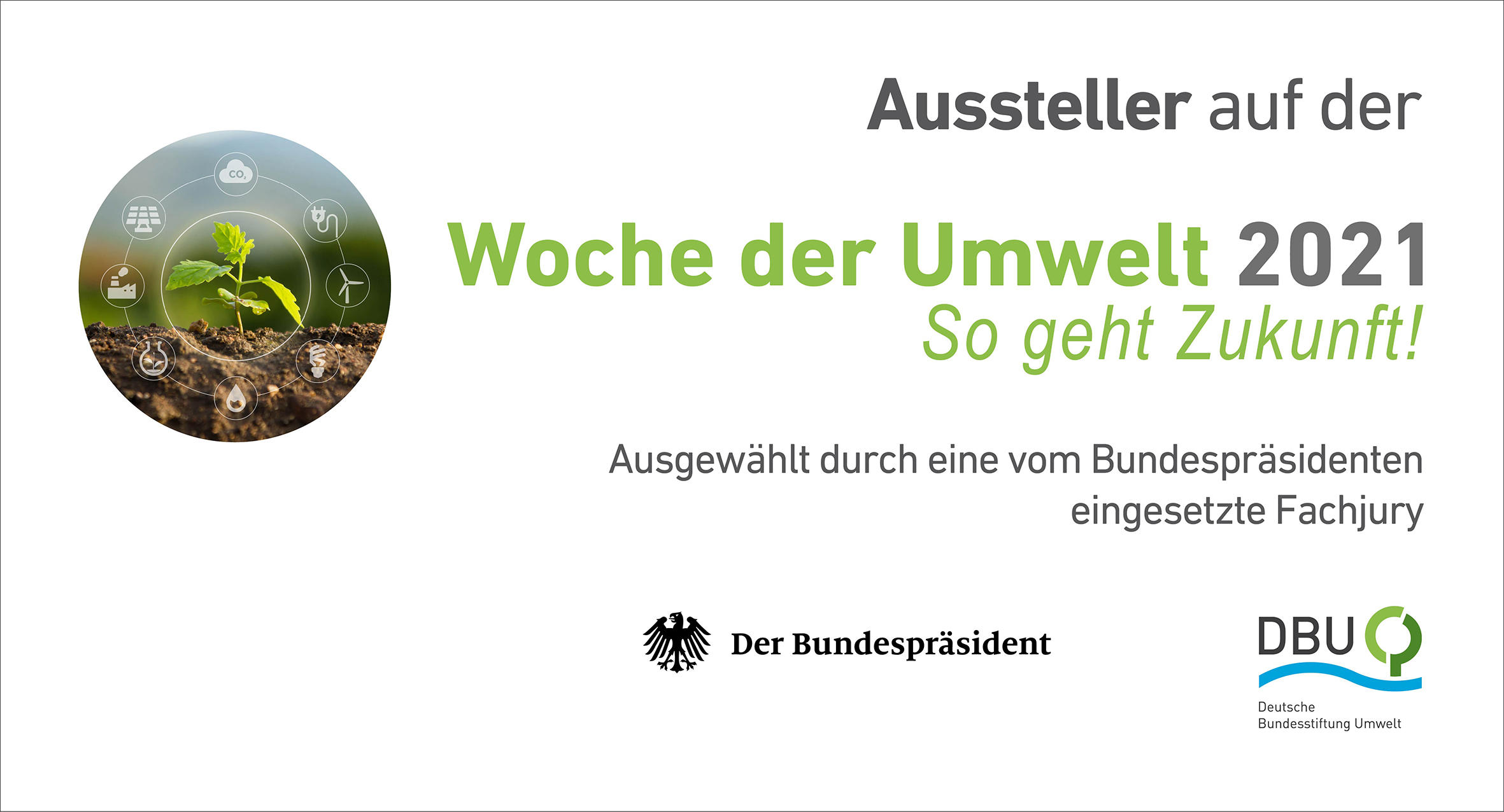
LOEWE-TBG präsentiert sich am am 10. und 11. Juni auf der „Woche der Umwelt“
12.05.2021
Die diesjährige Veranstaltung steht unter dem Motto „So geht Zukunft“. In bewährter Tradition lädt Bundespräsident Frank-Walter Steinmeier in Zusammenarbeit mit der Deutschen Bundesstiftung Umwelt (DBU) in seinen Berliner Amtssitz ein. Eine vom Bundespräsidenten eingesetzten Fachjury hat die Ausstellenden auserkoren, ihr Engagement für den Umweltschutz zu zeigen. Wegen der Corona-Pandemie findet die Veranstaltung im hybriden Format statt – teils in Präsenz, teils digital. Die 150 Ausstellenden, unter anderen auch LOEWE-TBG werden sich dabei mit einem persönlichen Steckbrief sowie ausführlichem Text-, Bild- und Tonmaterial online präsentieren.
Alle Infos: https://www.woche-der-umwelt.de/
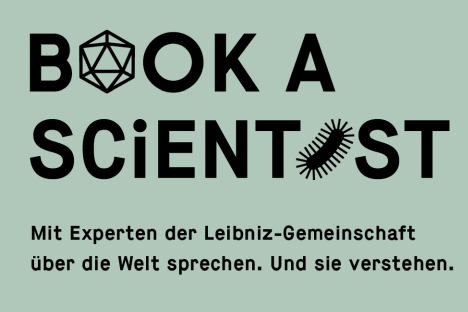
Speeddating mit der Wissenschaft – Marco Thines ist dabei
11.05.2021
TBG-Projektleiter Prof. Dr. Marco Thines macht mit bei der Leibniz-Aktion „Book a Scientist“. Neugierige und Wissensdurstige können sich am 1. Juni jeweils 25 Minuten mit ihm unterhalten und ihn alles fragen, was sie schon immer über das Thema wissen wollten: Wie viele Arten können wir noch entdecken und wo? Denn gerade einmal zehn Prozent der Gliedertier- und Pilzarten sind Schätzungen zufolge überhaupt bekannt. Wo kann man also die übrigen 90 Prozent finden, und wie schützt man das, was man noch gar nicht kennt? Diese und andere Fragen beantwortet Thines online in persönlichen Einzelgespräche. Anmeldung unter veranstaltungen@leibniz-gemeinschaft.de unter Angabe Ihres Namens, des gewählten Themas und des gewünschten Zeitfensters. Für weitere Infos klicken sie hier.
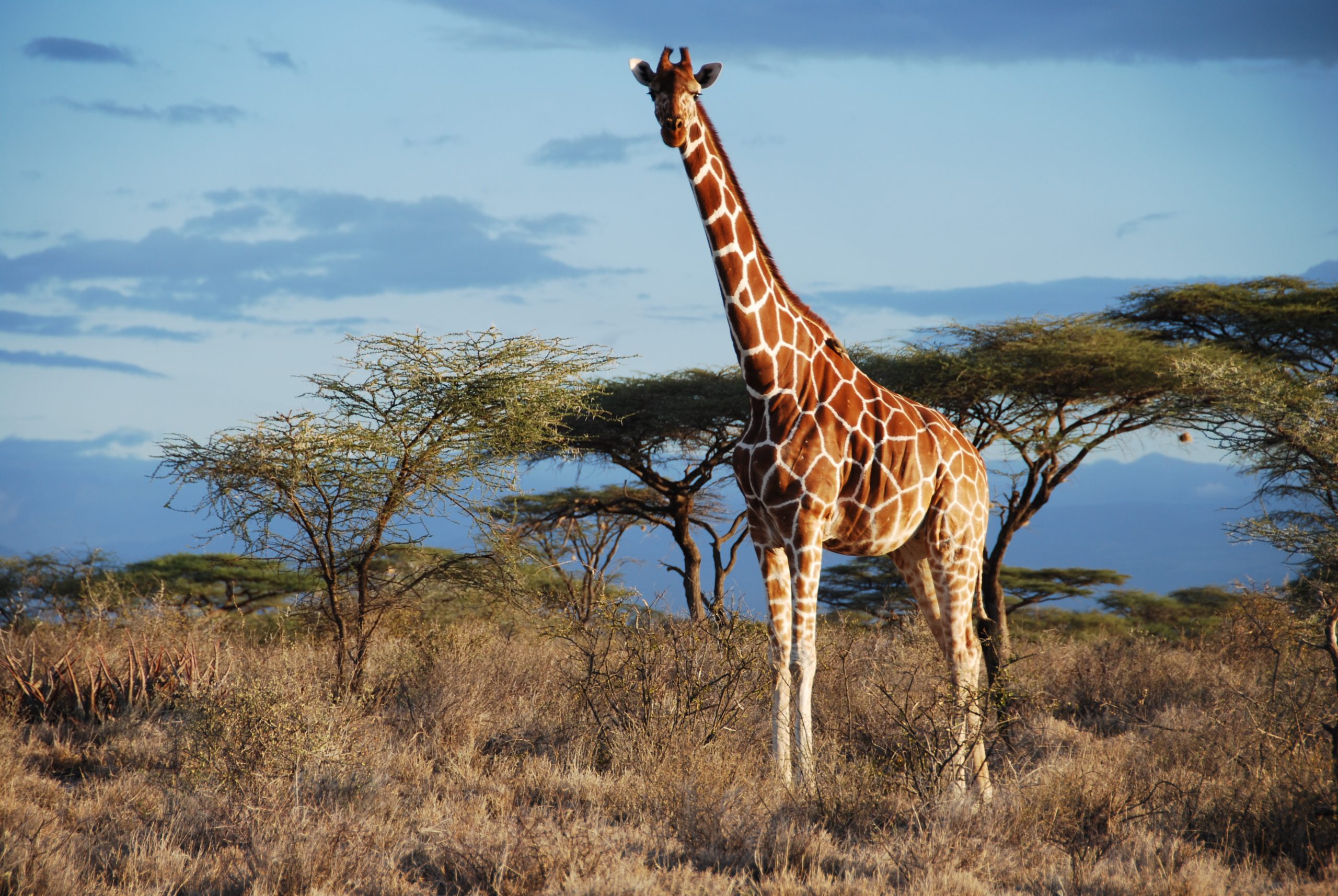
Genom-Analysen bestätigen vier Arten von Giraffen
05.05.2021
Optisch sind sie kaum zu unterscheiden, aber genetische Analysen zeigen: Es gibt vier Arten von Giraffen mit insgesamt sieben Unterarten. Das hat ein internationales Team um Prof. Dr. Axel Janke vom LOEWE-Zentrum für Translationale Biodiversitätsgenomik herausgefunden. Den umfassenden Erbgutanalysen zufolge entwickeln sich die vier Giraffenlinien seit Jahrtausenden getrennt voneinander. Die Verwandtschaftsverhältnisse innerhalb der Giraffen waren umstritten. Lange ging man von einer, dann vier und später von drei Arten aus. Die im Fachmagazin „Current Biology” veröffentlichte Studie liefert neue Erkenntnisse über die Evolution der Giraffen und könnte ihren Schutz in Afrika auf ein neues Fundament stellen. Lesen Sie die Pressemitteilung bei Senckenberg. (Foto: Julian Fennessy, Giraffe Conservation Foundation)
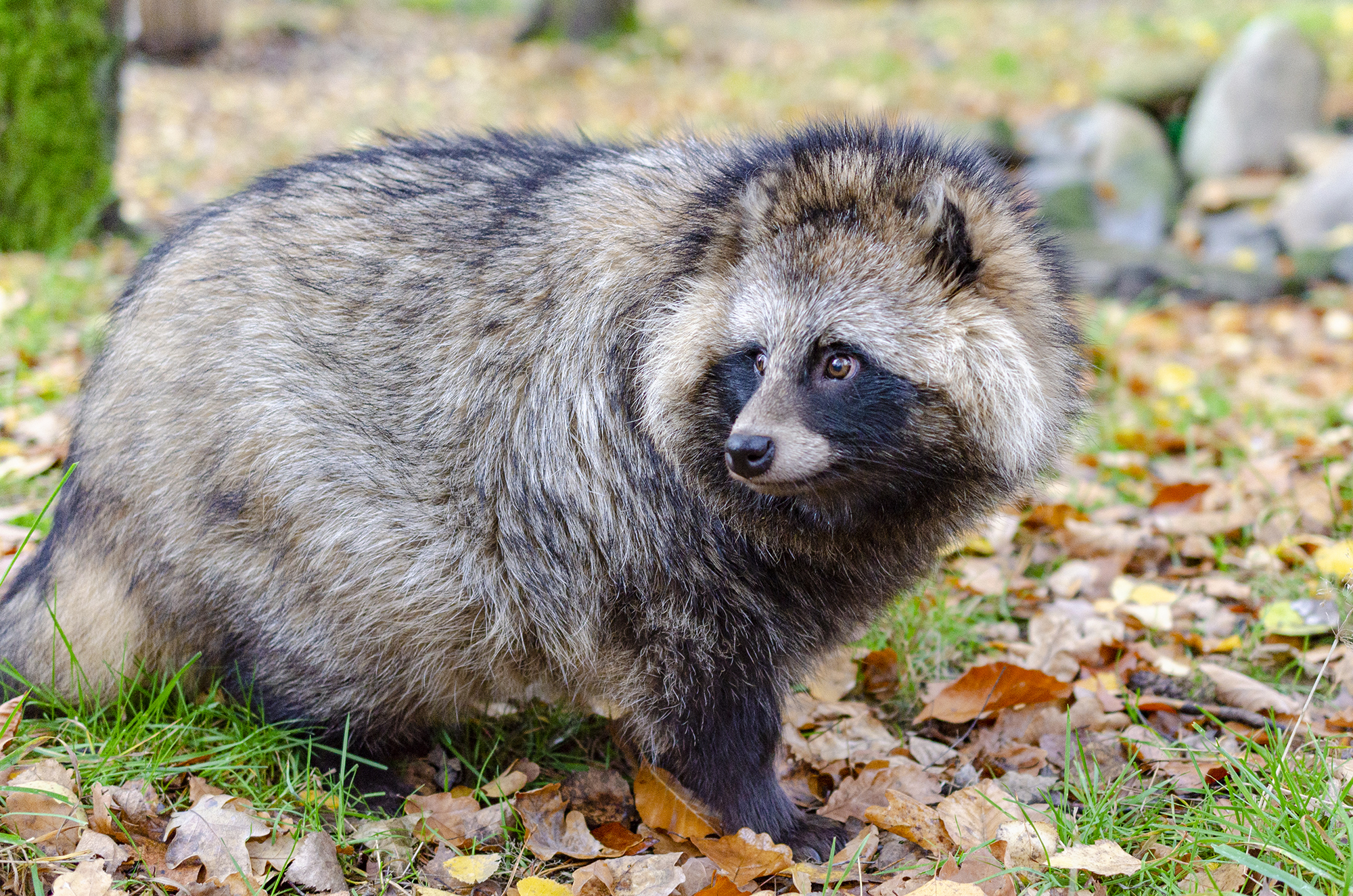
Marderhund-Genom sequenziert - Möglicher SARS-CoV-2-Reservoirwirt
04.05.2021
Forscher*innen vom LOEWE-Zentrum für Translationale Biodiversitätsgenomik (TBG) haben erstmals das gesamte Erbgut des Marderhundes sequenziert und genetische Belege dafür gefunden, dass er SARS-CoV-2 übertragen kann. Der aus Ostasien stammende Fuchsverwandte hat sich in Europa weit verbreitet und wird in Deutschland als invasive Art eingestuft. Es ist hinlänglich bekannt, dass er verschiedene Viren in sich tragen und Menschen damit infizieren kann. Die Studie legt nahe, dass der Marderhund auch ein Reservoirwirt für Coronaviren sein könnte. Den Artikel hat das Fachmagazin „Frontiers in Genetics“ veröffentlicht.. Lesen Sie die Pressemitteilung bei Senckenberg. (Foto: Dorian D. Dörge)
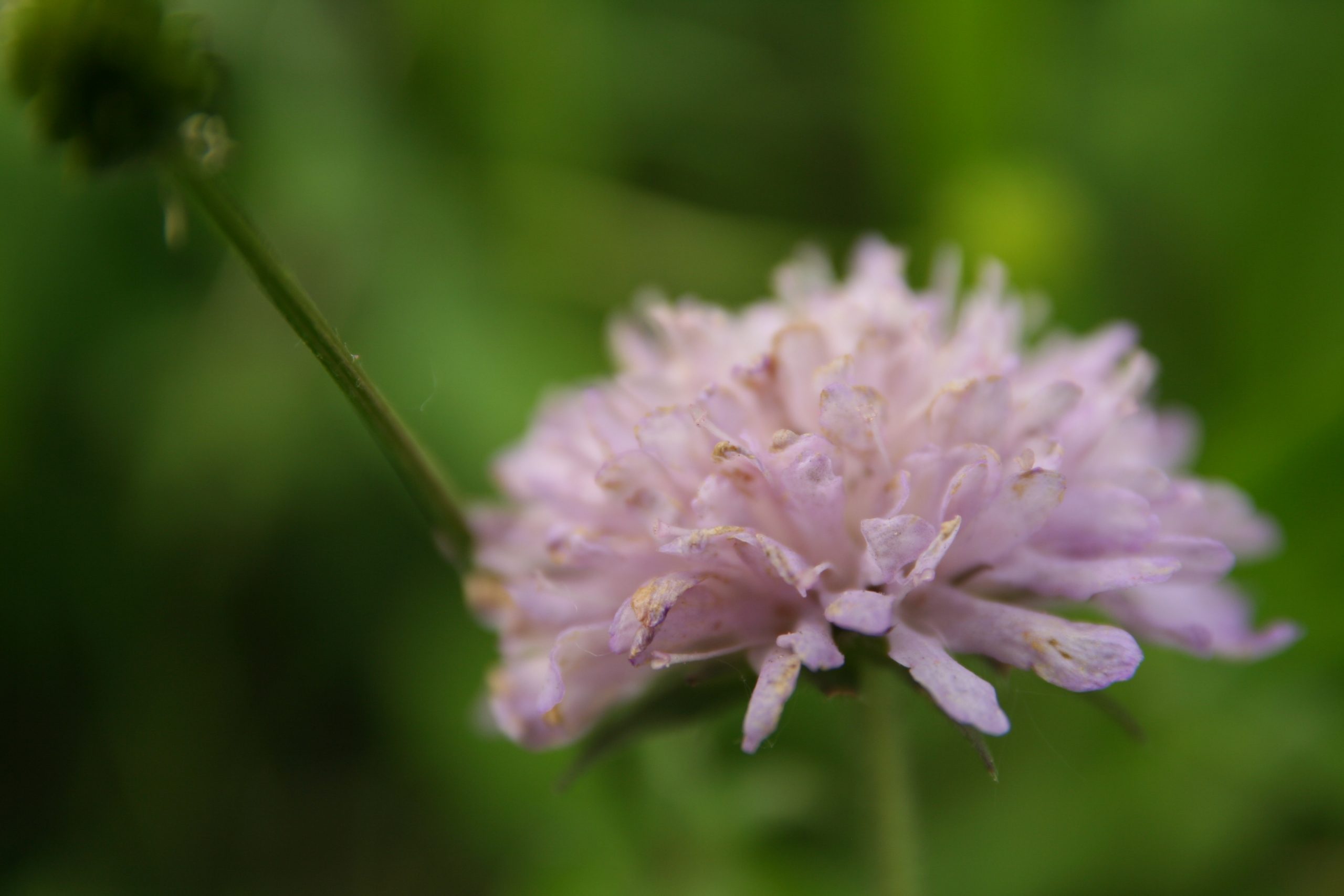
Millionen winziger Pilzarten bisher ohne Namen
28.04.2021
Forscher*innen stellen Verfahren zur Namensgebung vor. Millionen kleiner Pilzarten haben noch keine Namen, darunter auch Krankheitserreger für Menschen, Tiere und Pflanzen. Das könnte sich bald ändern. Ein Team von Forscher*innen hat nun neue Möglichkeiten zur Namensgebung von Pilzen vorgestellt. Daran mitgearbeitet hat Prof. Dr. Marco Thines vom LOEWE-Zentrum für Translationale Biodiversitätsgenomik (TBG) sowie international führende Systematiker*innen. Sogenannte Mikropilze sind teilweise nur aus genetischen Analysen von Umweltproben, etwa von Bodenproben, bekannt. Gängige Bestimmungsschlüssel sind auf sie nicht anwendbar. Die im Fachmagazin „Nature Microbiology“ vorgestellten Systeme orientieren sich an der Namensgebung von Bakterien und basieren auf molekulargenetischen Eigenschaften. Lesen Sie den Artikel in „Nature Microbiology “und die Pressemitteilung bei Senckenberg. (Foto: Marco Thines)
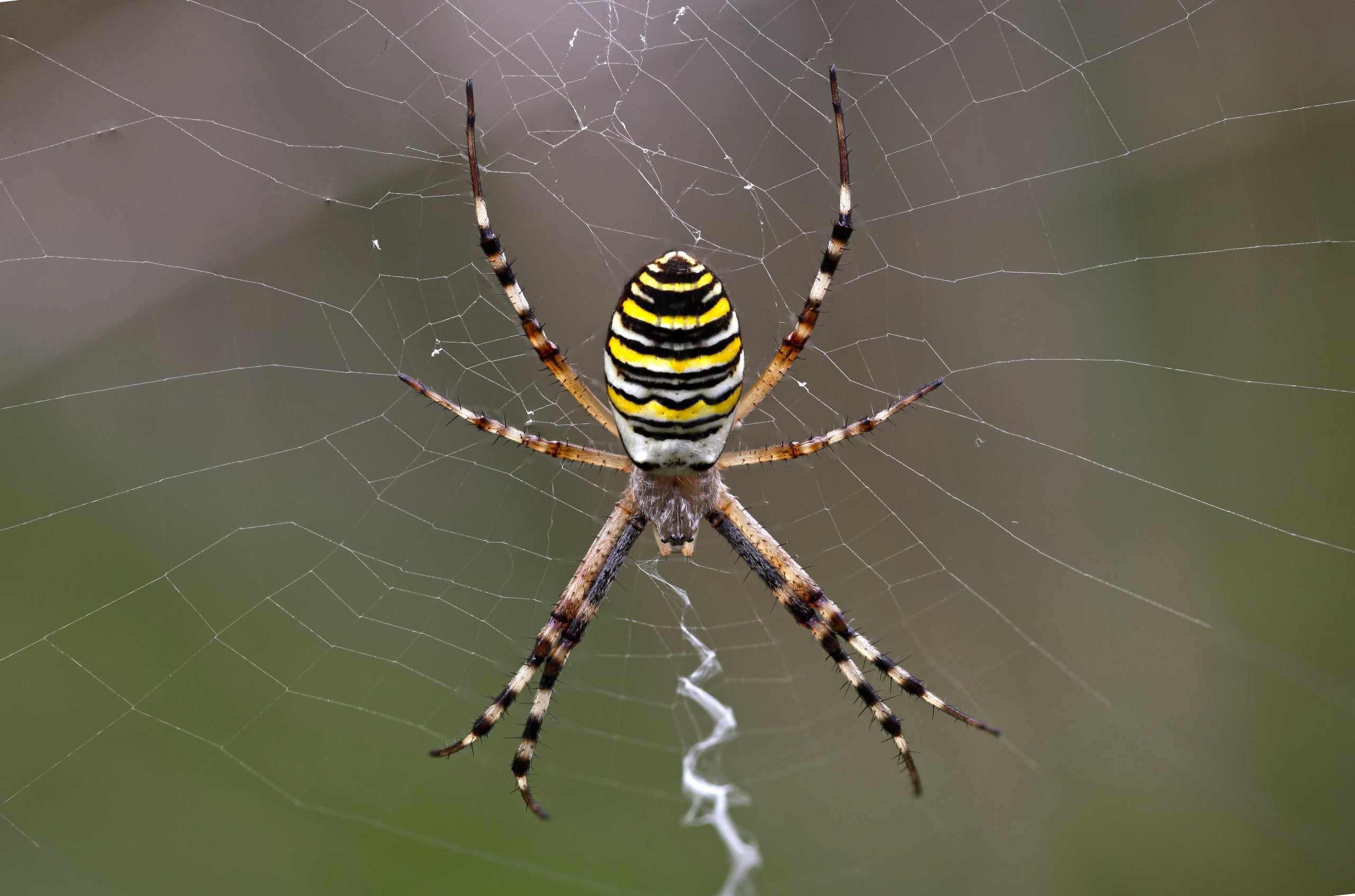
Vortrag von Andreas Vilcinskas: Tiergifte und Genomik
23.04.2021
Über 200.000 Tierarten produzieren Gifte, um sich gegen Feinde zu verteidigen oder ihre Beute zu töten. Diese Gifte sind eine kaum erschlossene Bioressource für die Entwicklung neuer Medikamente. Im Vortrag „Tiergifte und Genomik: Tiergifte als Bioressource für neue Medikamente“ von Prof. Dr. Andreas Vilcinskas (LOEWE-TBG / Fraunhofer-IME) geht es darum, wie neue Forschungsmethoden eine gezieltere Suche nach neuen Wirkstoffen ermöglichen. Der Vortrag findet am Mittwoch, 23. April, um 19.15 Uhr digital statt. Einen Livestream finden Sie unter www.senckenberg.de/live. Die Veranstaltung ist Teil der Senckenberg-Vortragsreihe „Bauplan der Natur – Wie Genomik unseren Blick auf die biologische Vielfalt revolutioniert“. Weitere Infos unter https://senckenberg.de/bauplandernatur (Foto: Tim Lüddecke)
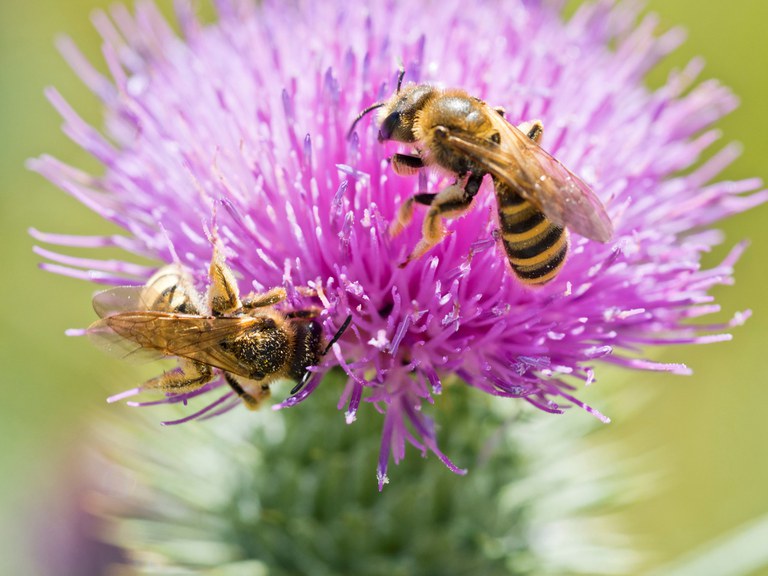
Artikel über Forschungsnetzwerk zu Tiergiften erschienen
13.04.2021
Zum Forschungsnetzwerk COST Action European Venom Network (EUVEN CA19144), Synergien und Perspektiven der modernen Tiergift-Forschung ist kürzlich ein Fachartikel erschienen. TBG-Forscher Dr. Björn M. von Reumont ist Ko-Autor der Studie und Mitglied im Management Komitee für Deutschland. Das Netzwerk vereint europäische Tiergift-Forscher*innen mit dem Ziel, Protokolle und Methoden zu entwickeln, technologische Verfahren und Tiermodelle zu etablieren und bisher unbekannte giftige Tierarten und die Wirkweise ihrer Gifte zu erforschen. Dazu gehört auch die Zusammenarbeit mit Unternehmen, denn die Anwendung der neuen Erkenntnisse unter anderem für biomedizinische, diagnostische und agrochemische Zwecke ist ein wichtiges Ziel. Lesen Sie den Artikel in „GigaScience“ und die Pressemitteilung der Justus-Liebig-Universität Gießen. (Foto: B. M. von Reumont)
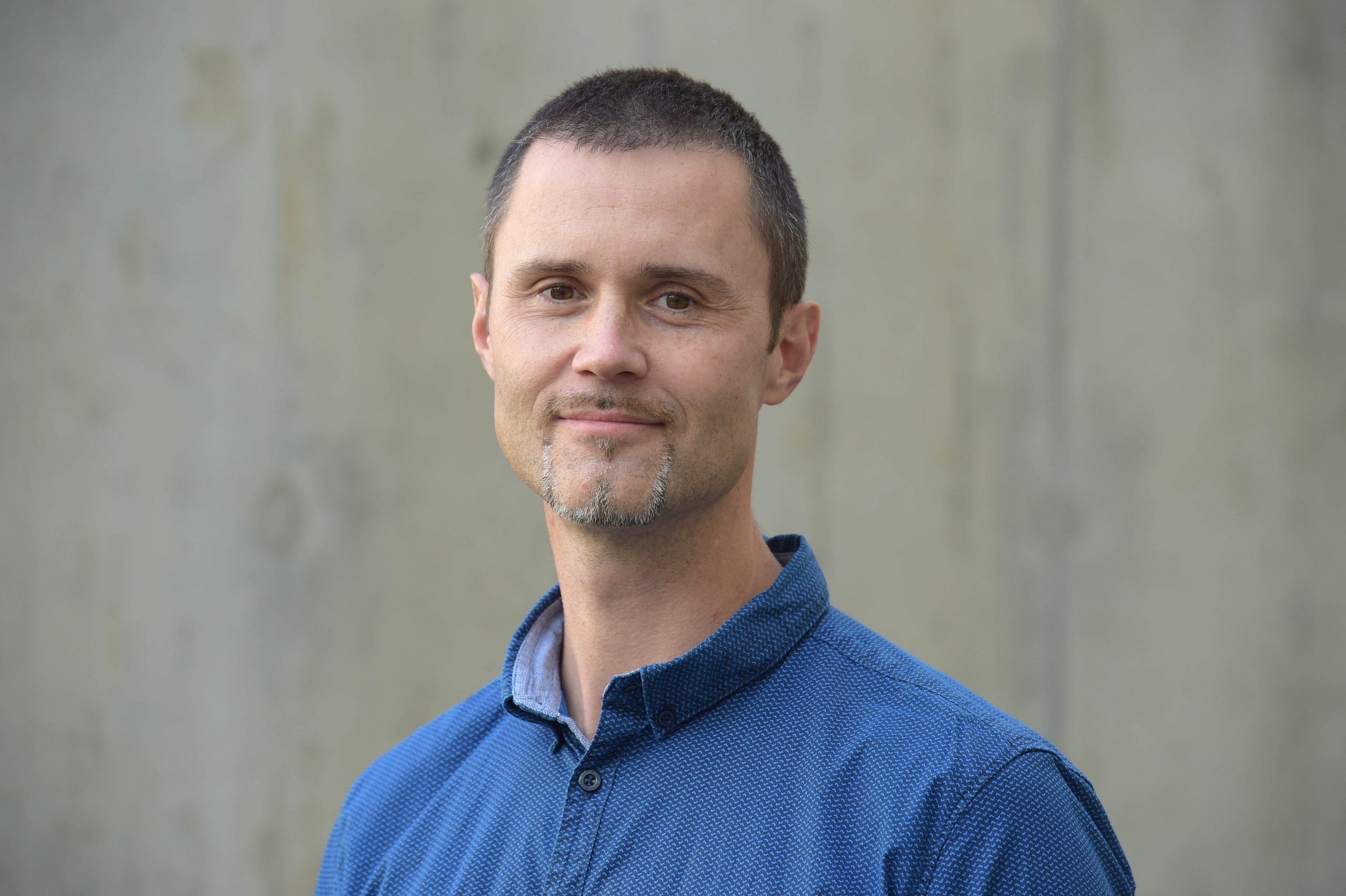
Vortrag von Michael Hiller: Hat Evolution wirklich stattgefunden?
08.04.2021
Die Vielfalt der Arten hat sich im Laufe vieler Millionen Jahre durch Evolution entwickelt. Durch Prozesse wie Variation und Selektion sind bestimmte Merkmale entstanden, andere verschwunden – so die Lehrmeinung. Aber stimmt das eigentlich? Oder wurden der Mensch und andere Spezies von einem intelligenten Wesen erschaffen, wie einige glauben? In seinem Vortrag „Hat Evolution wirklich stattgefunden? Belege aus der Paläontologie, Entwicklungsbiologie und Genom-Forschung“ spricht Prof. Dr. Michael Hiller vom LOEWE-Zentrum für Translationale Biodiversitätsgenomik über stichhaltige Argumente sowie äußerliche und genetische Ähnlichkeiten zwischen Arten. Der Vortrag findet am Mittwoch, 14. April, um 19.15 Uhr digital statt. Einen Livestream finden Sie unter www.senckenberg.de/live. Die Veranstaltung ist Teil der Senckenberg-Vortragsreihe „Bauplan der Natur – Wie Genomik unseren Blick auf die biologische Vielfalt revolutioniert“. Weitere Infos unter https://senckenberg.de/bauplandernatur
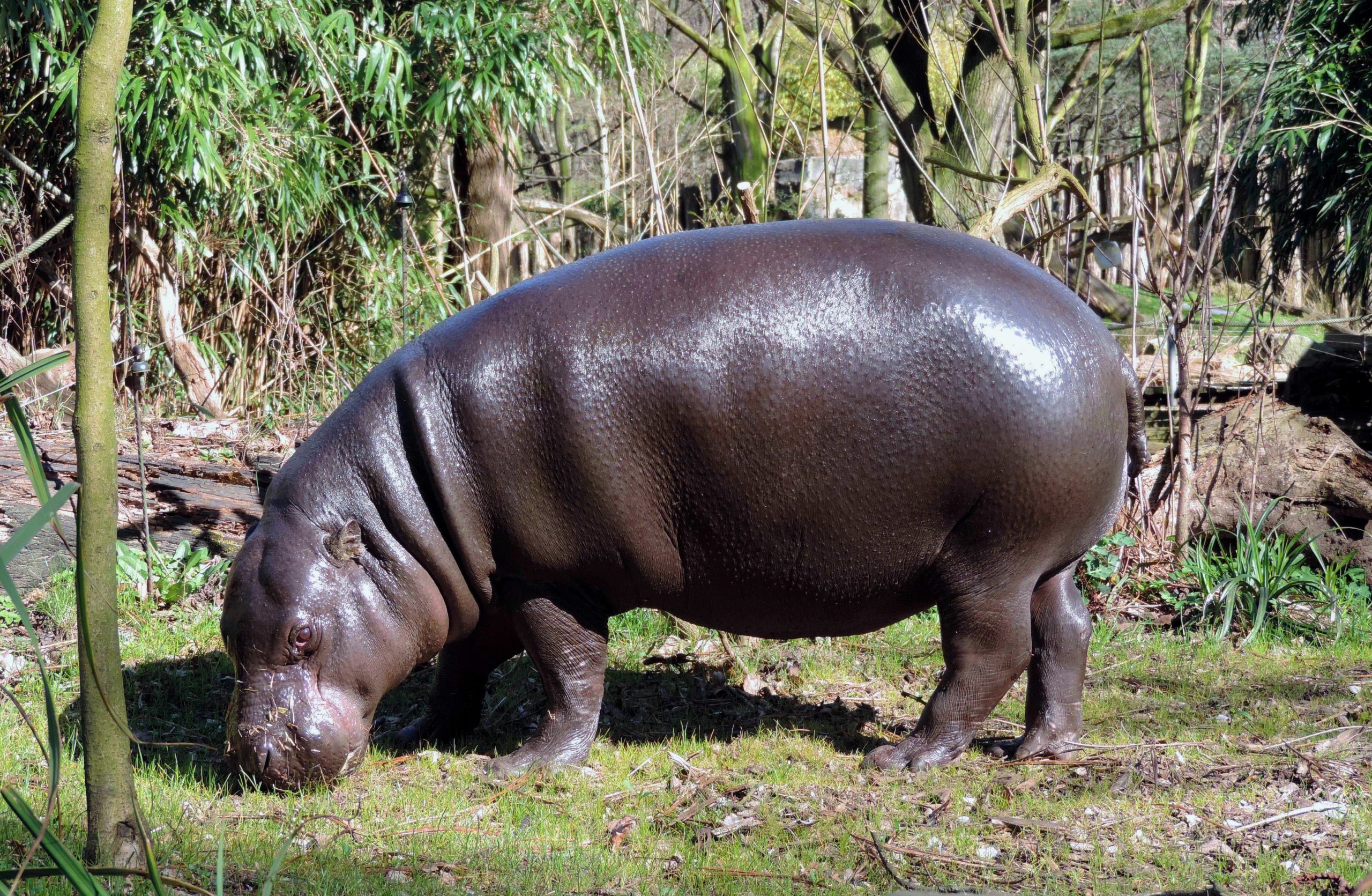
Hautnah: Wie Säuger das Wasser zurückeroberten
06.04.2021
Neue Einblicke in die Evolution wasserlebender Säugetiere: Die glatte, fast haarlose Haut von Flusspferden und Walen sieht zwar ähnlich aus, hat sich aber unabhängig voneinander entwickelt. Das zeigen Genomanalysen und Gewebeuntersuchungen, an denen Michael Hiller vom LOEWE-Zentrum für Translationale Biodiversitätsgenomik beteiligt war. Bisher dachte man, die ans Wasserleben angepasste Haut dieser Säugetiere gehe auf einen gemeinsamen amphibischen Vorfahren zurück. Die in „Current Biology“ veröffentlichte Studie widerspricht jedoch dieser Annahme. Sie legt nahe, dass ihr letzter gemeinsamer Vorfahre ein Landbewohner war. „Aquatische“ Haut mit speziellen Eigenschaften ist demnach mehrmals in der Stammesgeschichte der Säugetiere entstanden. Lesen Sie den Artikel in „Current Biology“ und die Pressemitteilung bei Senckenberg. (Foto: Zoo Duisburg gGmbH)
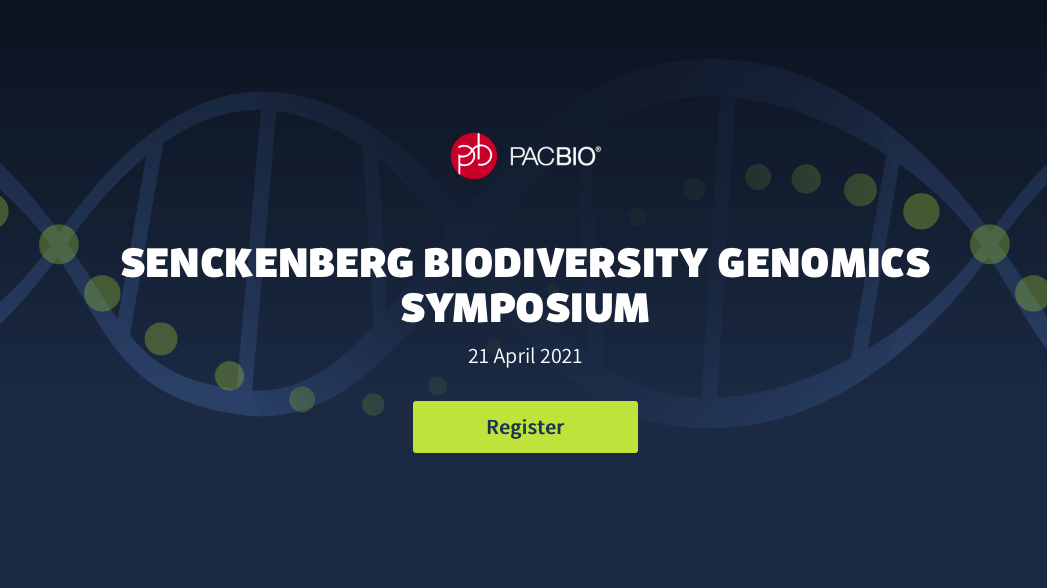
Symposium zu Biodiversitätsgenomik – Agenda online, Anmeldung noch möglich
29.03.2021
Die Agenda für das „Senckenberg Biodiversity Genomics Symposium“ (21. April 2021) mit Zeitplan, Referenten und Diskussionsslots ist online. Zu den Referenten gehören die TBG-Wissenschaftler*innen Prof. Dr. Miklos Bálint und Prof. Dr. Imke Schmitt. Die Anmeldung für die eintägige Veranstaltung ist kostenlos, aber erforderlich. Das Symposium organisieren LOEWE-TBG, das Senckenberg Forschungsinstitut und PacBio. Internationale Wissenschaftler*innen berichten in diesem Rahmen über ihre Erfahrungen mit der hochpräzisen Long-Read-Sequenzierung. Mithilfe der auch als HiFi-Sequenzierung bekannten Methode generieren auch TBG-Forscher*innen Genome von verschiedenen Organismen. Die Veranstaltung bietet neben Vorträgen auch Gespräche und eine Postersession sowie Raum zum Austausch. Registrierung und weitere Informationen: https://events.pacb.com/senckenberg-biodiversity
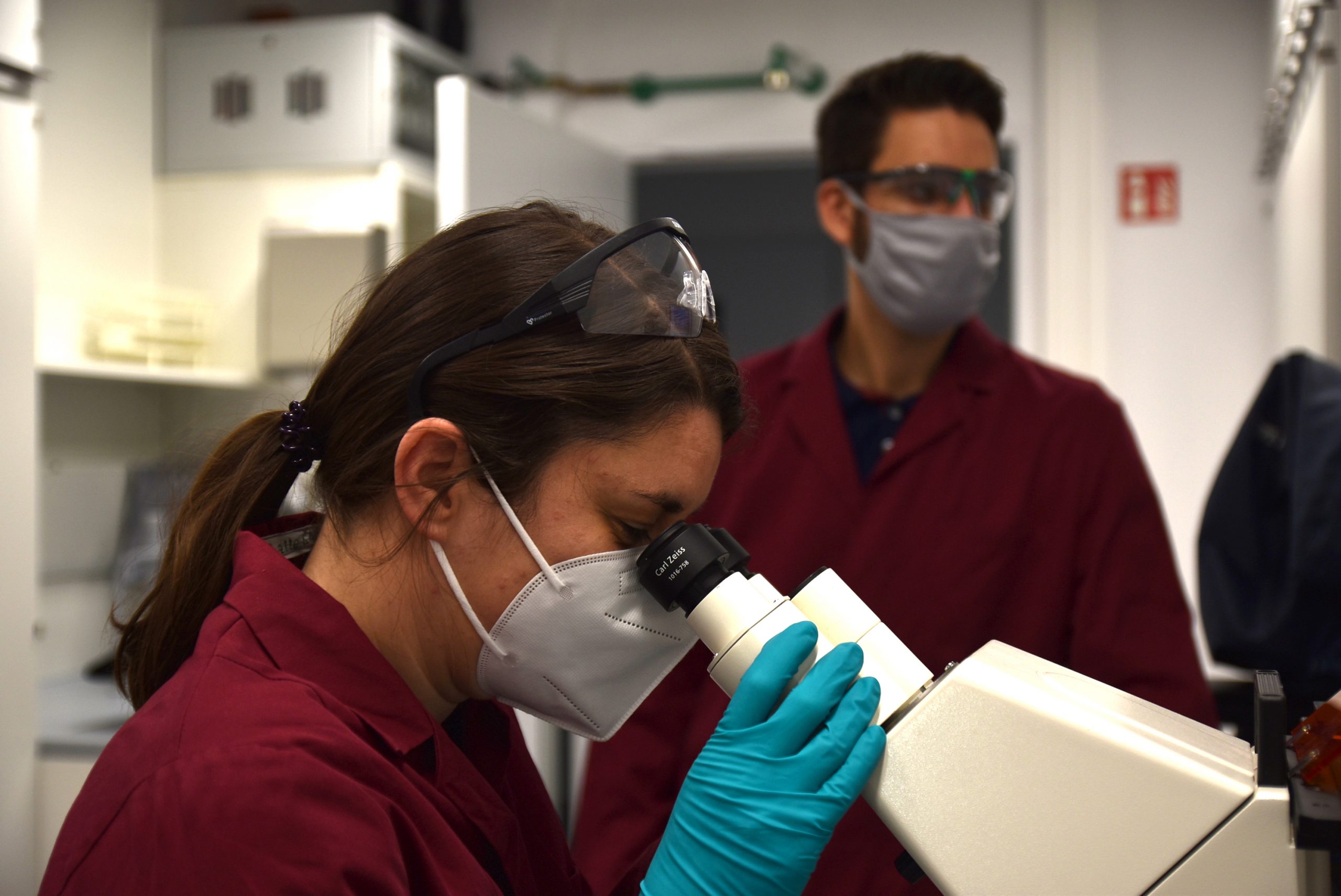
Vortrag: Dr. Kornelia Hardes über Forschung an Influenza
26.03.2021
Influenza-Pandemien haben in der Vergangenheit Millionen Menschen krank gemacht und Hunderttausende das Leben gekostet. Mit welchen Methoden die genomische Forschung dazu beitragen kann, künftige Ausbrüche einzudämmen oder zu verhindern, ist Thema des Vortrags von TBG-Projektleiterin Dr. Kornelia Hardes vom Fraunhofer-Institut für Molekularbiologie und Angewandte Oekologie (IME). Ihr Vortrag am Mittwoch, 31. März, um 19.15 Uhr läutet die zweite Runde der Senckenberg-Vortragsreihe „Bauplan der Natur – Wie Genomik unseren Blick auf die biologische Vielfalt revolutioniert“ ein. Lesen sie alle Infos bei Senckenberg. (Foto: Désirée Schulz/Fraunhofer)
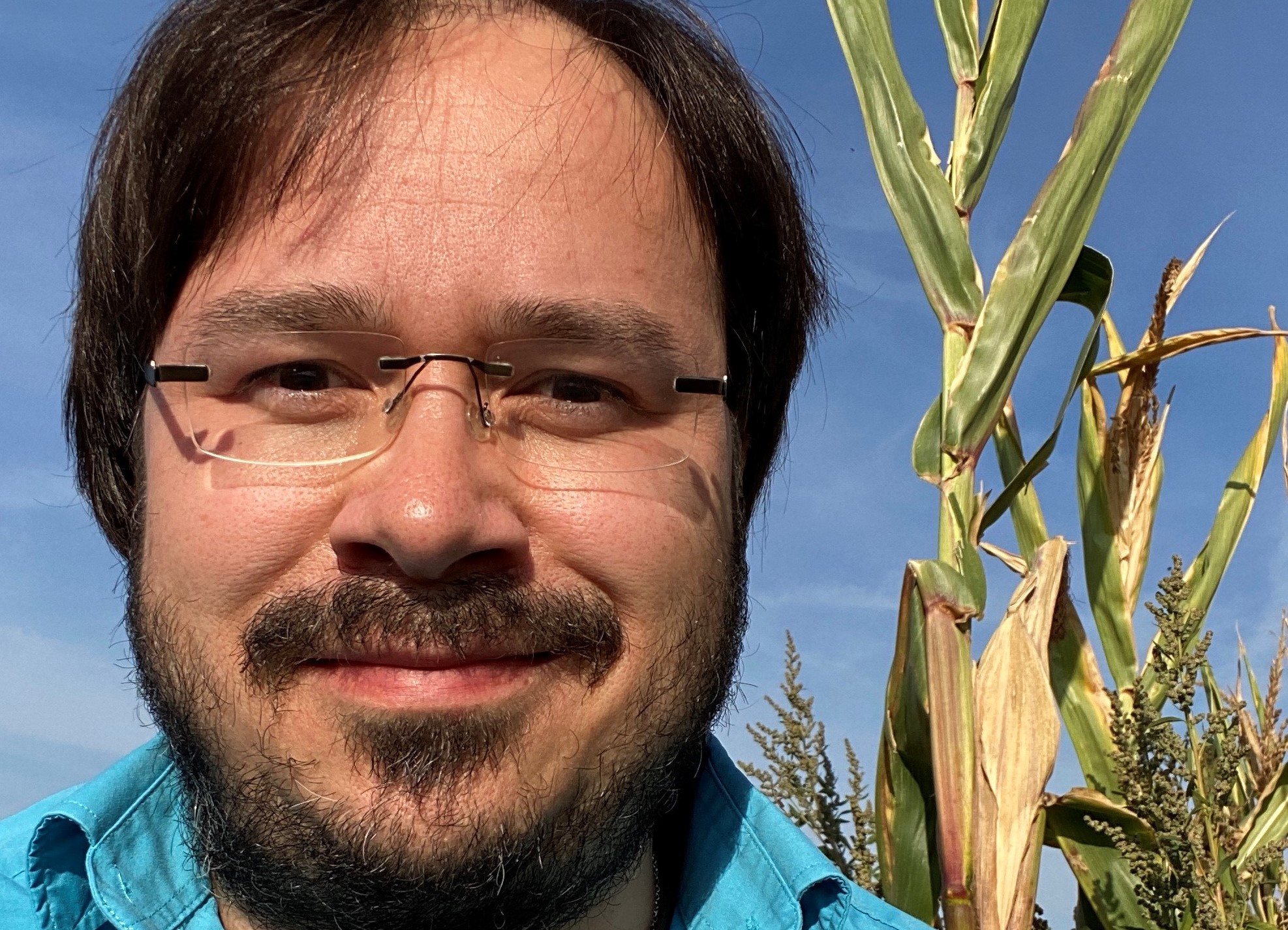
Ausgezeichneter Pflanzenschutz: Heitefuß-Preis für Marco Thines
18.03.2021
Die Deutsche Phytomedizinische Gesellschaft e.V. (DPG) verleiht TBG-PI Prof. Dr. Marco Thines vom Senckenberg Biodiversität und Klima Forschungszentrum in Frankfurt für seine Verdienste in der Erforschung filamentöser Schaderreger ihren Wissenschaftspreis. Der Rudolf Heitefuß Preis wird für herausragende wissenschaftliche Leistungen verliehen. Thines erforscht die biologische Vielfalt von Pflanzenpathogenen wie Scheinpilze (Oomyceten) und Brandpilze sowie ihren Wirten. Zu den Oomyceten gehören die Erreger weit verbreiteter Pflanzenkrankheiten, wie der Kraut- und Knollenfäule bei Kartoffeln und Tomaten sowie die Falschen Mehltaue. Im ökologischen Anbau von Getreide sind Brandpilze von zunehmender Bedeutung. Weltweit verursachen pflanzenparasitische Oomyceten und Brandpilze jährlich Verluste in Milliardenhöhe. Trotz ihrer wirtschaftlichen Bedeutung wurde bisher nur ein Bruchteil ihrer tatsächlichen Biodiversität entdeckt. Am LOEWE-TBG leitet Thines das Projekt „Landscape genomics of plant-pathogen interactions“. Lesen sie alle Infos bei Senckenberg. (Foto: Marco Thines)

TBG startet öffentliche Vortragsreihe zur Genomik
08.03.2021
Wissenschaftler des LOEWE-Zentrums für Translationale Biodiversitätsgenomik (TBG) und Gastredner aus anderen Institutionen geben ab März Einblicke in die aktuelle Genomforschung. Die Vortragsreihe „Bauplan der Natur – Wie Genomik unseren Blick auf die biologische Vielfalt revolutioniert“ startet am Mittwoch, den 17. März, mit TBG-Sprecher Prof. Dr. Axel Janke. In seinem Vortrag spricht er über Grundlagen der Genomik und stellt LOEWE-TBG vor. Alle Vorträge sind allgemein verständlich gehalten und für eine breites Publikum geeignet. Präsentationen gibt es bis Juli etwa alle zwei Wochen mittwochs um 19:15 Uhr. Wegen der aktuellen Lage finden die Vorträge derzeit digital statt. Die Reihe wird in Kooperation mit Senckenberg veranstaltet. Weitere Informationen zu den einzelnen Vorträgen und zur Teilnahme gibt es hier: www.senckenberg.de/bauplandernatur
Bild: © iStock.com/ktsimage

TBG veranstaltet Symposium zu Biodiversitätsgenomik – Anmeldung jetzt möglich
06.03.2021
Das „Senckenberg Biodiversity Genomics Symposium“ findet am 21. April 2021 statt. Die eintägige Veranstaltung organisieren LOEWE-TBG, das Senckenberg Forschungsinstitut und PacBio zusammen. Internationale Wissenschaftler*innen berichten auf dem Symposium über ihre Erfahrungen mit der hochpräzisen Long-Read-Sequenzierung. Mithilfe der auch als HiFi-Sequenzierung bekannten Methode generieren auch TBG-Forscher*innen Genome von taxonomisch vielfältigen Organismen, von Pflanzen über Flechten, Insekten und Schnecken bis hin zu den Wirbeltieren in Referenzqualität und beantworten so wichtige Forschungsfragen. Die Veranstaltung bietet neben Vorträgen auch Gespräche und eine Postersession und Raum zum Austausch zwischen Wissenschaftler*innen. Einreichung von Abstracts. Registrierung und weitere Informationen: https://events.pacb.com/senckenberg-biodiversity

Projekt erfolgreich bei Industrie-Ausschreibung für Ersatz von tierischen Komponenten
19.02.2021
Prof. Henner Hollert und Dr. Andreas Schiwy von der Abteilung für Evolutionsökologie und Umwelttoxikologie der Goethe-Universität und LOEWE Zentrum TBG wollen in ihrem Projekt zusammen mit der Umwelttoxikologin Prof. Beate Escher vom Helmholtz-Zentrum für Umweltforschung (UFZ) Leipzig sowie dem Unternehmen BiodetectionsSystems aus Amsterdam und Scinora aus Heidelberg Alternativen zu den Tierkomponenten in der toxikologischen Forschung finden. Mit ihrem Projekt haben sie den „CRACK IT“-Innovationswettbewerb des NC3Rs gewonnen, einer britischen Organisation, die sich für den Ersatz von Tierversuchen in der Forschung einsetzt. Der Wettbewerb wird von AstraZeneca und Unilever gesponsert.
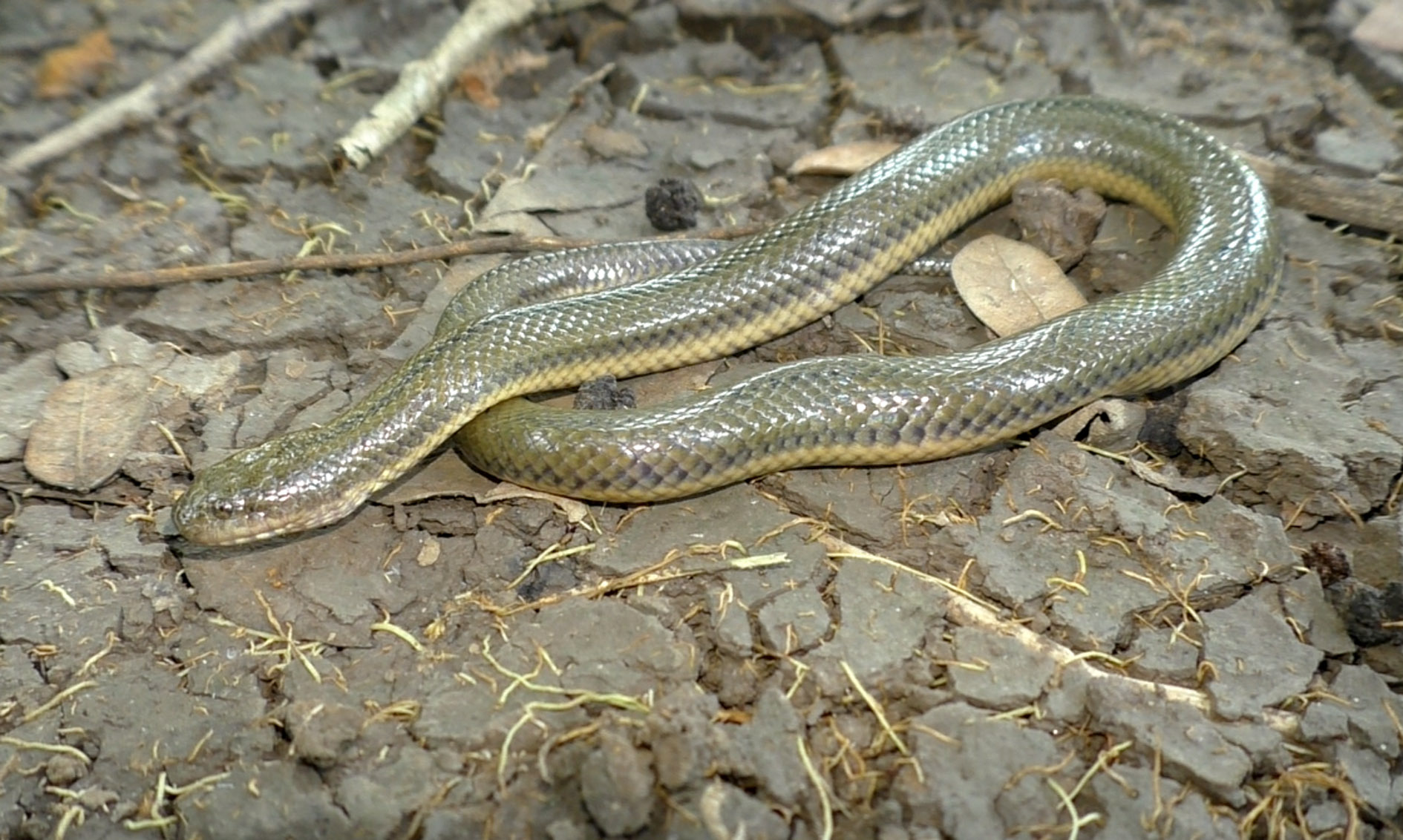
Holotypus einer neu entdeckten Schlangenart am LOEWE-TBG sequenziert
15.02.2021
Senckenberg-Wissenschaftler Prof. Dr. Gunther Köhler hat zusammen mit einem internationalen Team der Universität East Yangon in Myanmar eine neue Wasserschlangenart entdeckt und erstmals beschrieben. Wie morphologische und genetische Untersuchungen zeigen, ist Myanophis thanlyinensis die einzige bekannte Vertreterin ihrer Gattung, berichtete das Team vor Kurzem im Fachjournal „Zootaxa“. Als Novum wurde das Genom des Holotypus – des namensgebenden Schlangen-Exemplars – am LOEWE-TBG sequenziert. Dadurch wurde das Erbgut der neu entdeckten Art für weitere Forschungszwecke und für molekularbiologische Untersuchungen zur Verfügung gestellt.

Molluske des Jahres 2021: Der Große Argonaut
01.02.2021
Heute wurde der Große Argonaut (Argonauta argo) zur „Molluske des Jahres 2021“ im Rahmen eines besonderen „Weichtier-Wettbewerbs“ gekürt. Im Dezember letzten Jahres hatten verschiedene internationale Forschungseinrichtungen und Molluskenliebhaber*innen 122 Nominierungen für den Titel eingereicht. Eine Jury, bestehend aus den Initiator*innen des Projektes, kürte daraus fünf Mollusken-Arten, die als Finalisten in die zweite Runde einzogen.
In einer öffentlichen Abstimmung auf der Webseite des LOEWE-Zentrums für Translationale Biodiversitätsgenomik (TBG) konnten Interessierte zwei Wochen lang ihre Lieblingsmolluske wählen – insgesamt wurden fast 22.000 Stimmen abgegeben. Mit 36 Prozent setzte sich der Große Argonaut (Argonauta argo), ein pelagisch lebender Oktopus, gegen vier weitere Weichtiere durch und trägt jetzt den Titel „Molluske des Jahres 2021“. Die Forschenden am LOEWE-Zentrum TBG werden nun sein gesamtes Genom entschlüsseln.
Zur Pressemitteilung bei Senckenberg:
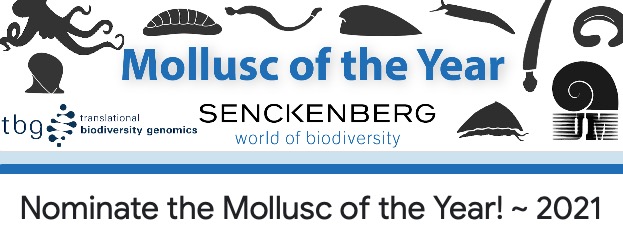
Nominate your favourite mollusc for FREE genome sequencing by the Senckenberg Museum and LOEWE-Translational Biodiversity Genomics centre!
30.11.2020
Let’s have a good start to 2021!! Senckenberg/LOEWE-TBG and Unitas Malacologica will select 5 top molluscs from the nominations, and the final winner will be determined by a popular vote in January.
Any living species of mollusc, in any habitat, anywhere in the world is eligible!
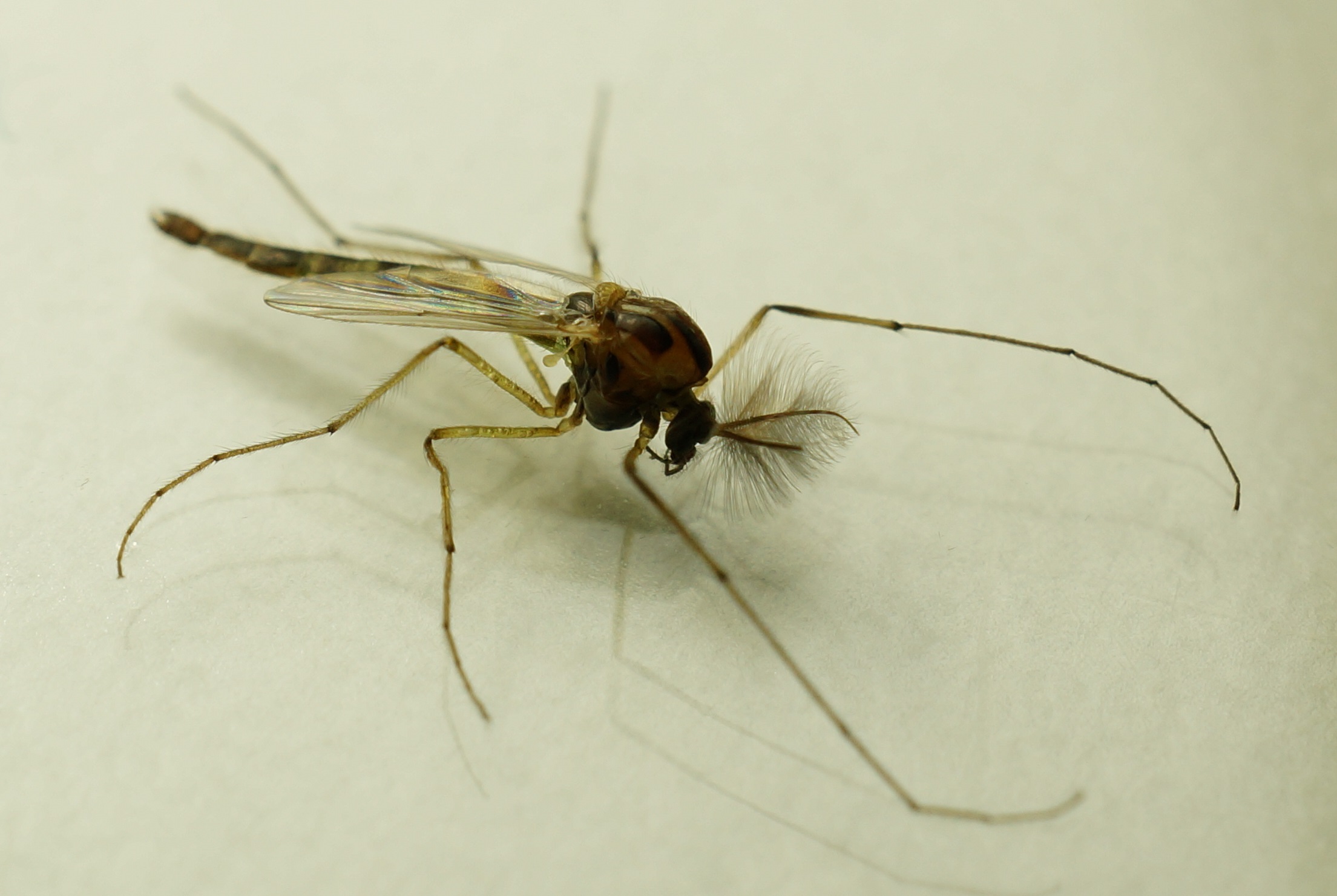
Researchers of the Senckenberg Biodiversity and Climate Research Centre and the LOEWE Centre for Translational Biodiversity Genomics (TBG) develop a new test to better assess environmental impact of substances
20.11.2020
(SGN/TBG press release on a publication in the journal Environmental Pollution)
Image: © Markus Pfenninger

New in the LOEWE TBG team: PI Dr. Kornelia Hardes, who has just been granted BMBF funding to establish her own junior research group in infection research and is heading the level three security laboratory at the new Fraunhofer Institute for Bioresources in Gießen.
01.10.2020
Read more:
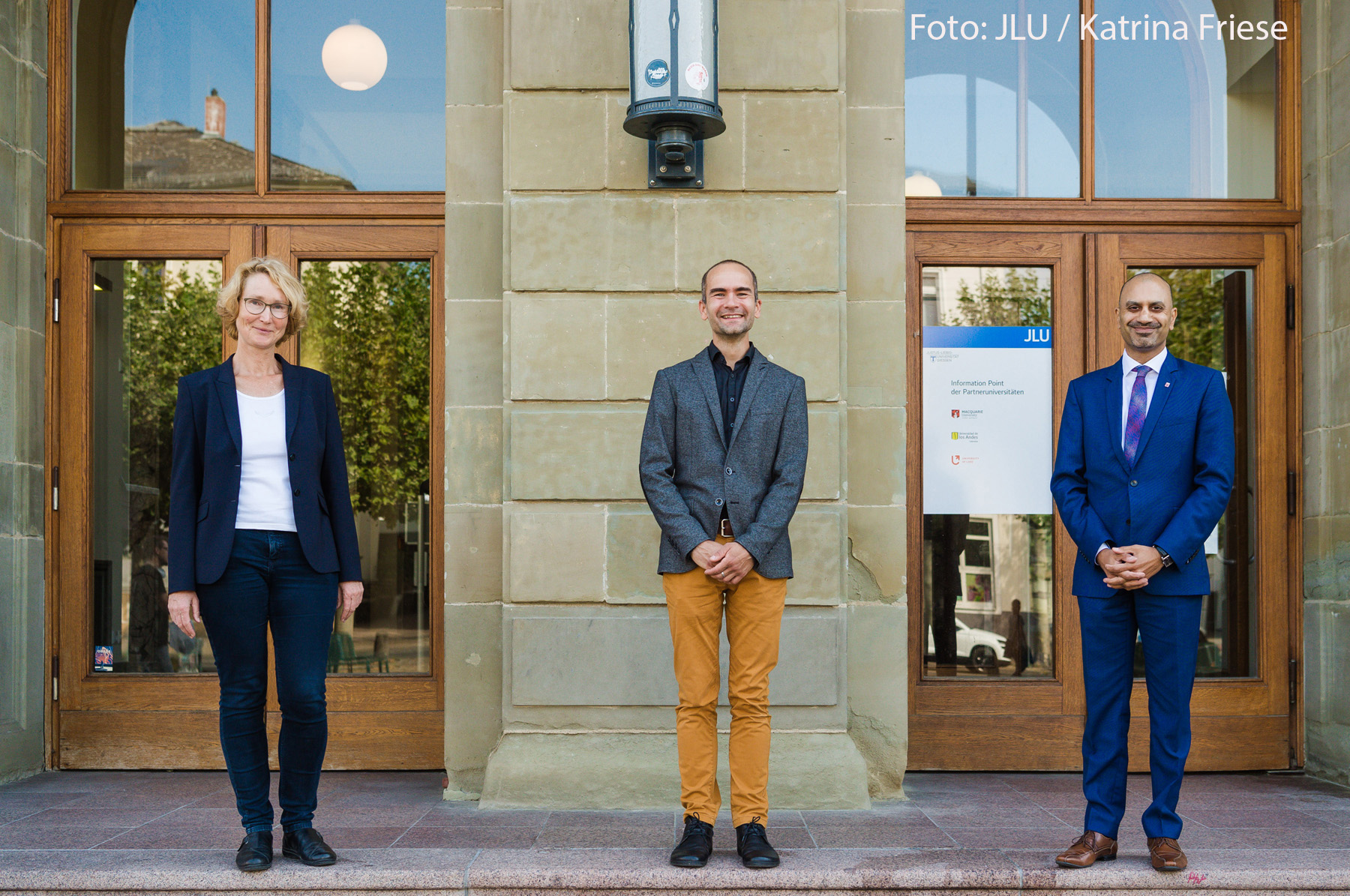
Measuring and monitoring biodiversity with molecular biological methods. Functional Environmental Genomics in Focus: Joint appointment of the University of Giessen and the Senckenberg Society for Nature Research
24.09.2020
(SGN/JLU press release on the appointment of PD Dr. rer. nat. Miklós Bálint as Professor and Head of the Project Area Functional Environmental Genomics of the LOEWE Centre for Translational BiodiversityGenomics (TBG))
Image: © JLU / Katrina Friese
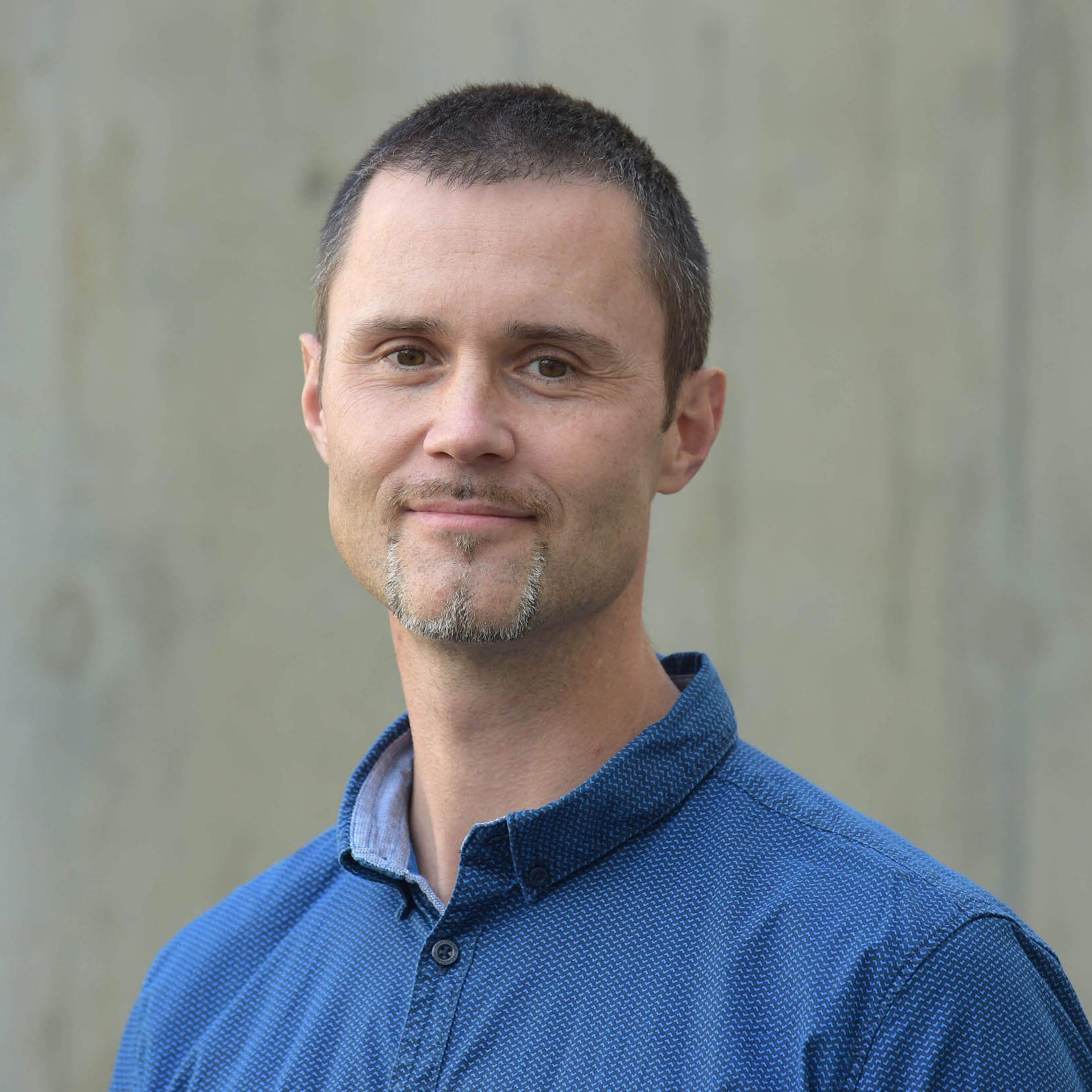
Characterize living beings and learn from them. Genomist Michael Hiller takes over new professorship at LOEWE Centre for Translational Biodiversity Genomics
02.09.2020
(TBG press release on the appointment of Dr. Michael Hiller as Professor at Senckenberg Society for Nature Research and Goethe University Frankfurt, and PI in the Project Area Comparative Genomics of the LOEWE Centre for Translational Biodiversity Genomics (TBG))
Read more:
Image: © Sven Tränkner/Senckenberg Gesellschaft für Naturforschung
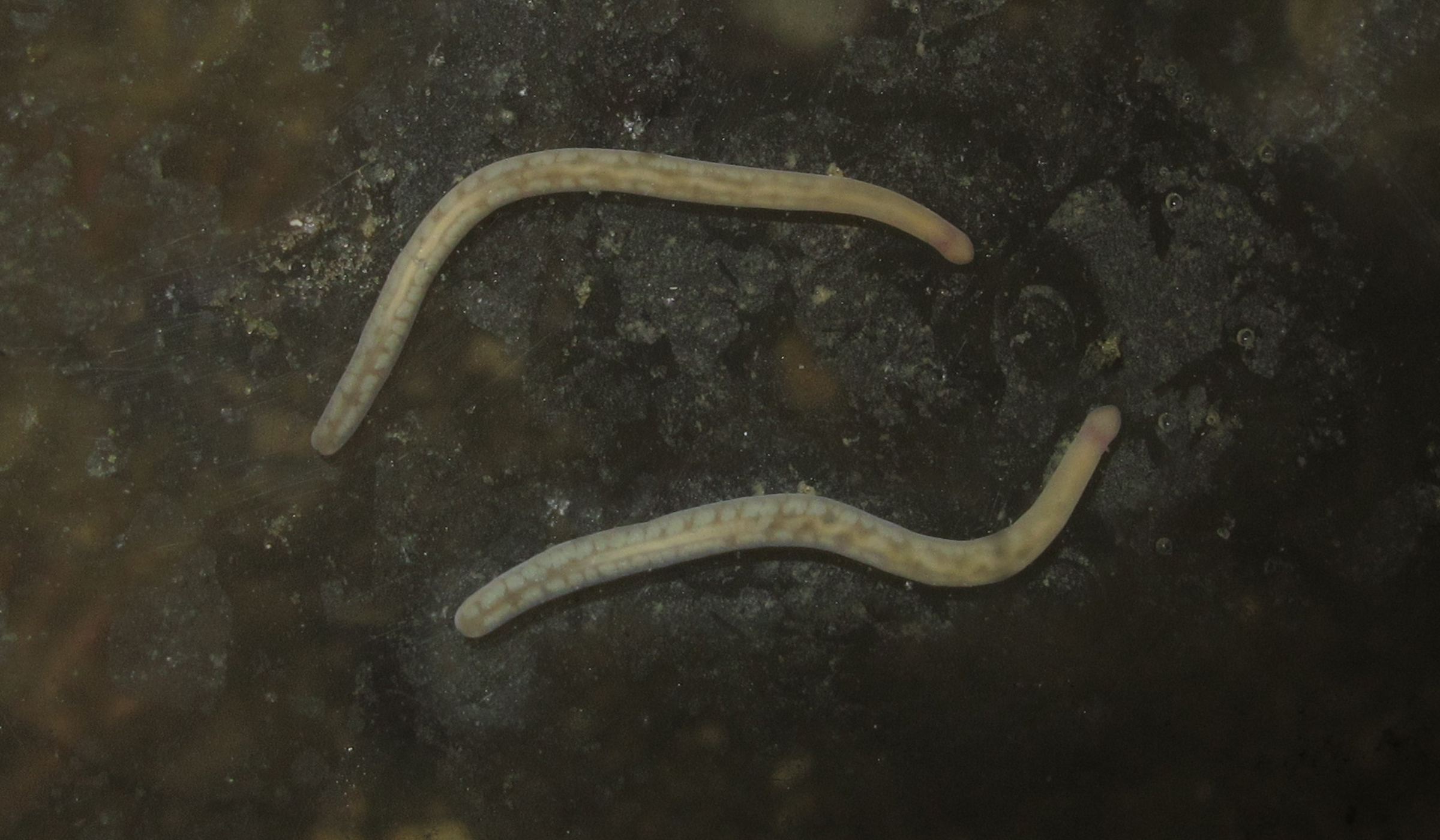
When the worm reaches for the poison. Research into native nematodes provides insight into the evolutionary development and economic use of animal toxins
10.08.2020
(TBG press release (in German) on a publication in the journal Marine Drugs)
read more
Image: © Rainer Borcherding / Schutzstation Wattenmeer
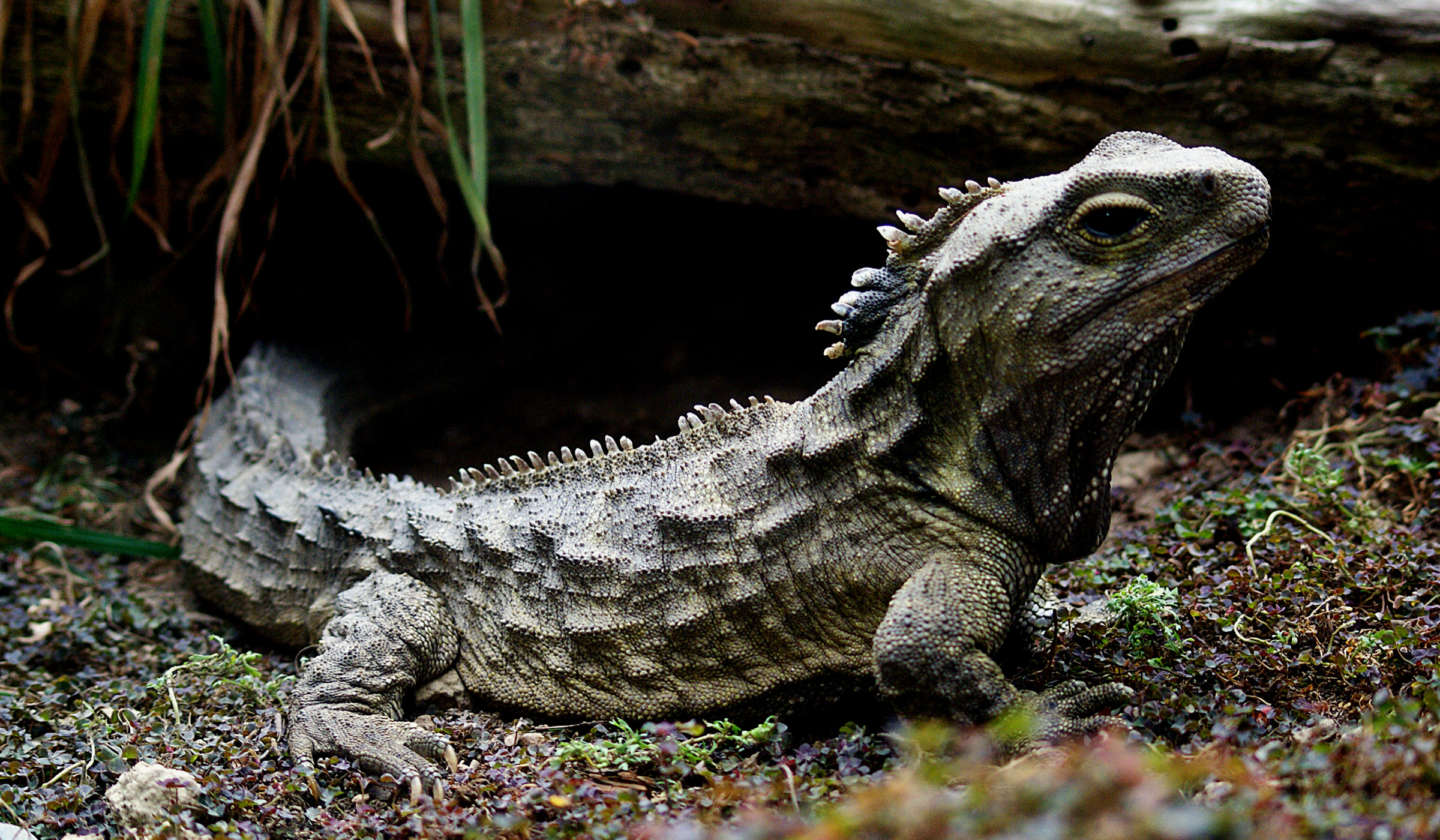
Evolutionary secret of "living fossil" revealed. The world's first sequencing of the tuatara genome sheds light on the relationship between reptiles and longevity in the animal kingdom
06.08.2020
(TBG press release (in German) on a publication in the journal Nature)
read more
Image: © Bernard Spragg. NZ
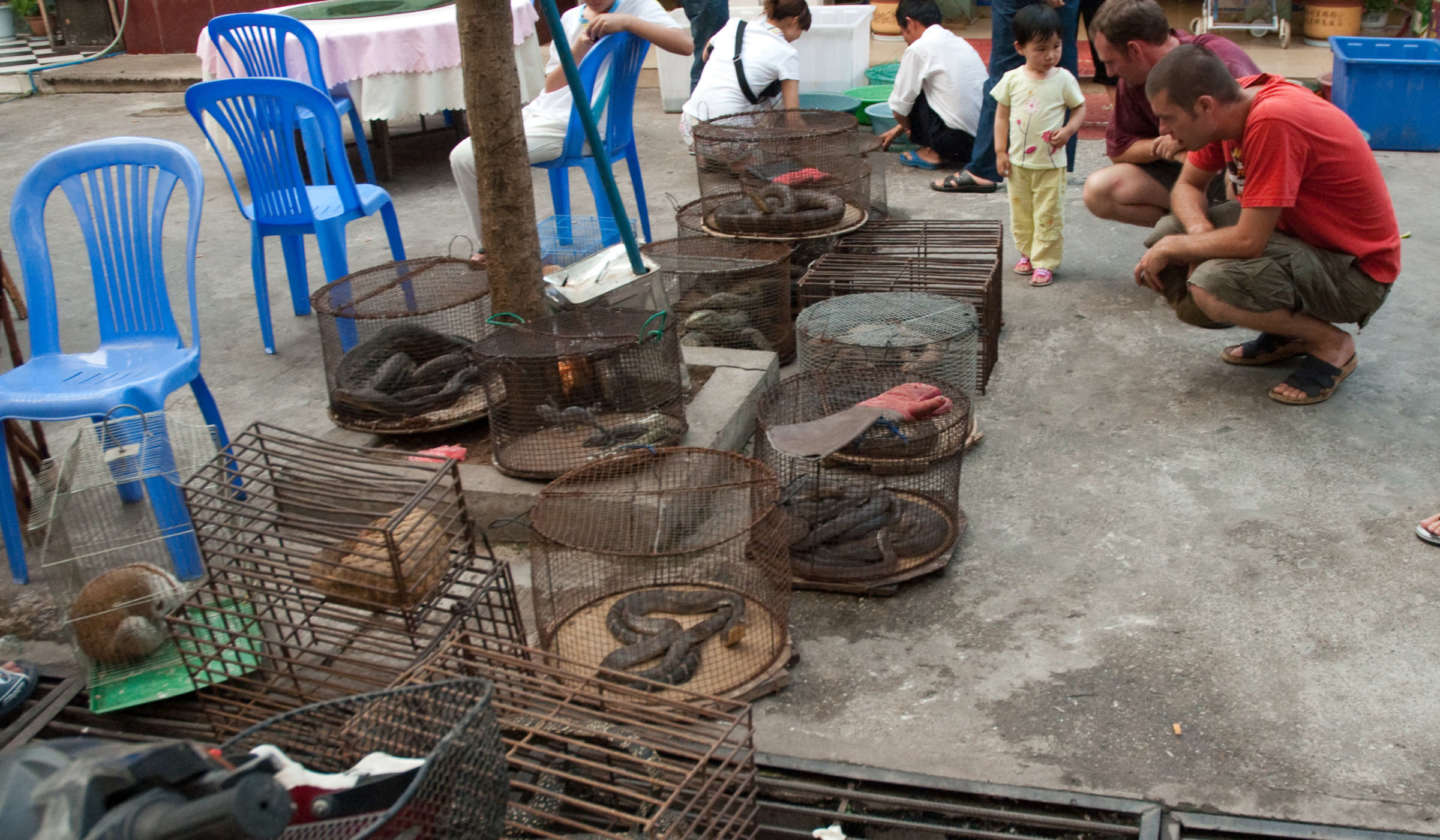
Early warning system for pandemics. International group of researchers develops strategies against virus transmission from wild animals to humans
10.07.2020
(TBG press release (in German) on a comment in the journal Science)
read more
Image: © Dan Bennett / CC BY
TBG-Press release regarding the international conference
25.02.2020
4th Annual Meeting in Conservation Genetics – From Genomes to Application“ held in Frankfurt am Main from 26.-28.02.2020 at the Senckenberg Research Institute and Natural History Museum (press release in German)
TBG-Press invitation to the international conference
25.02.2020
4th Annual Meeting in Conservation Genetics – From Genomes to Application“ held in Frankfurt am Main from 26.-28.02.2020 at the Senckenberg Research Institute and Natural History Museum (press invitation in German)
